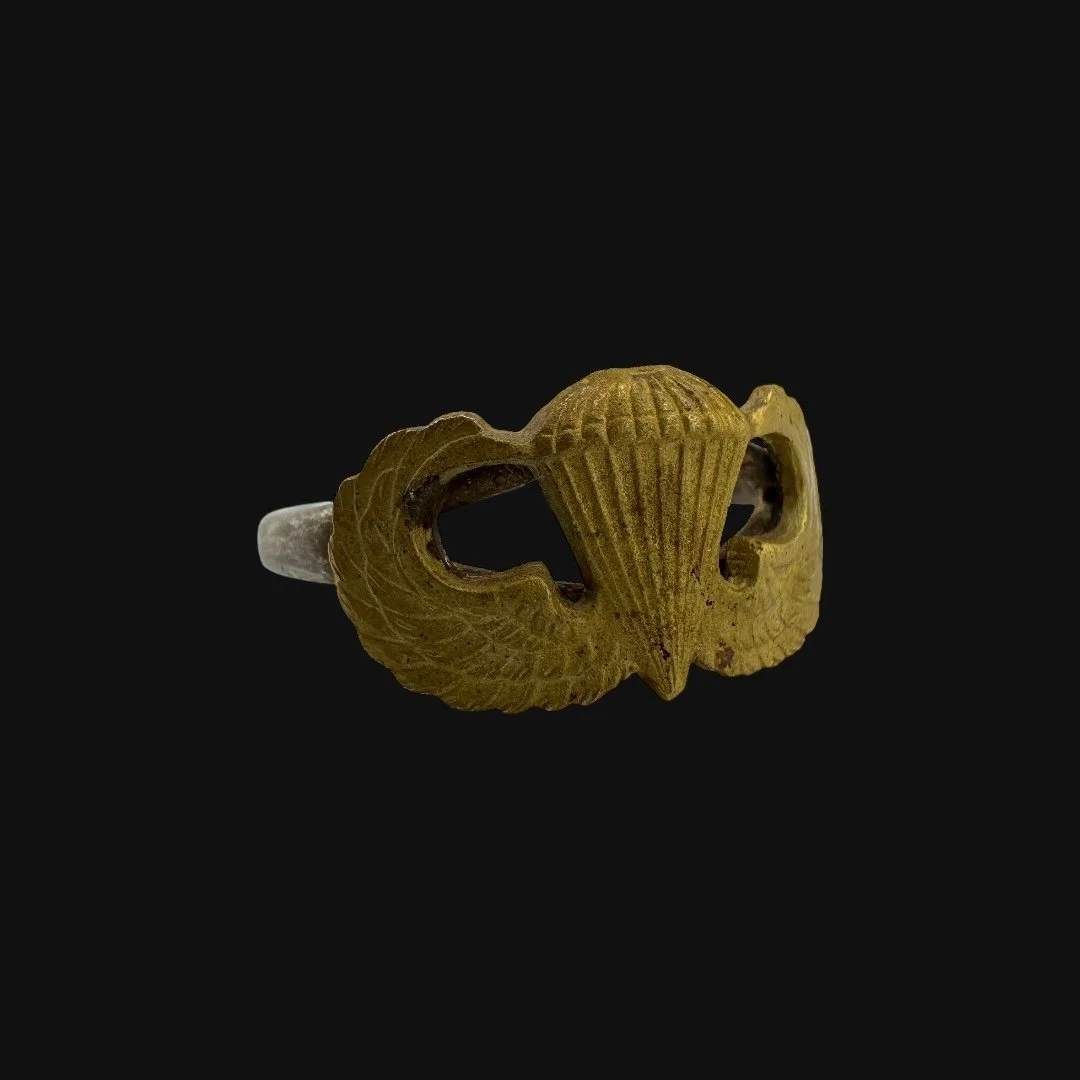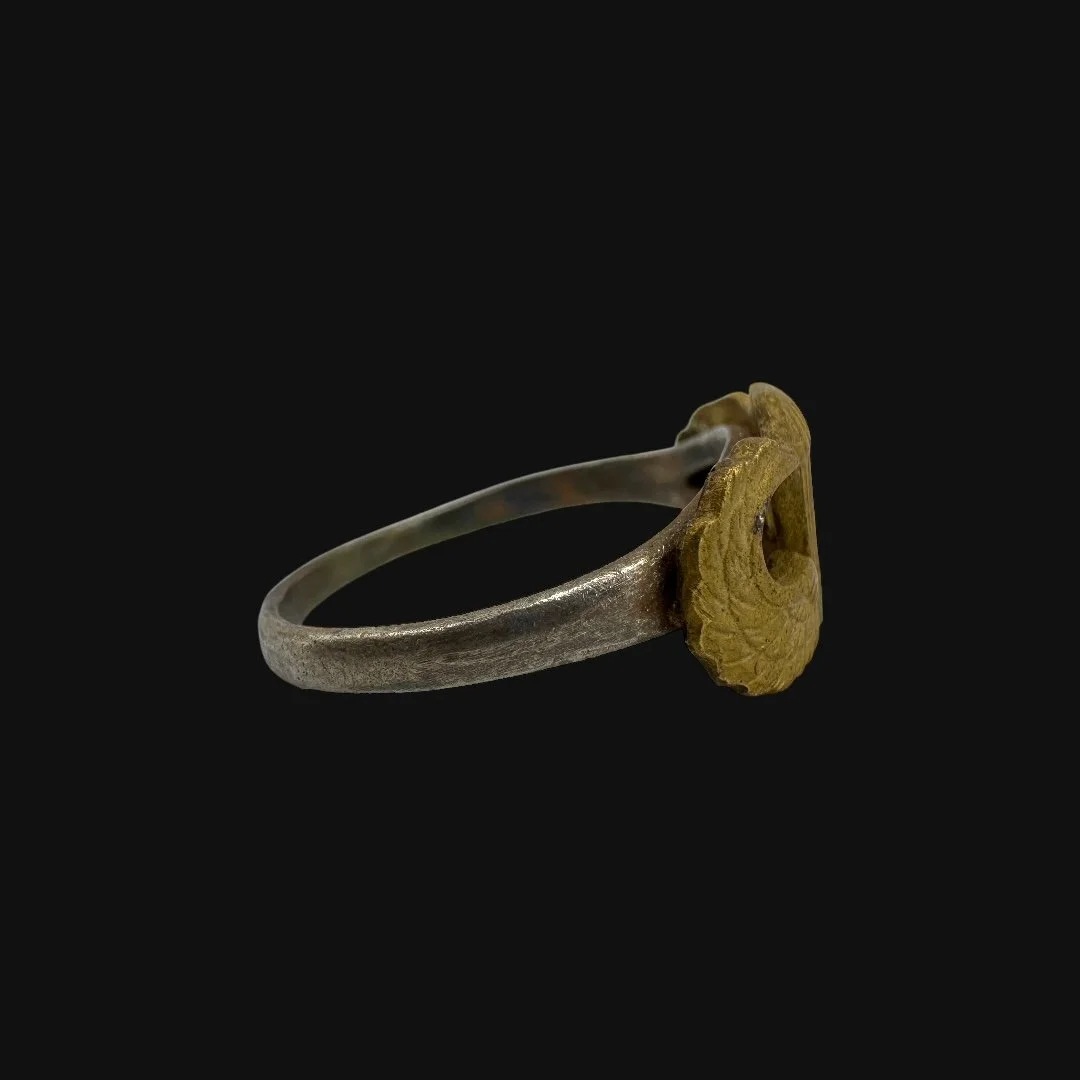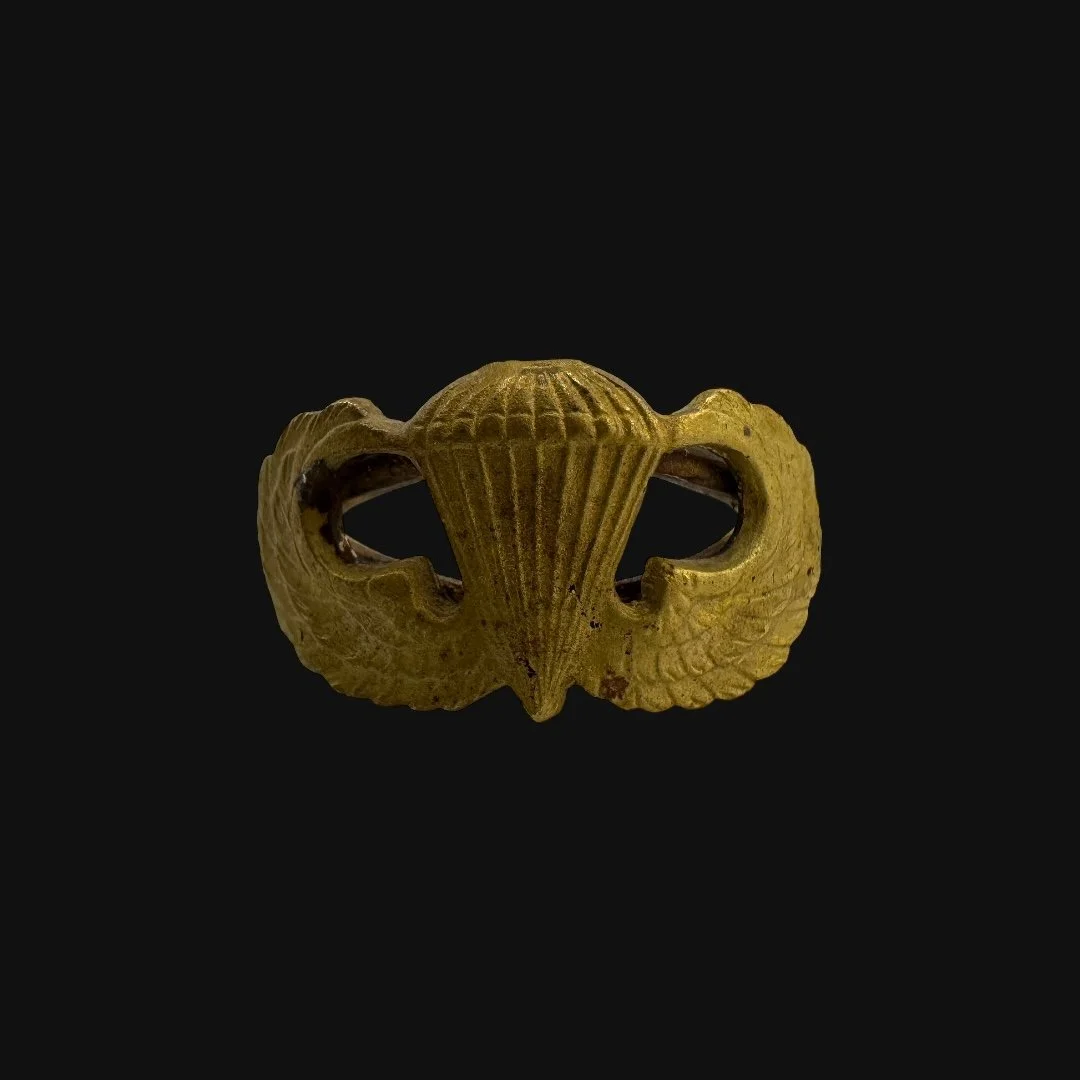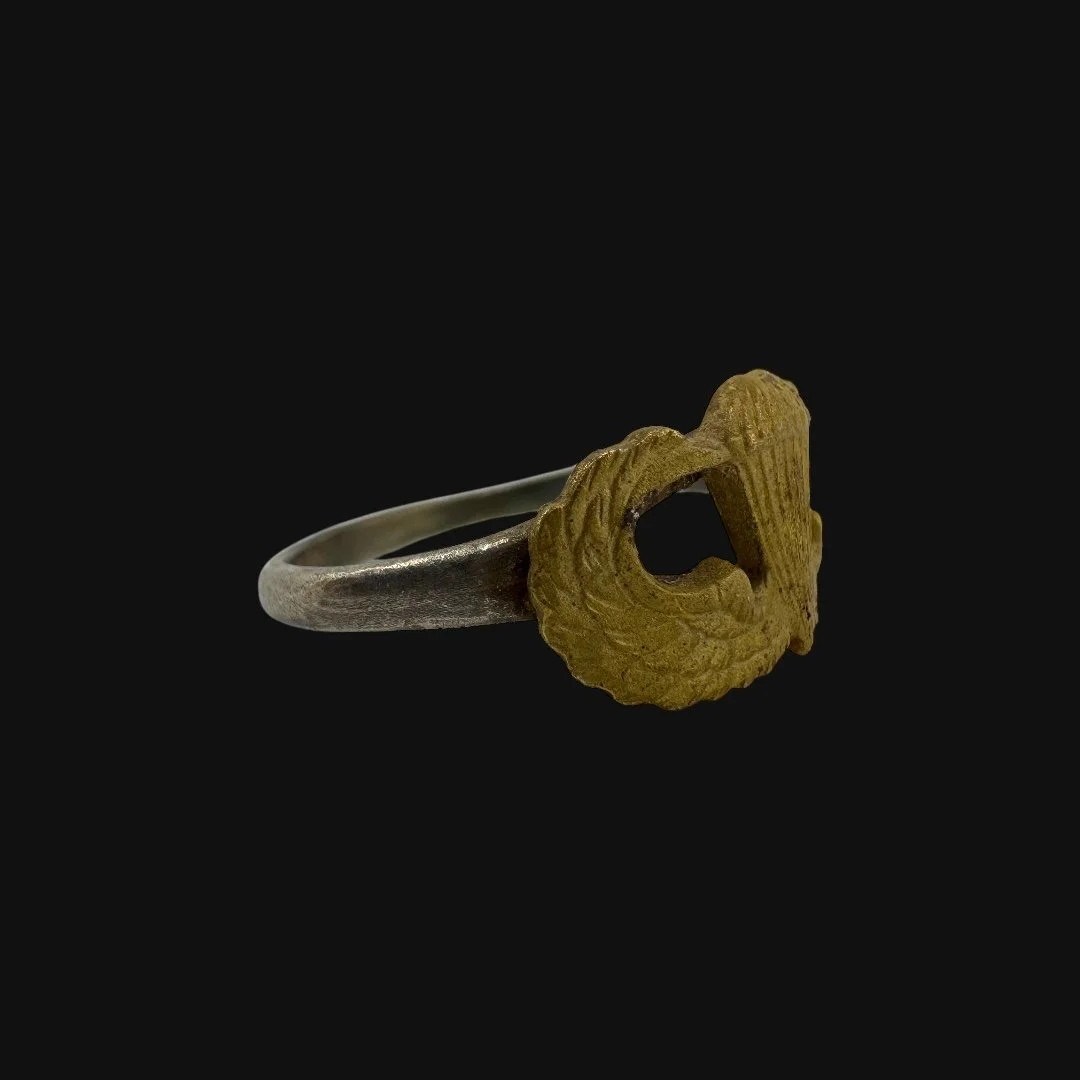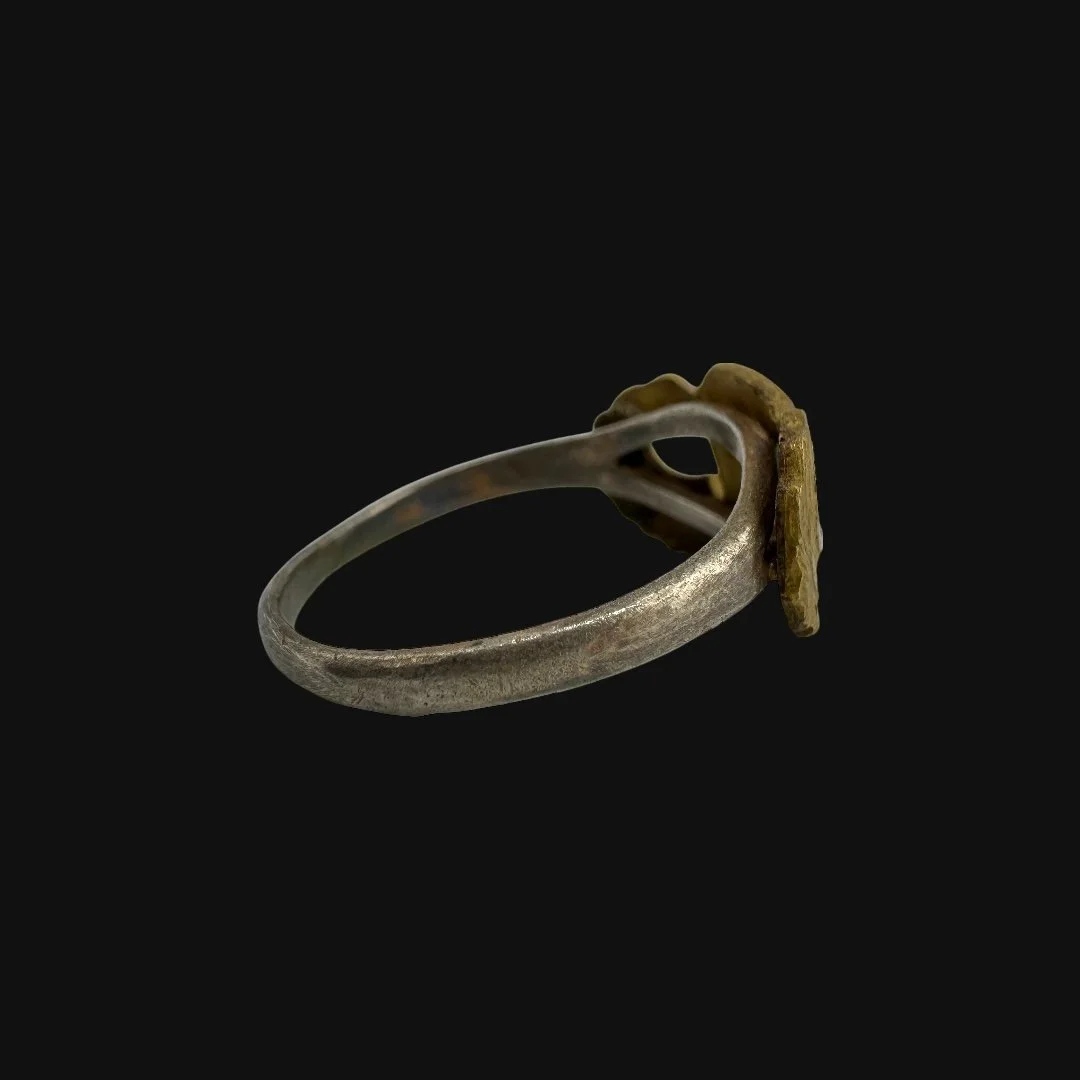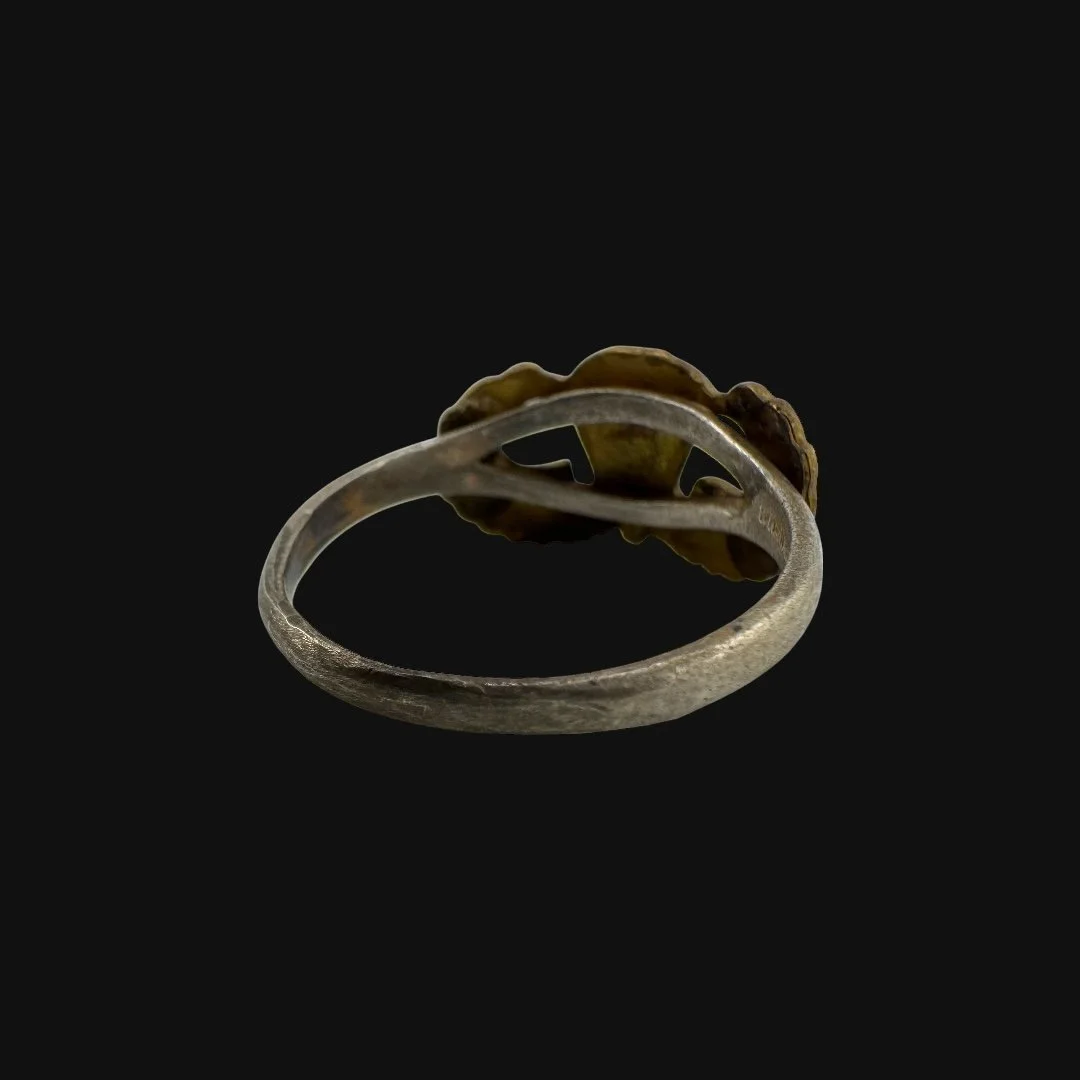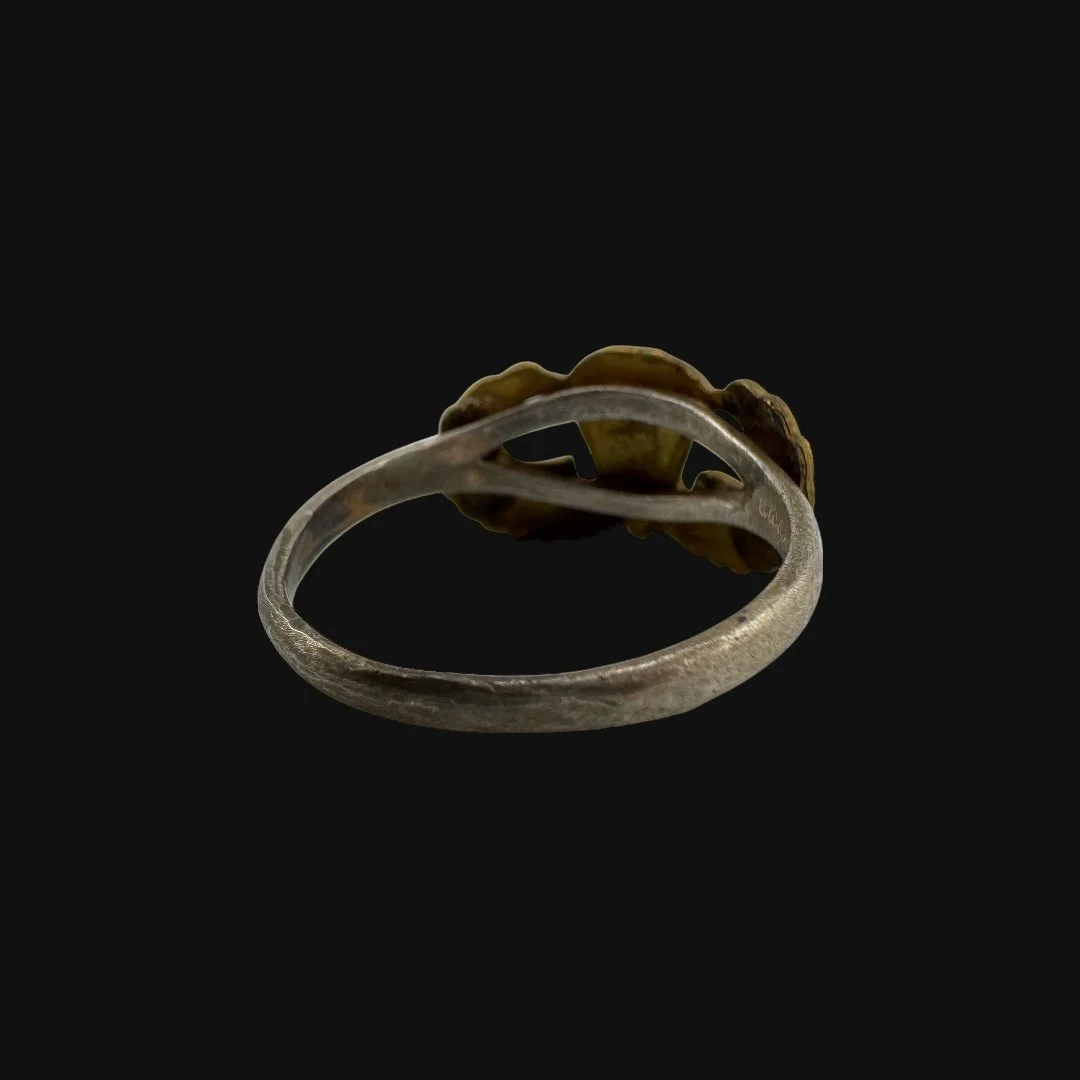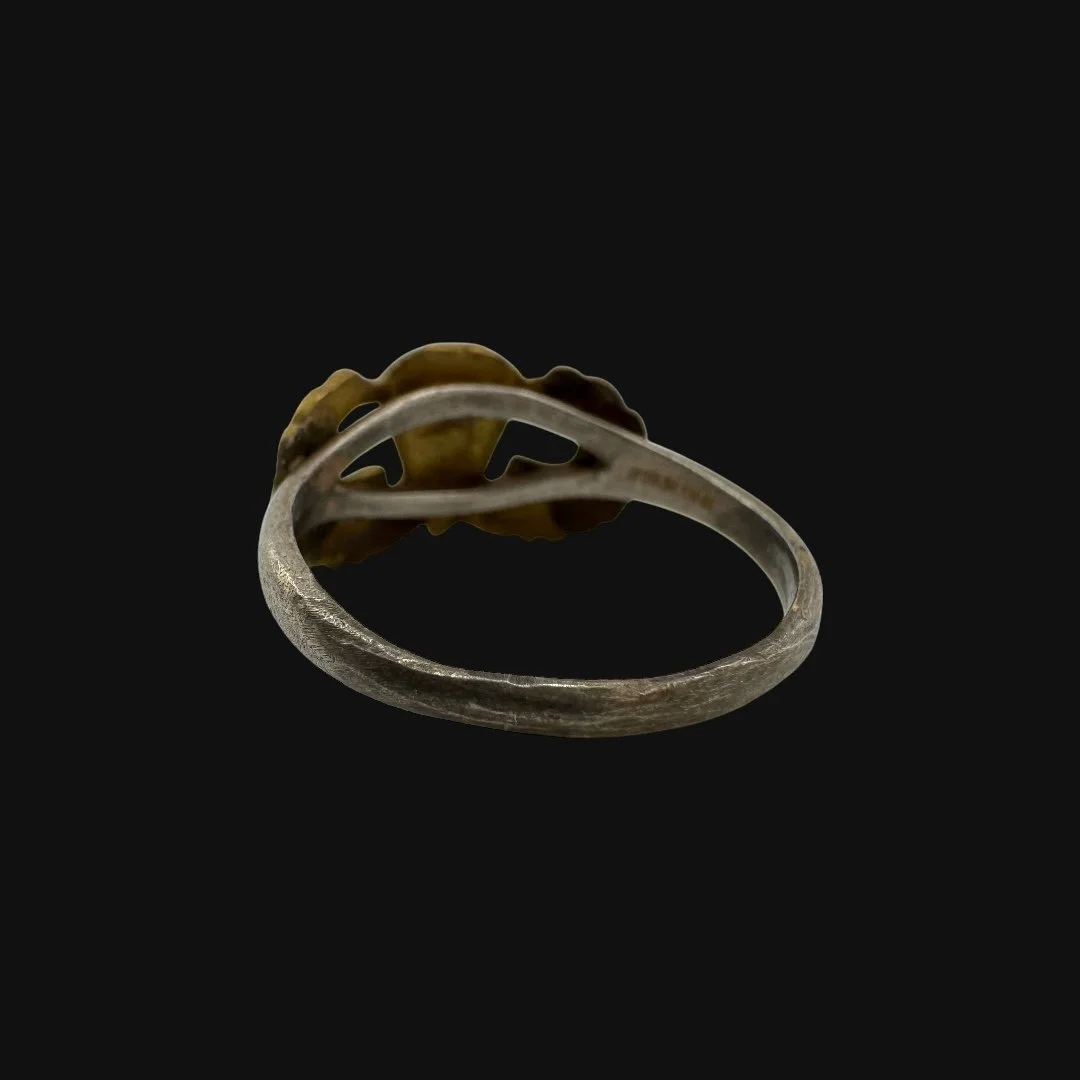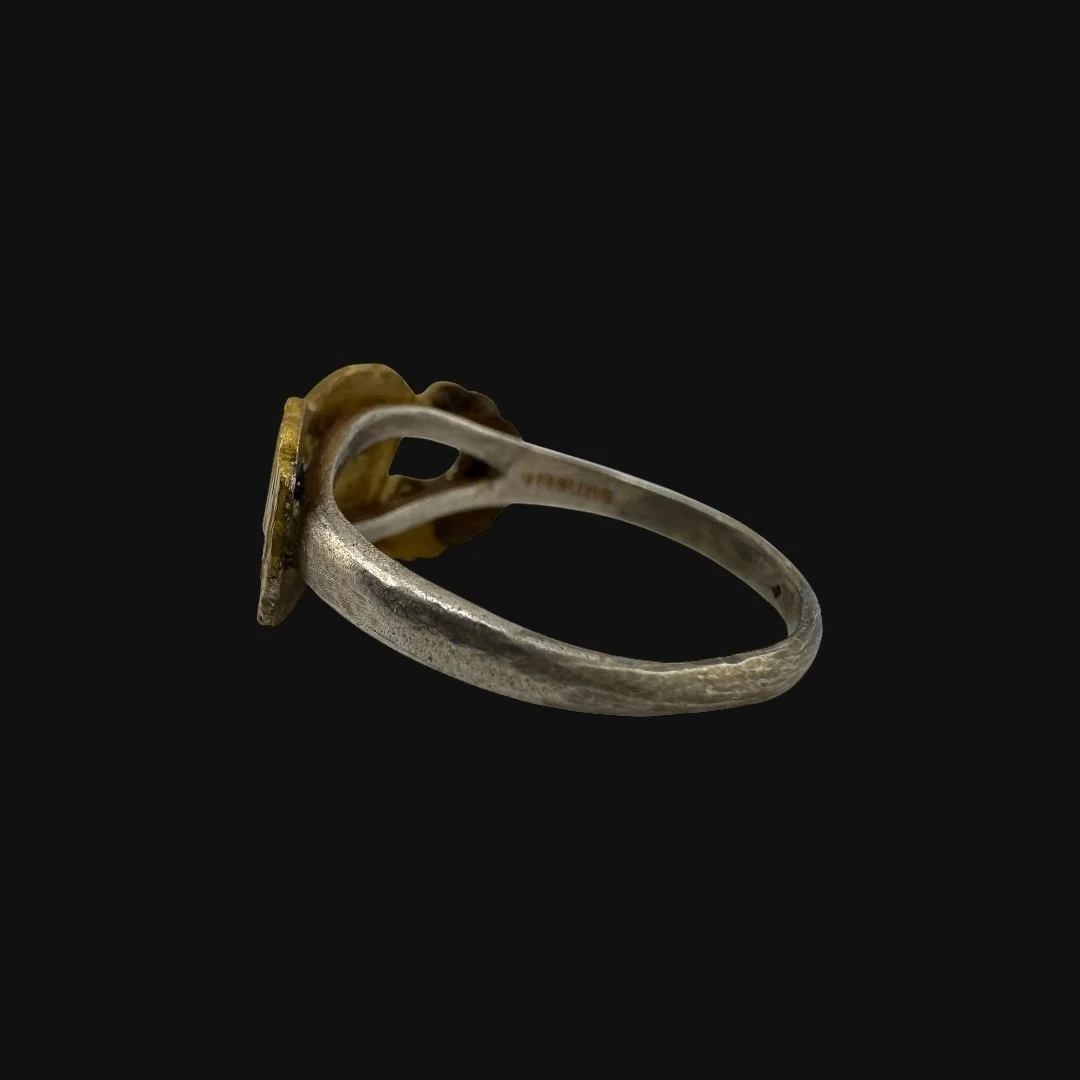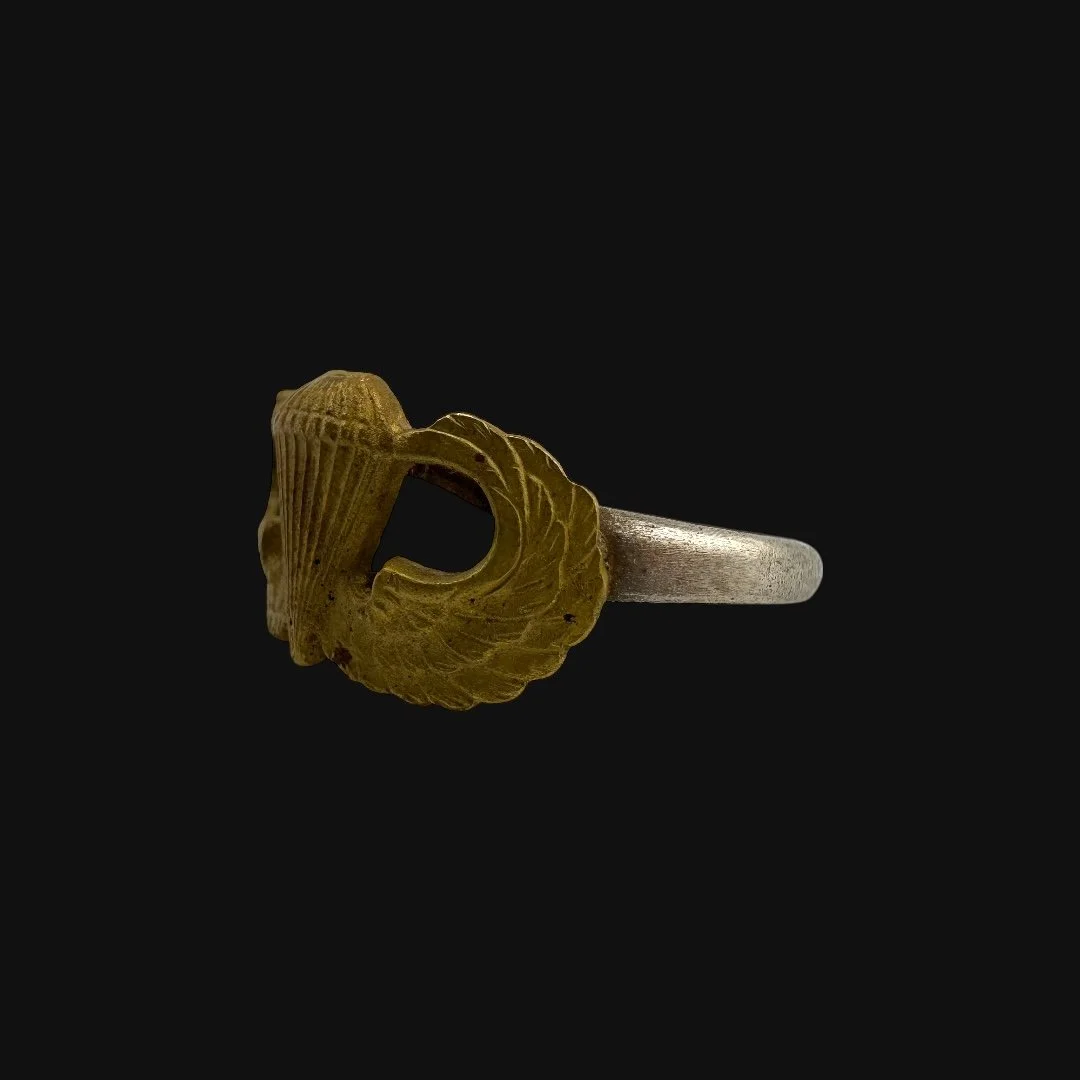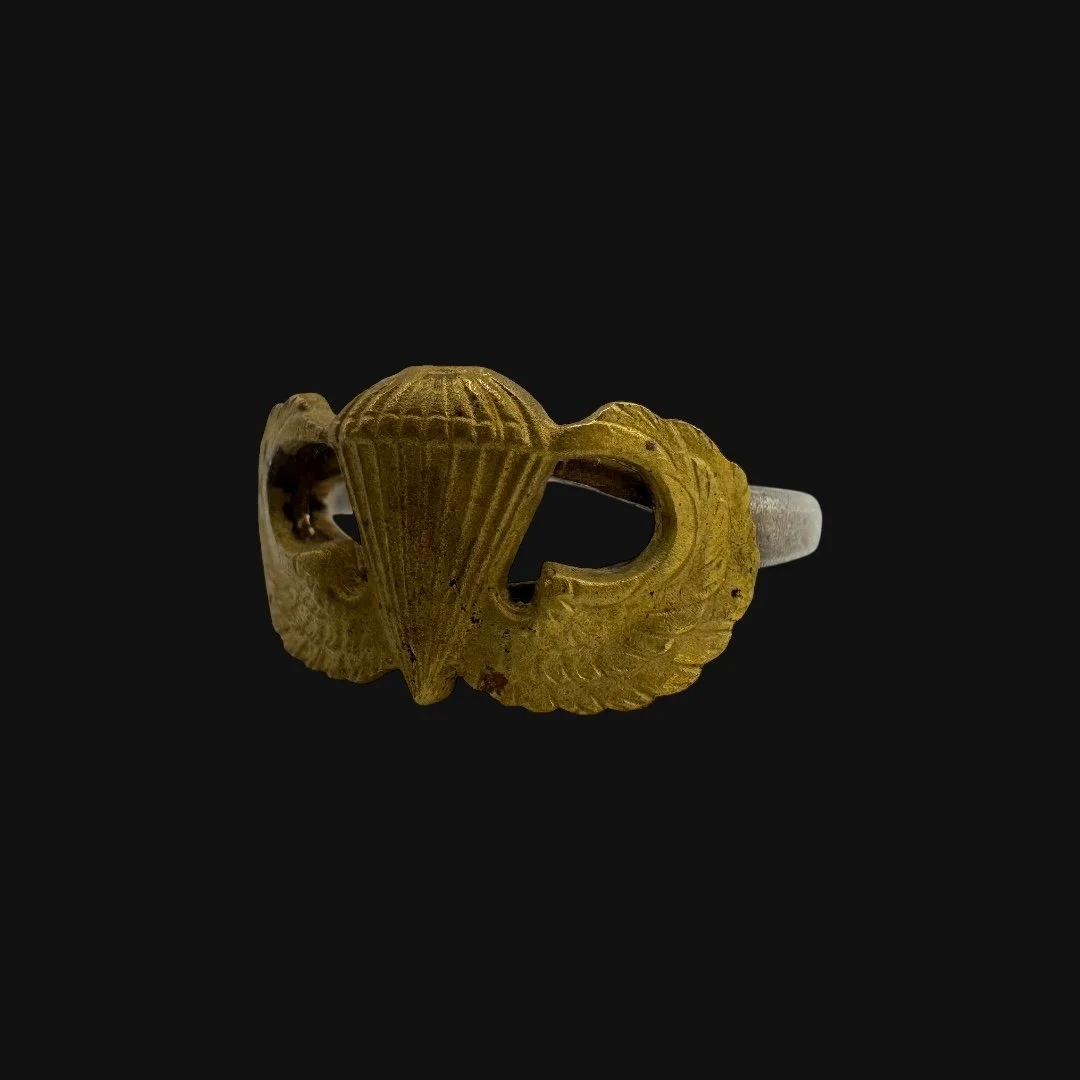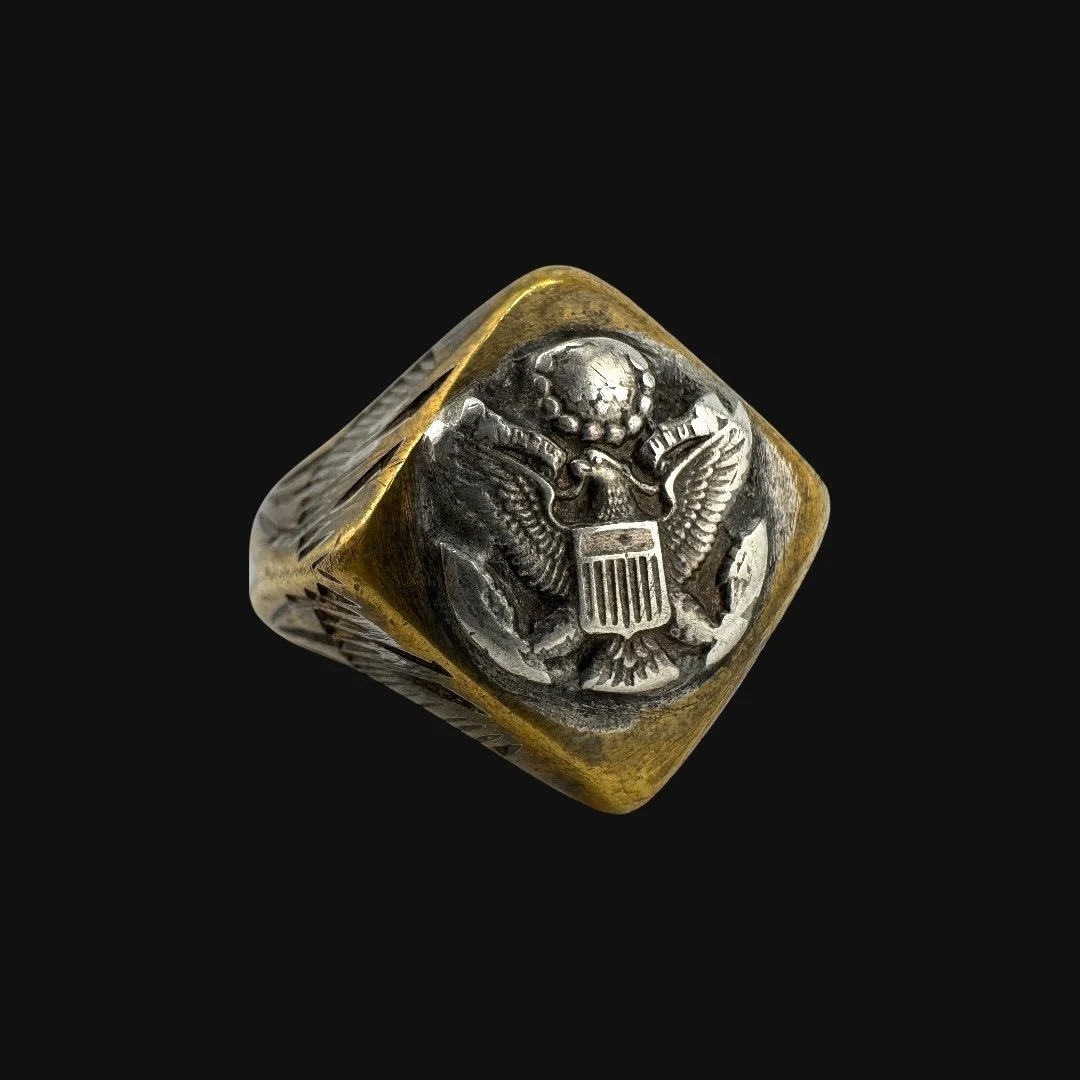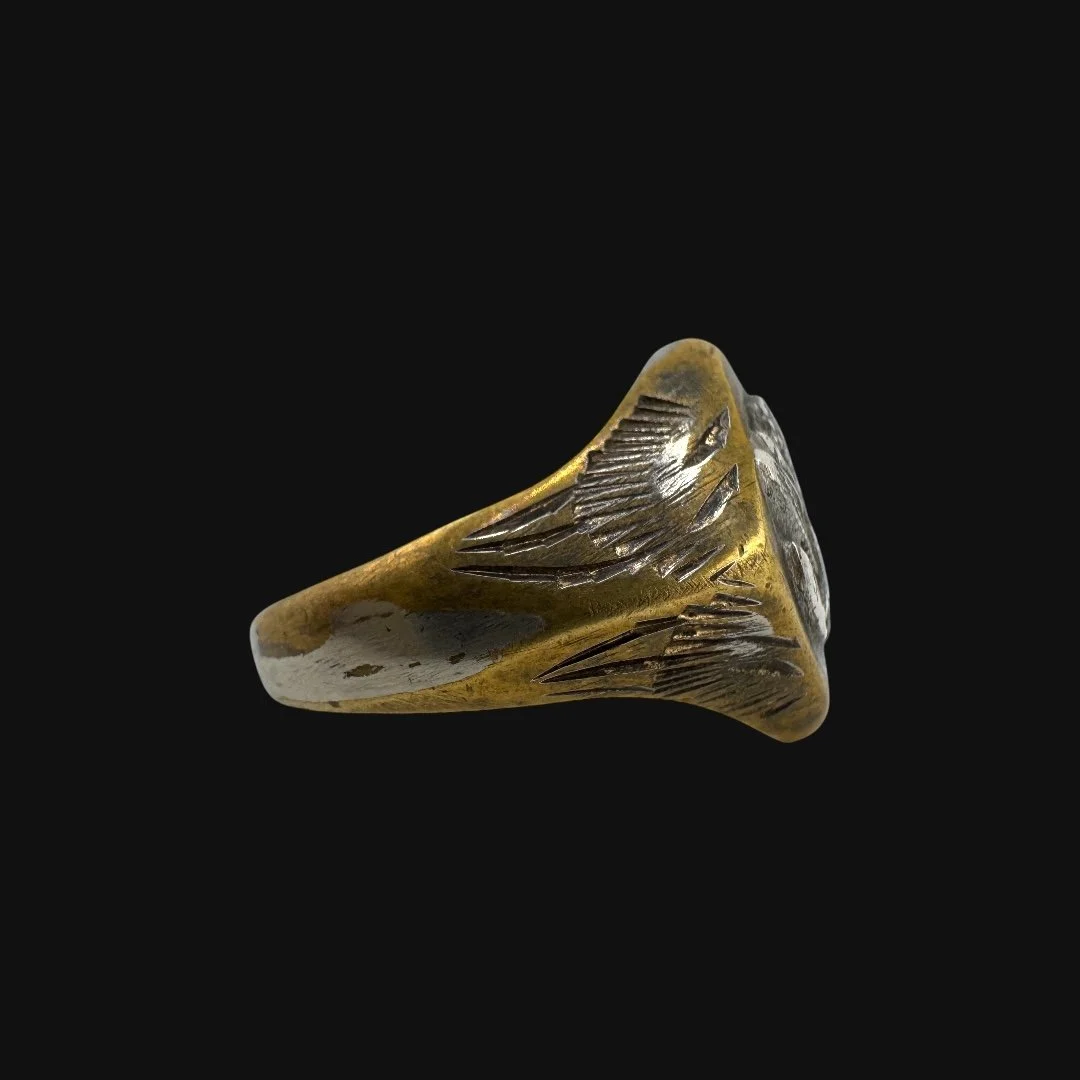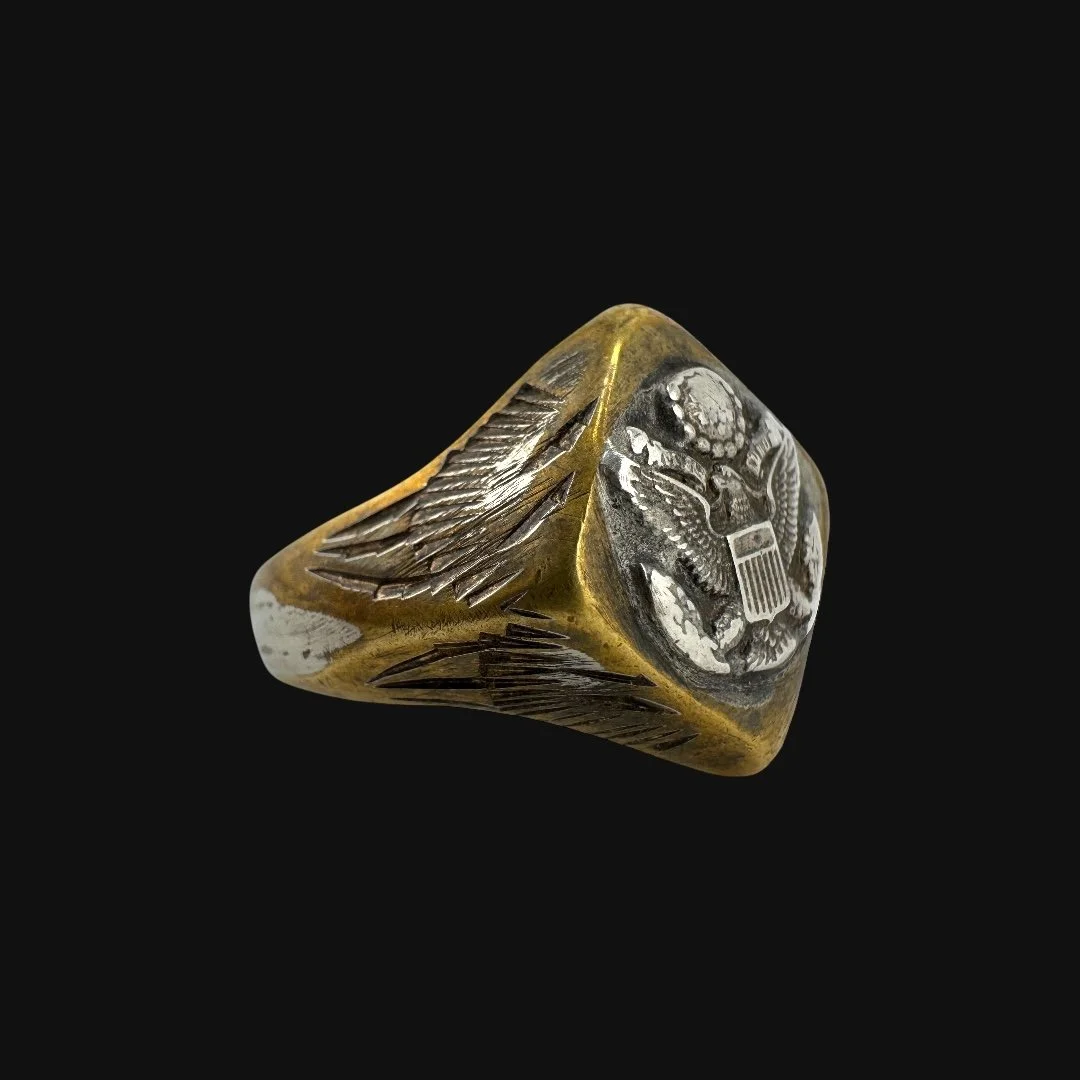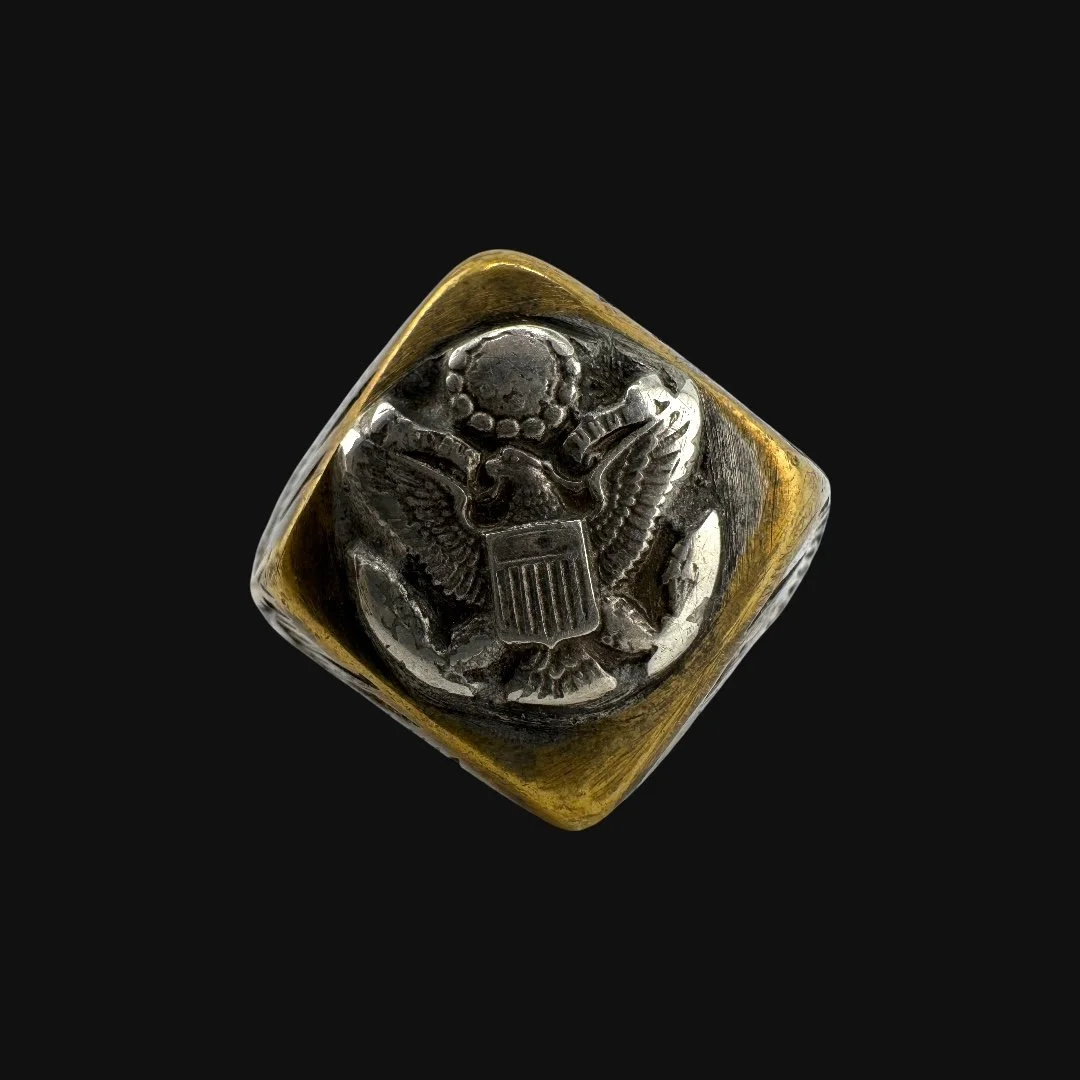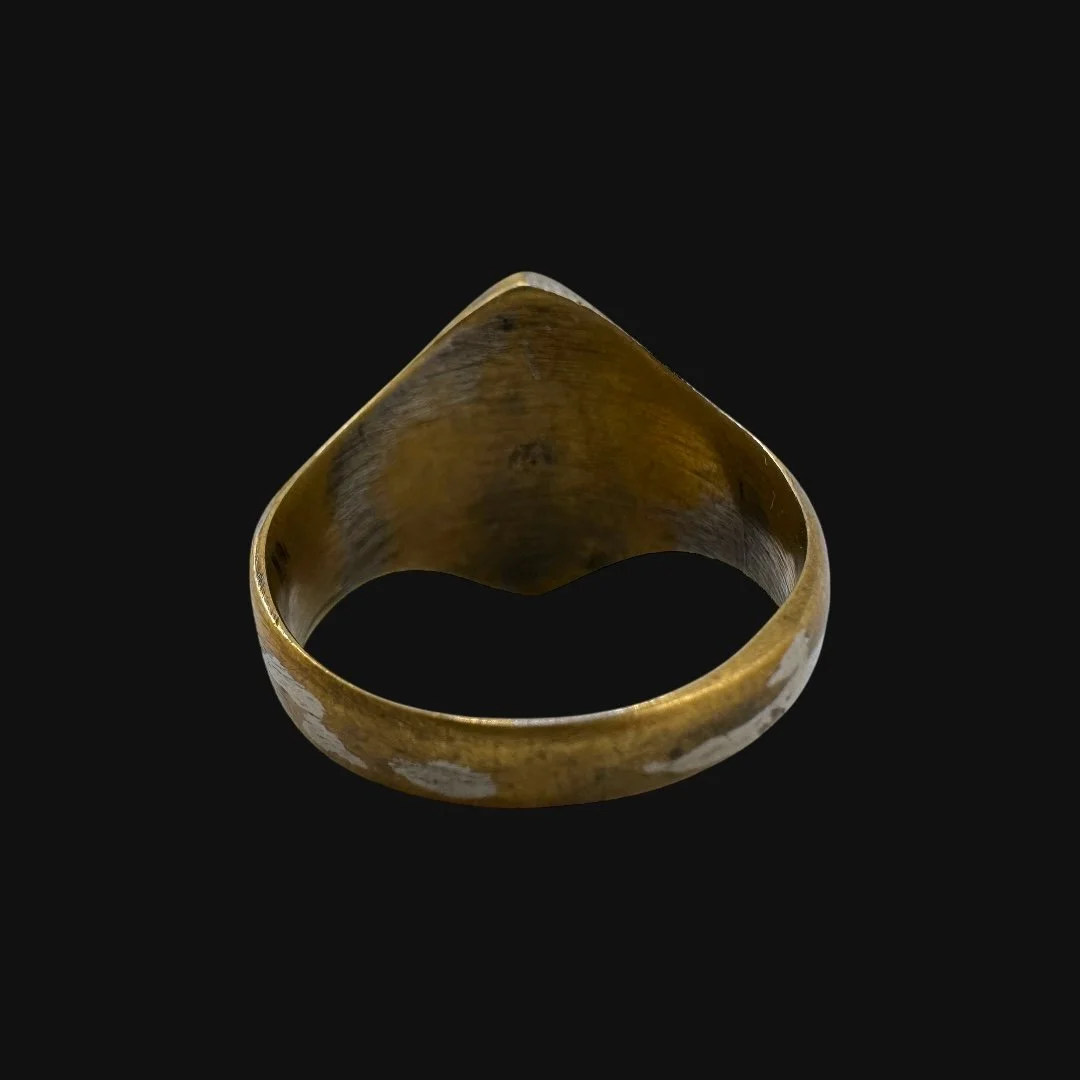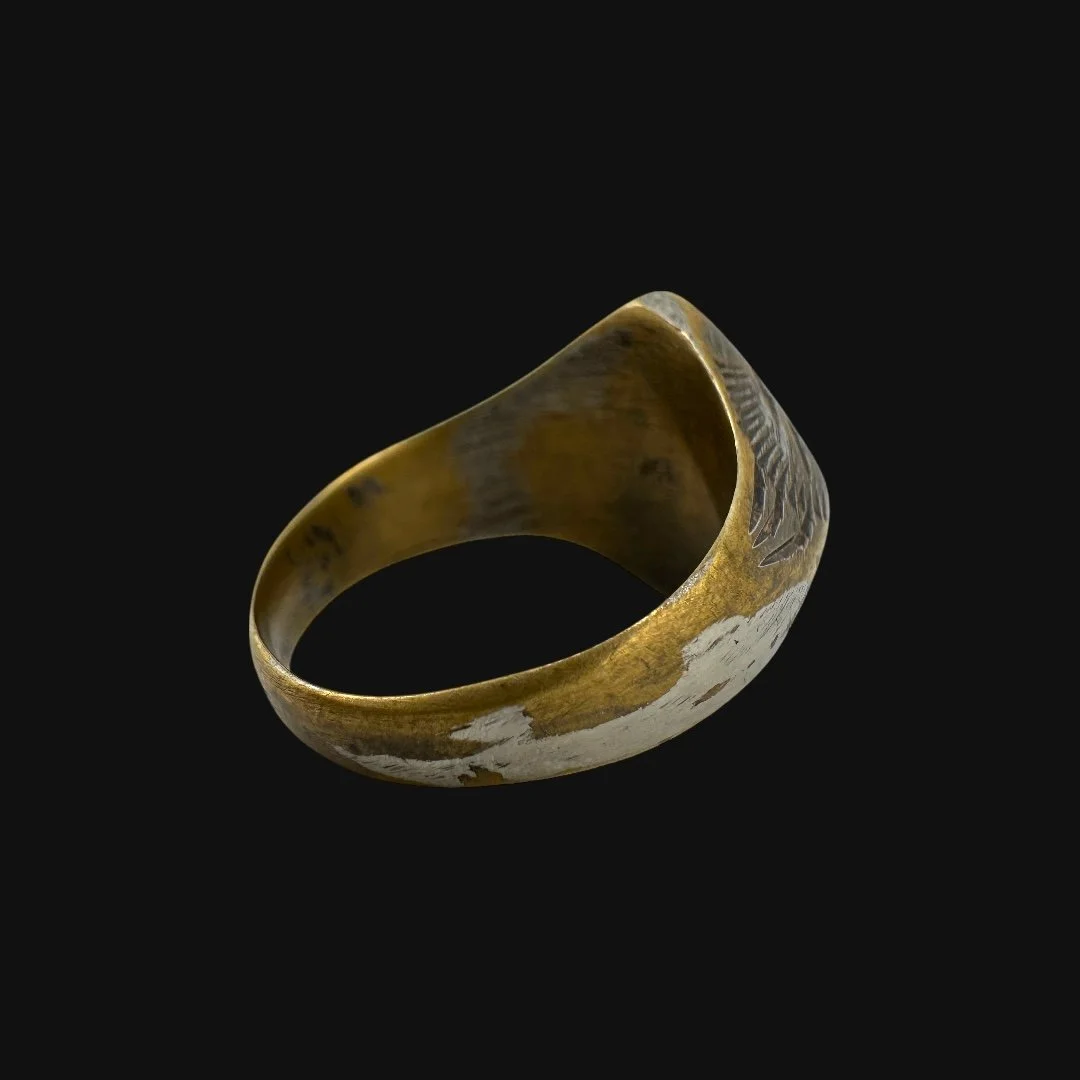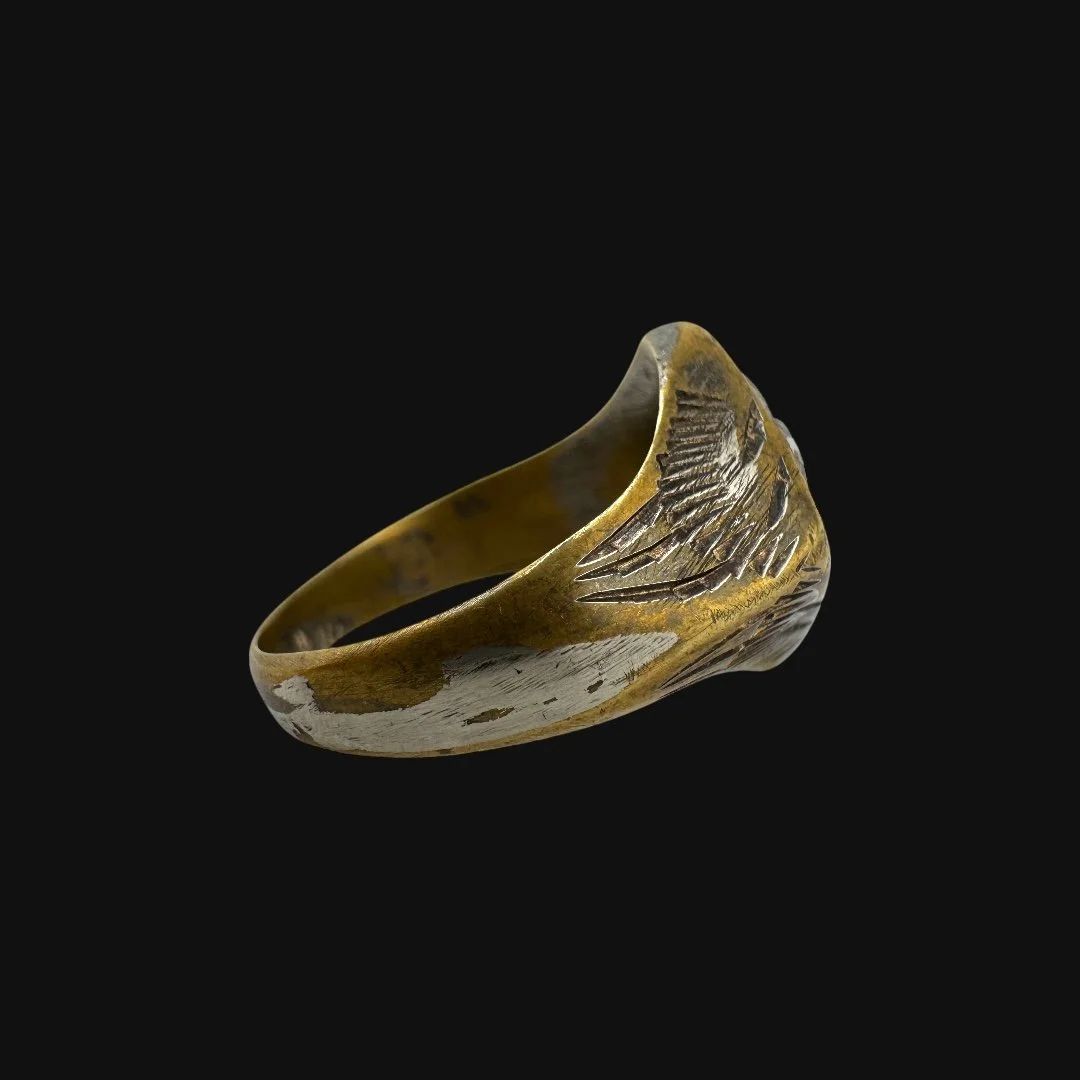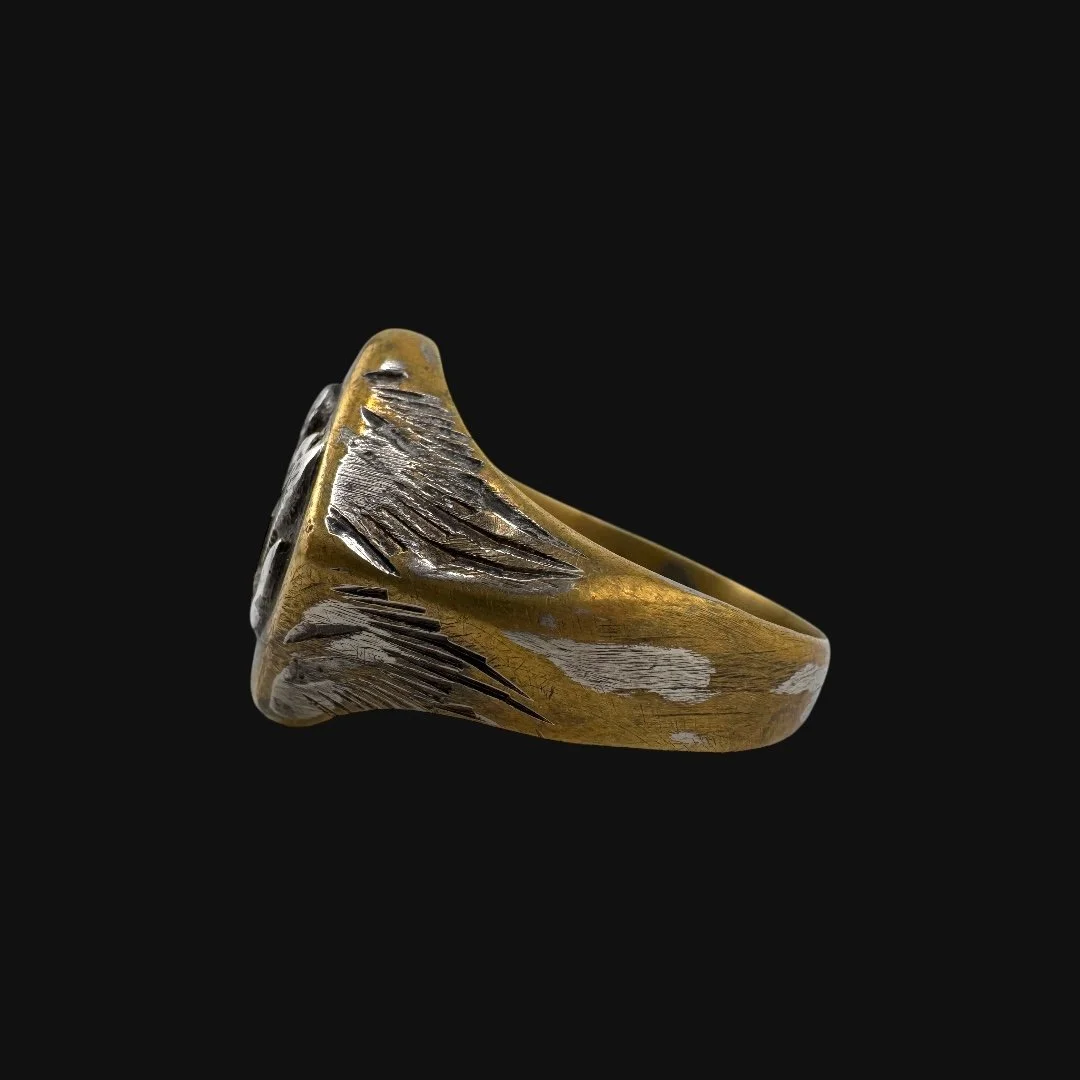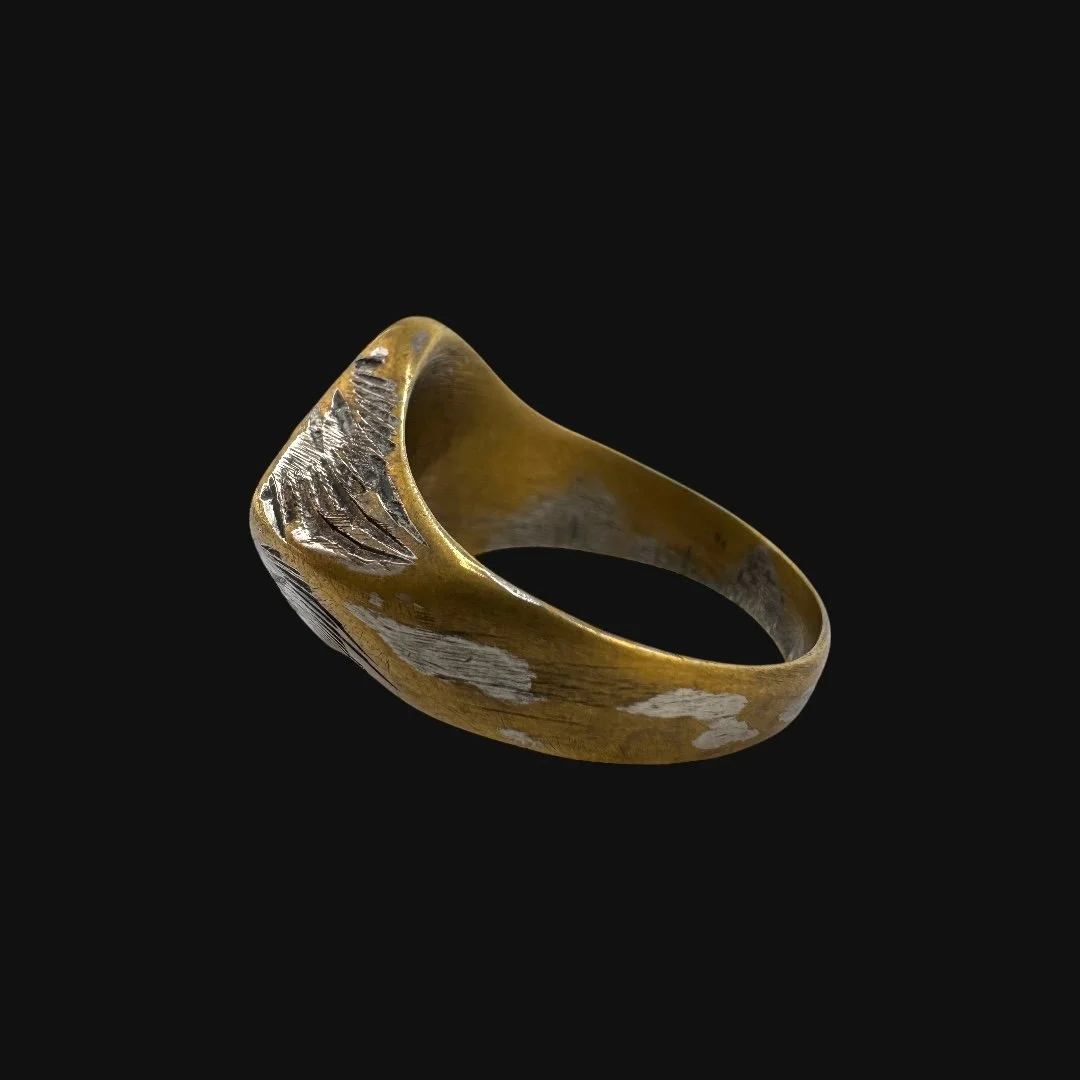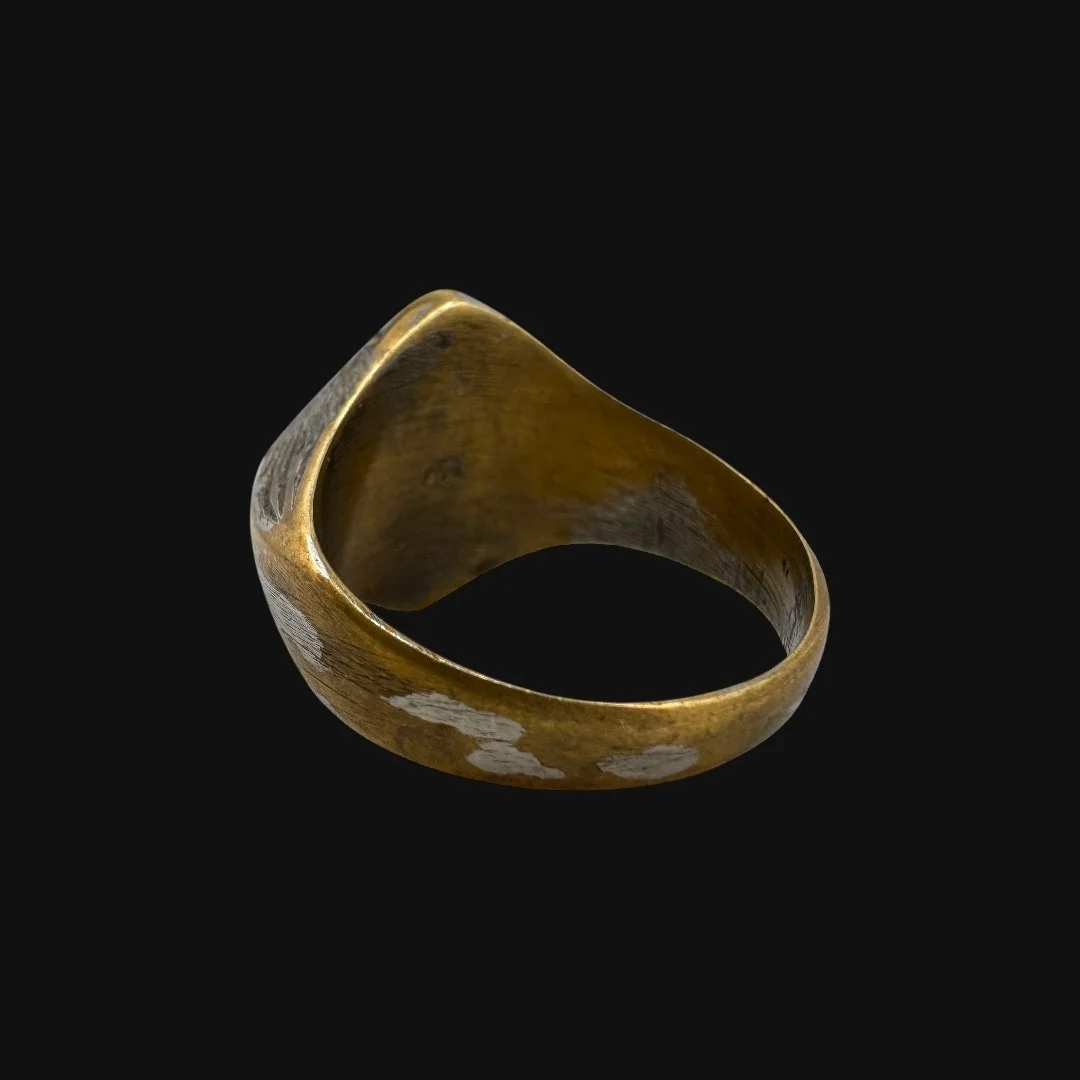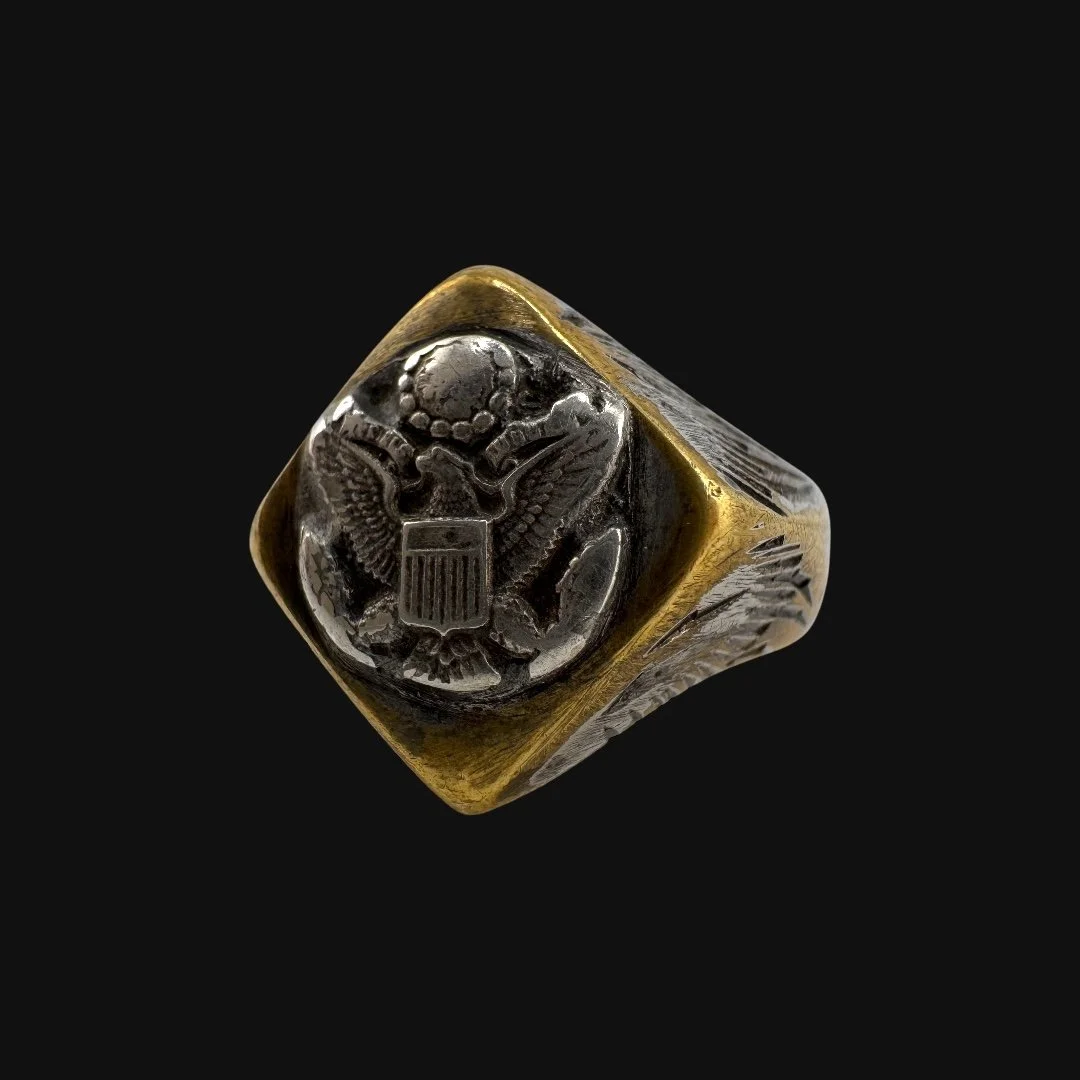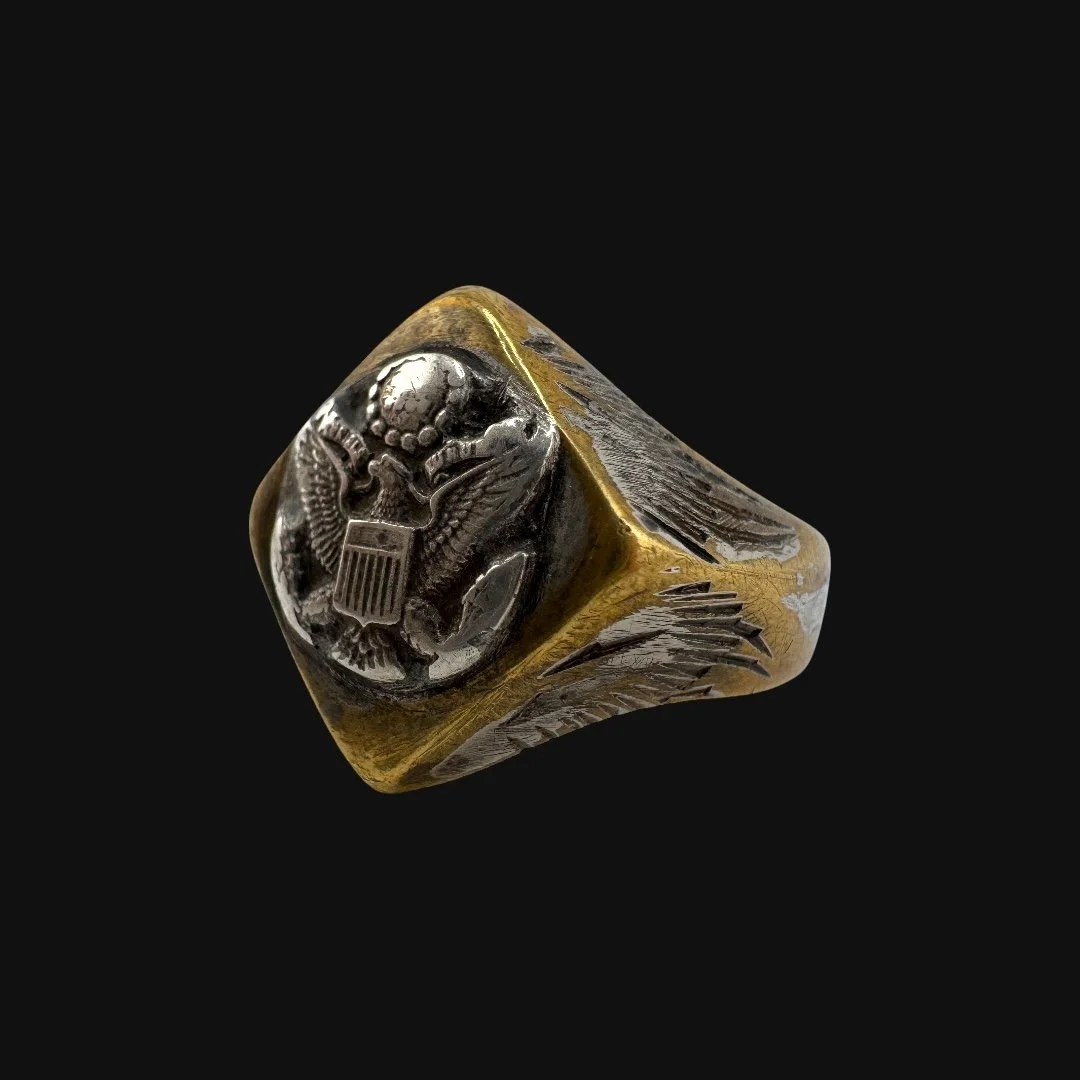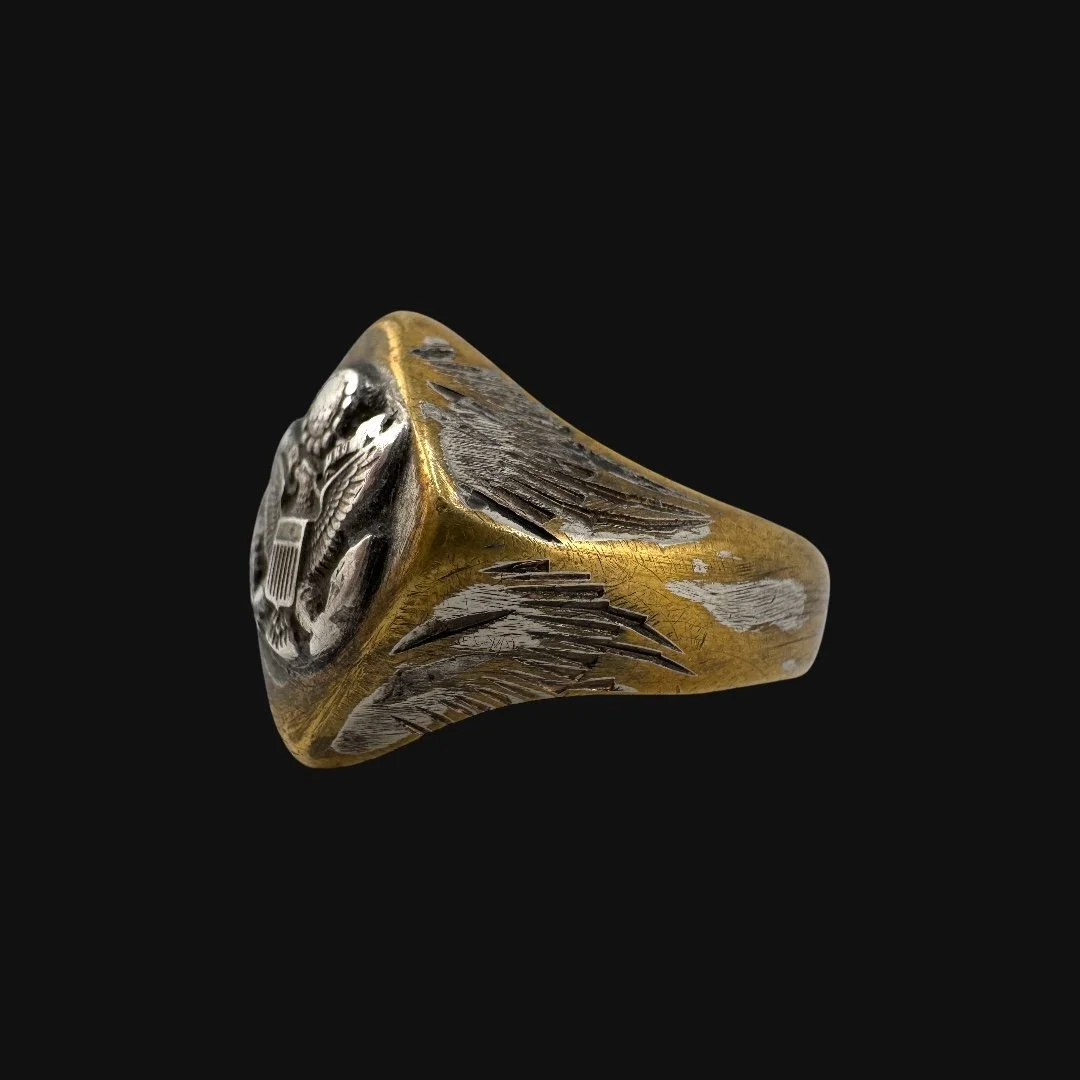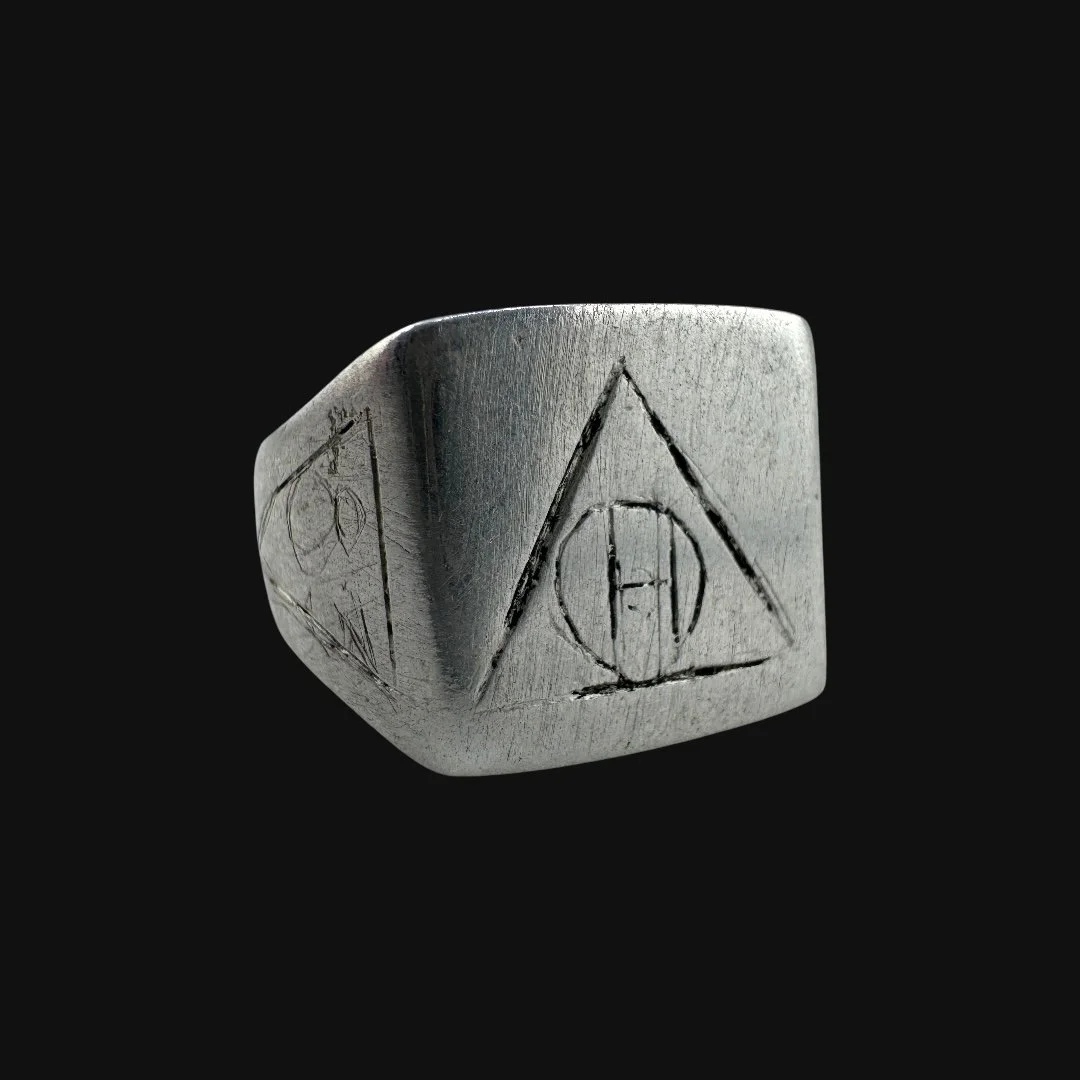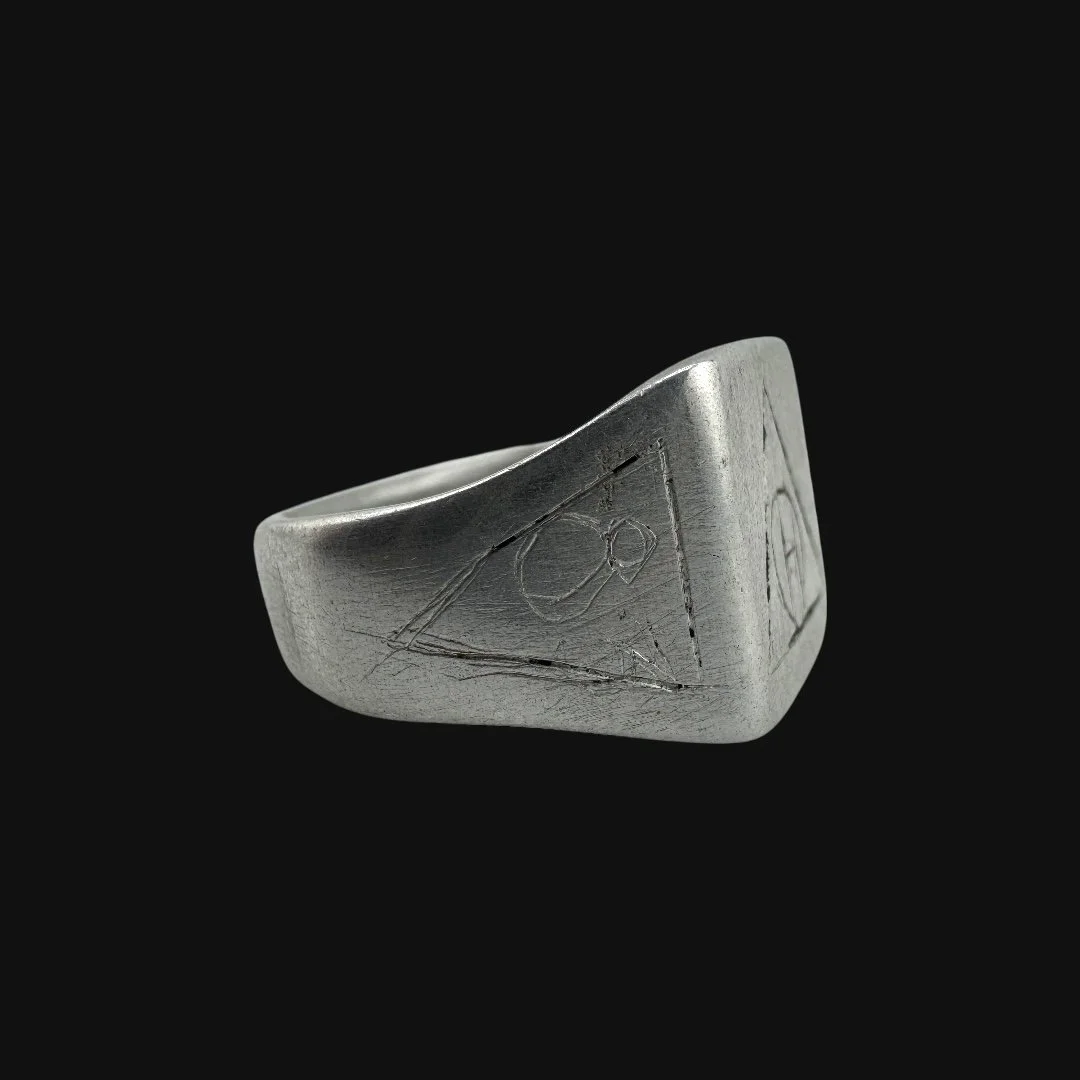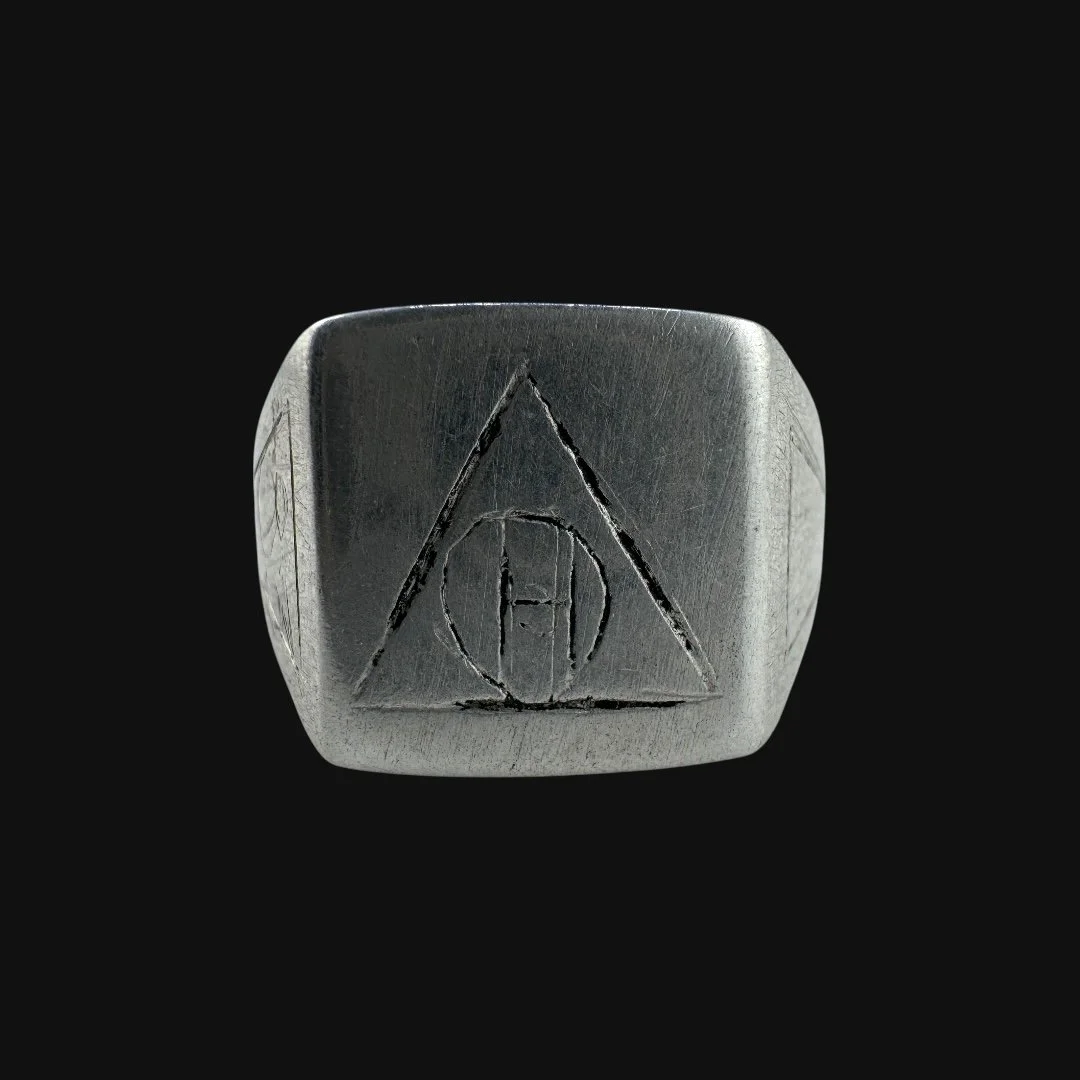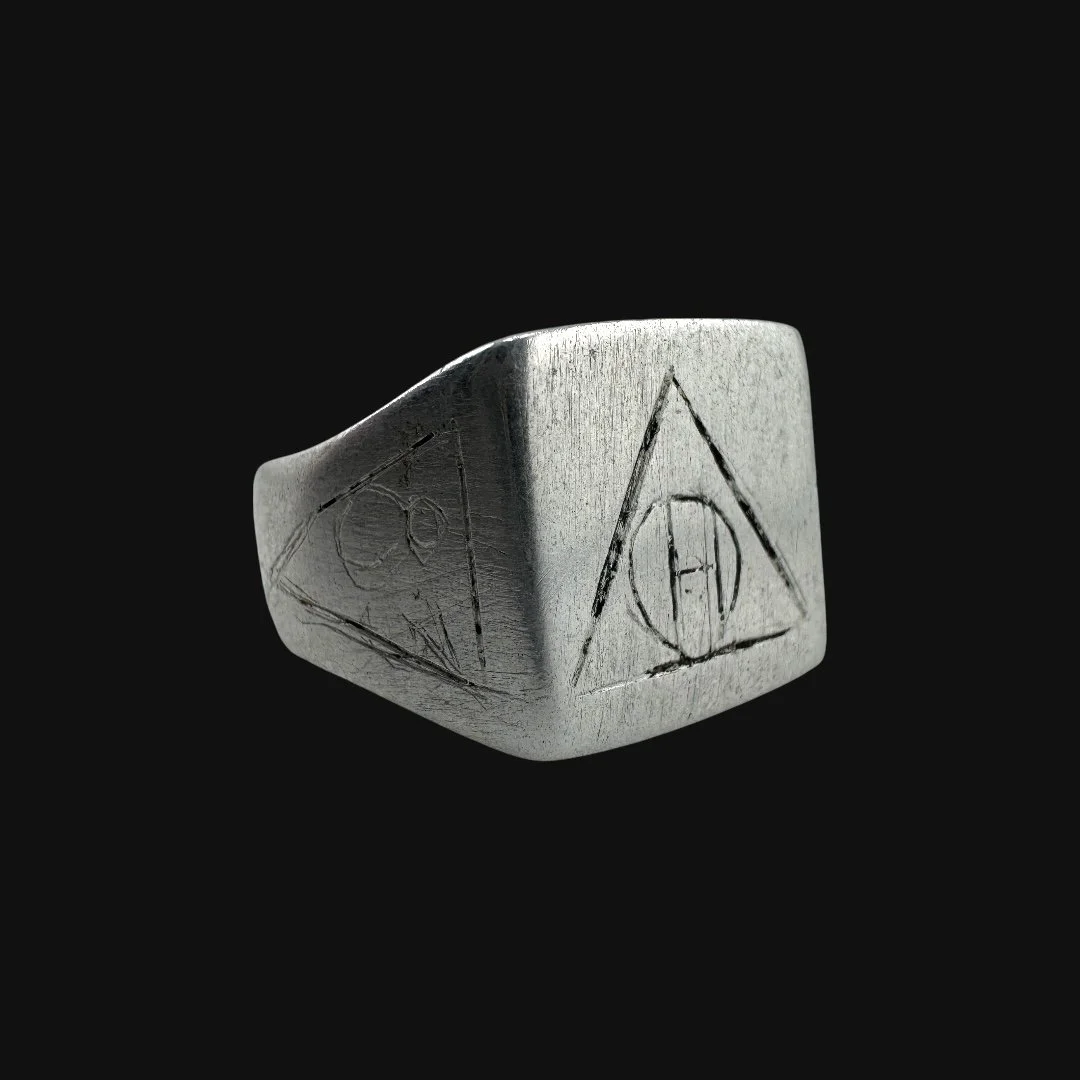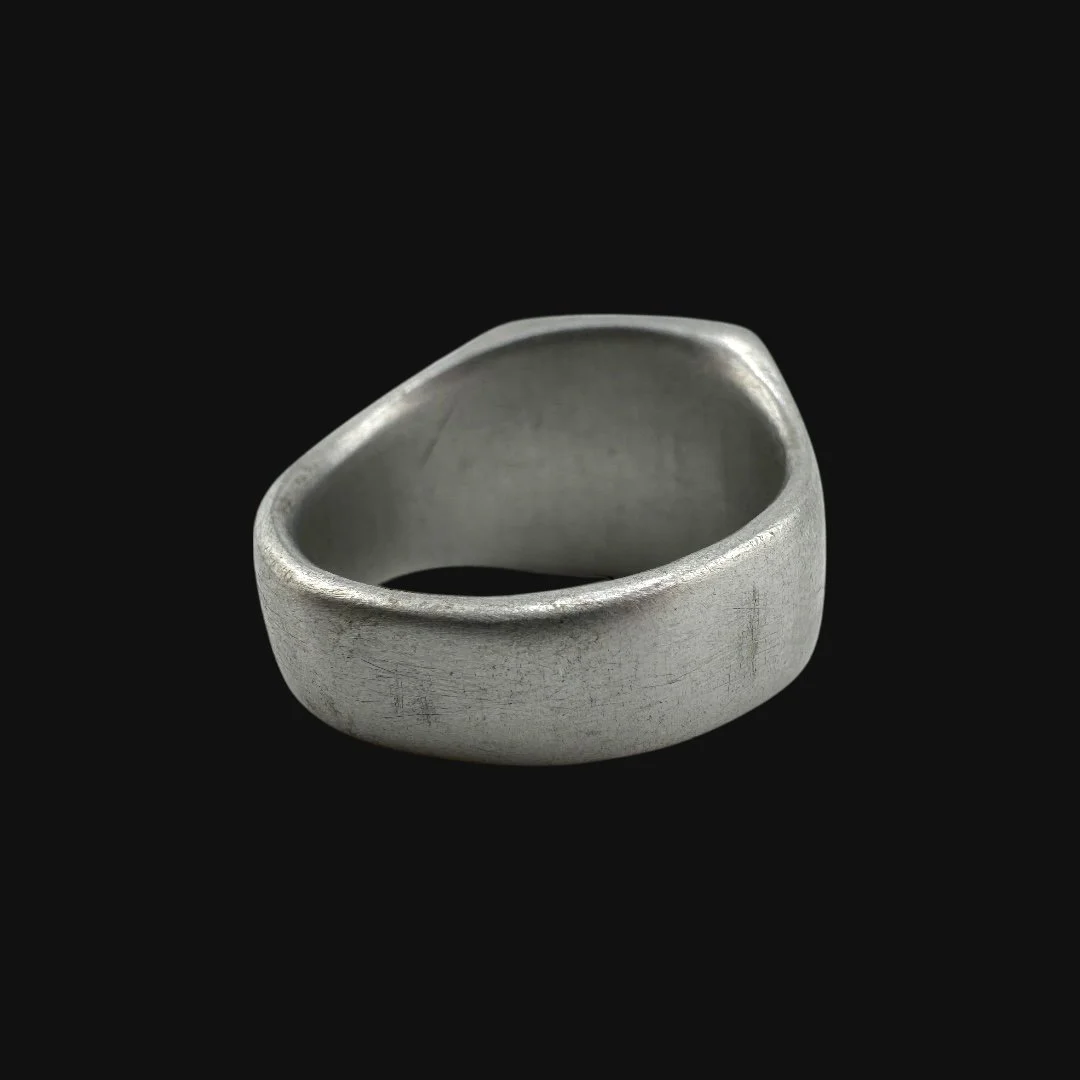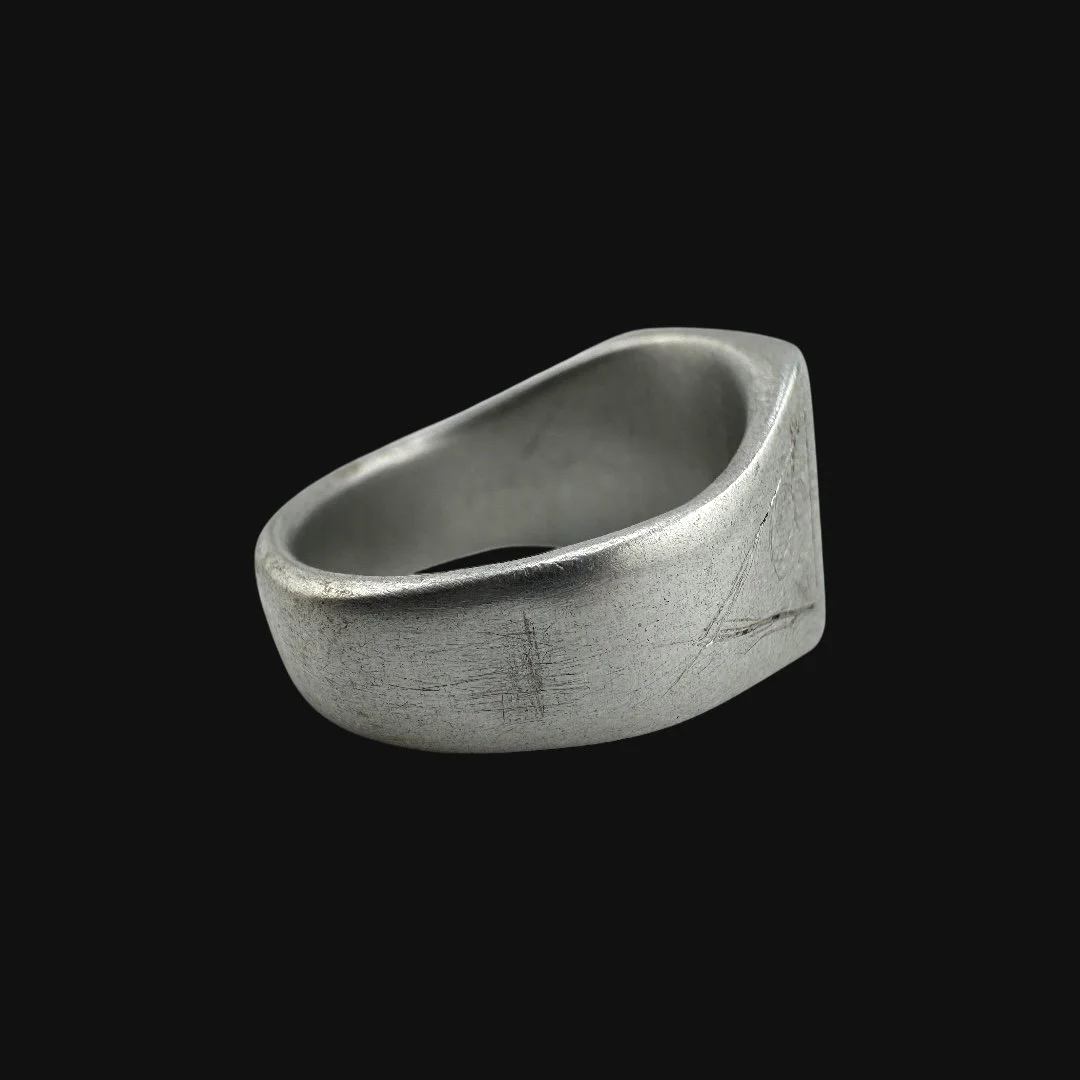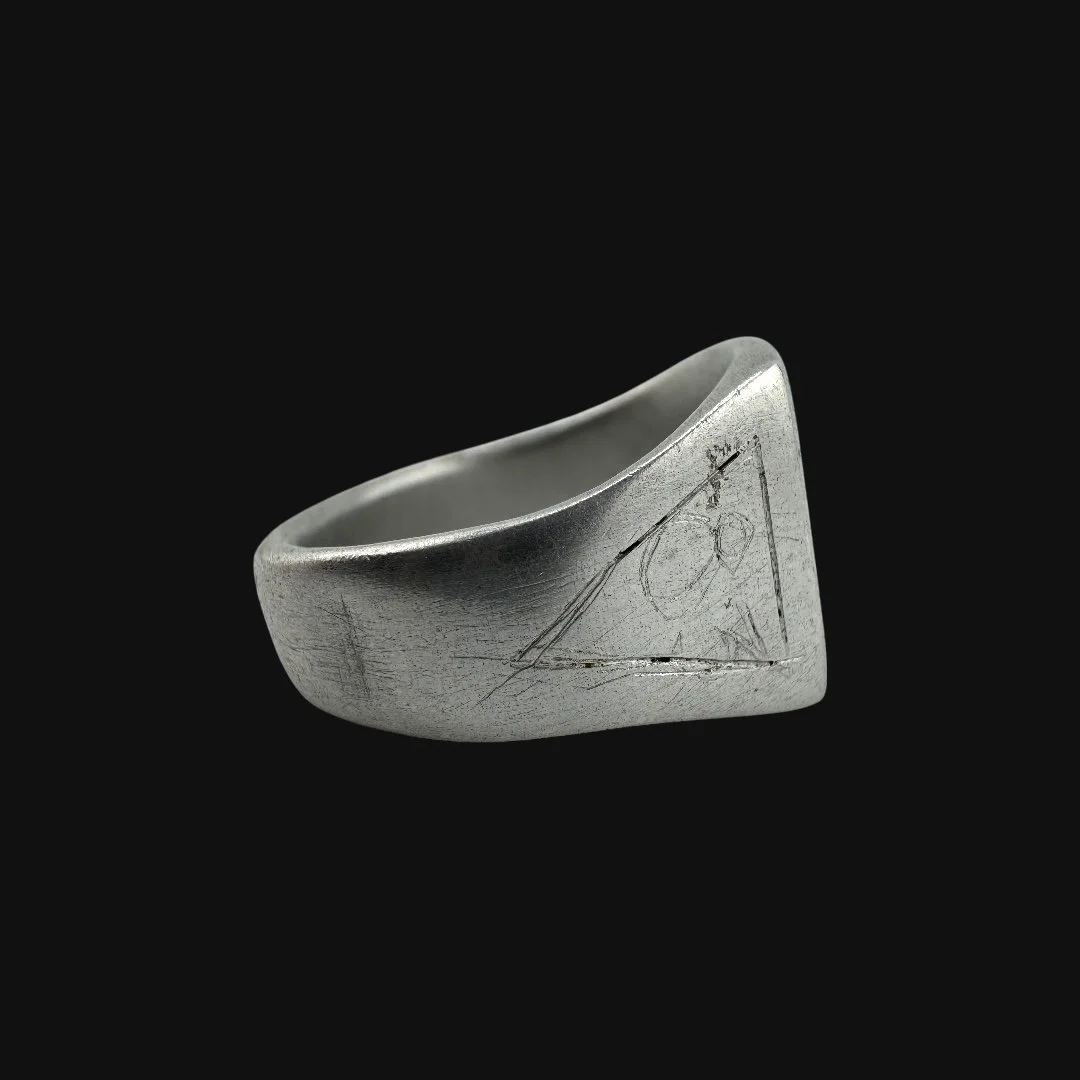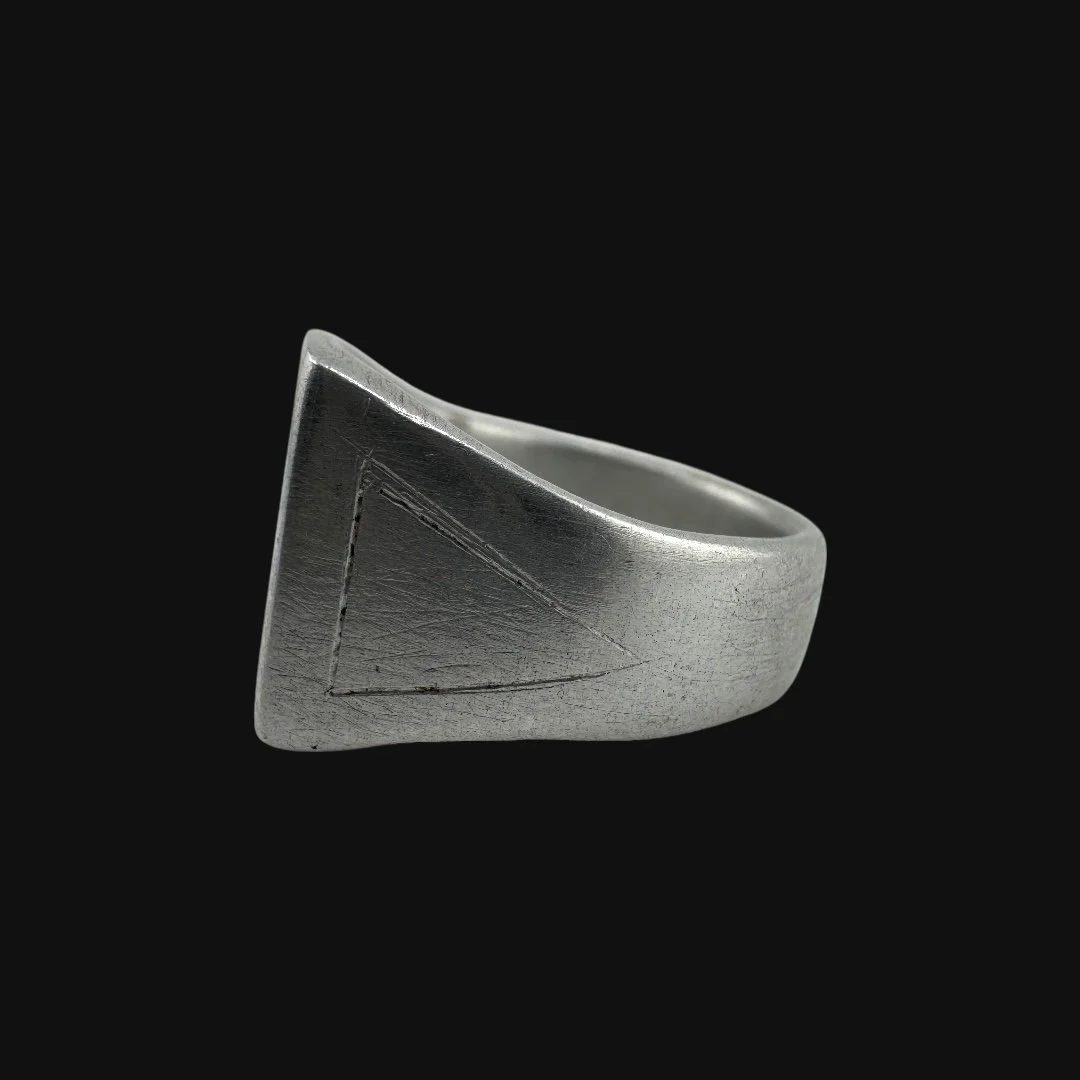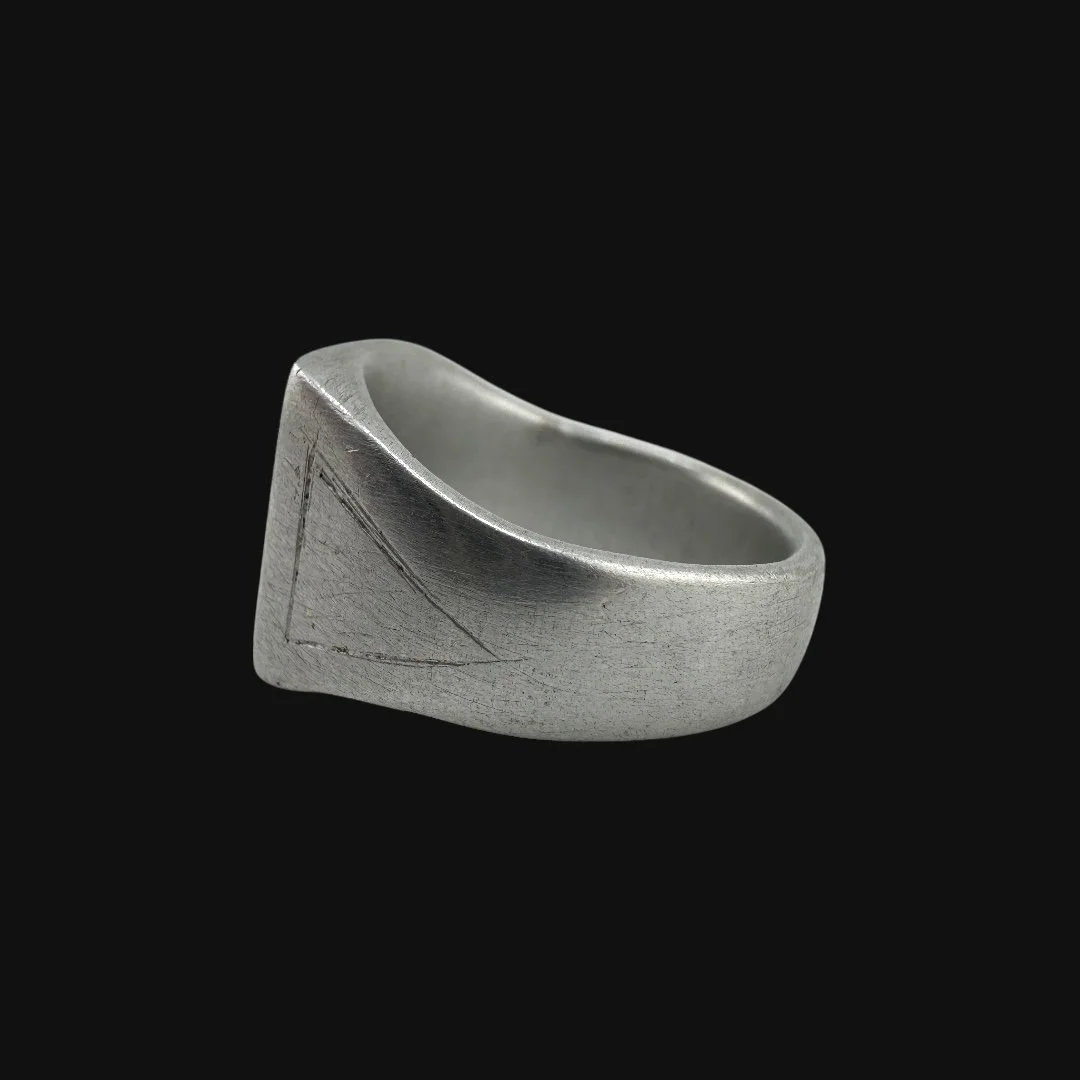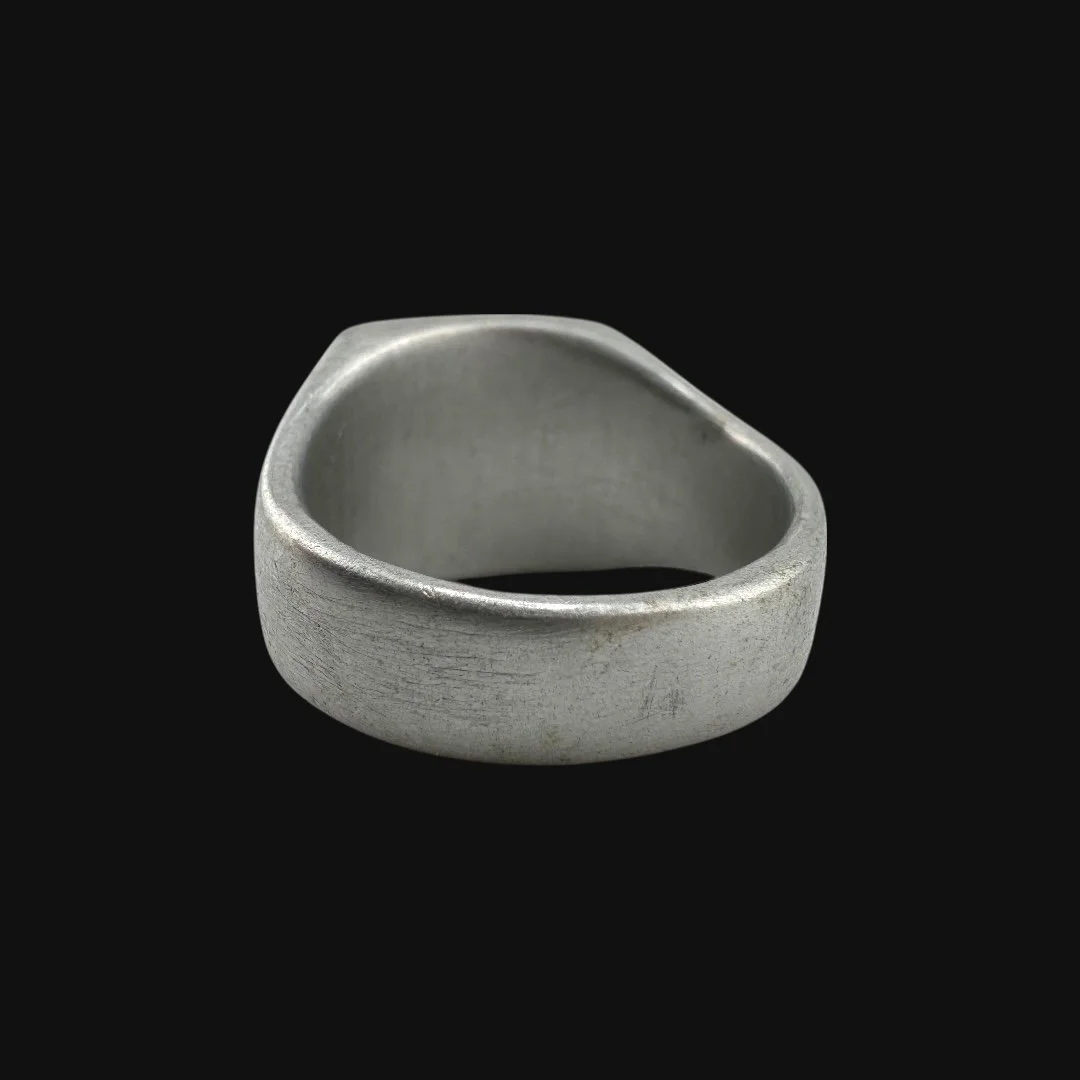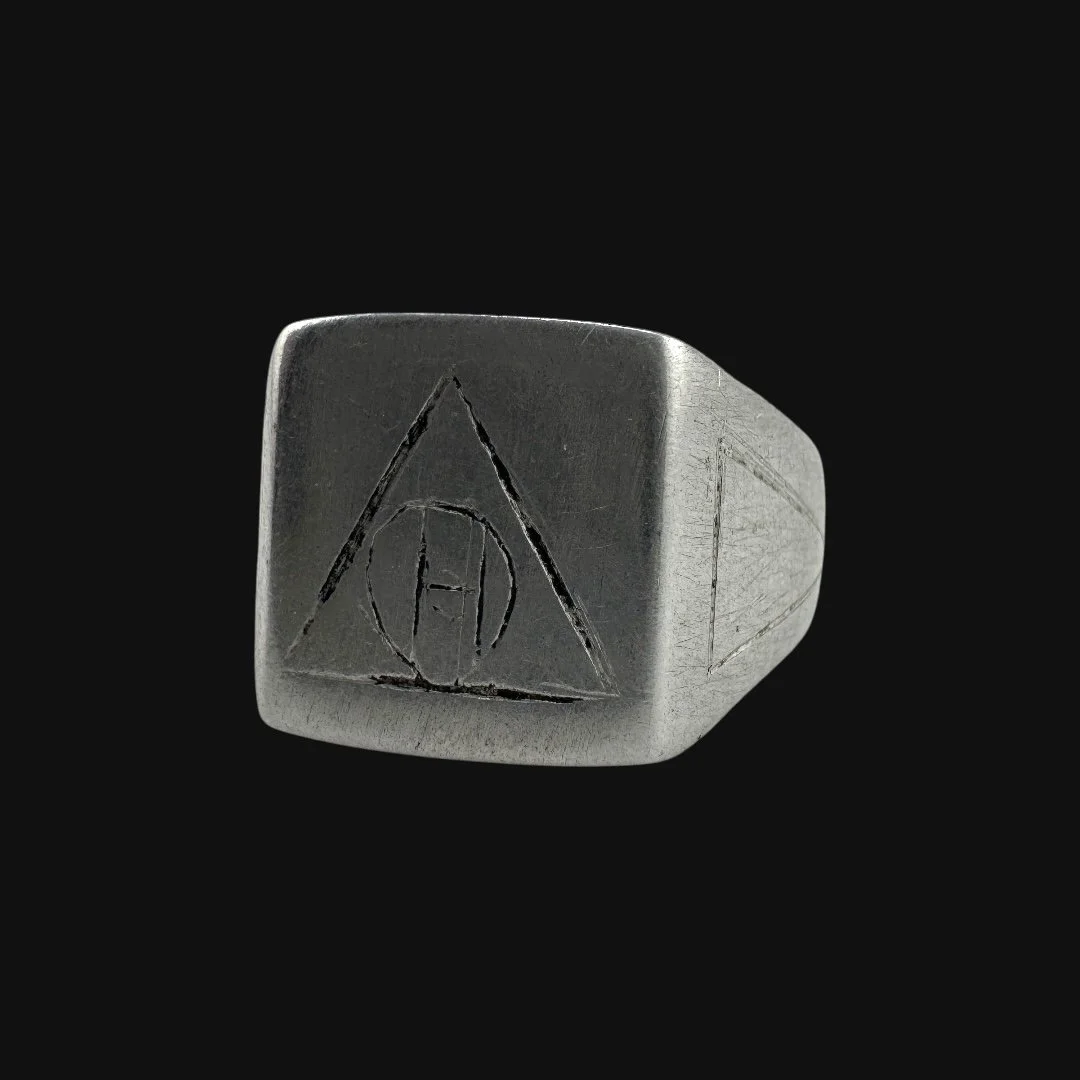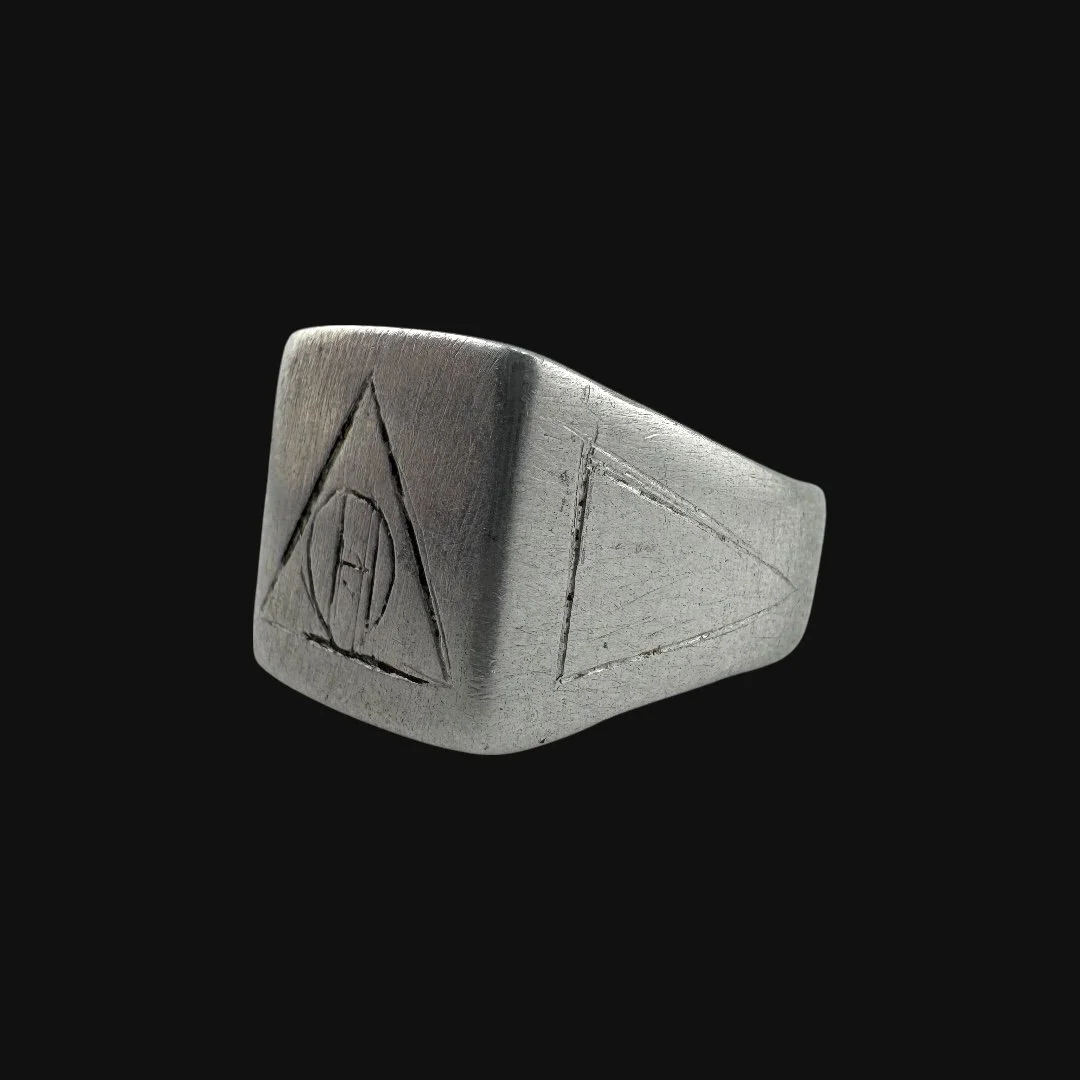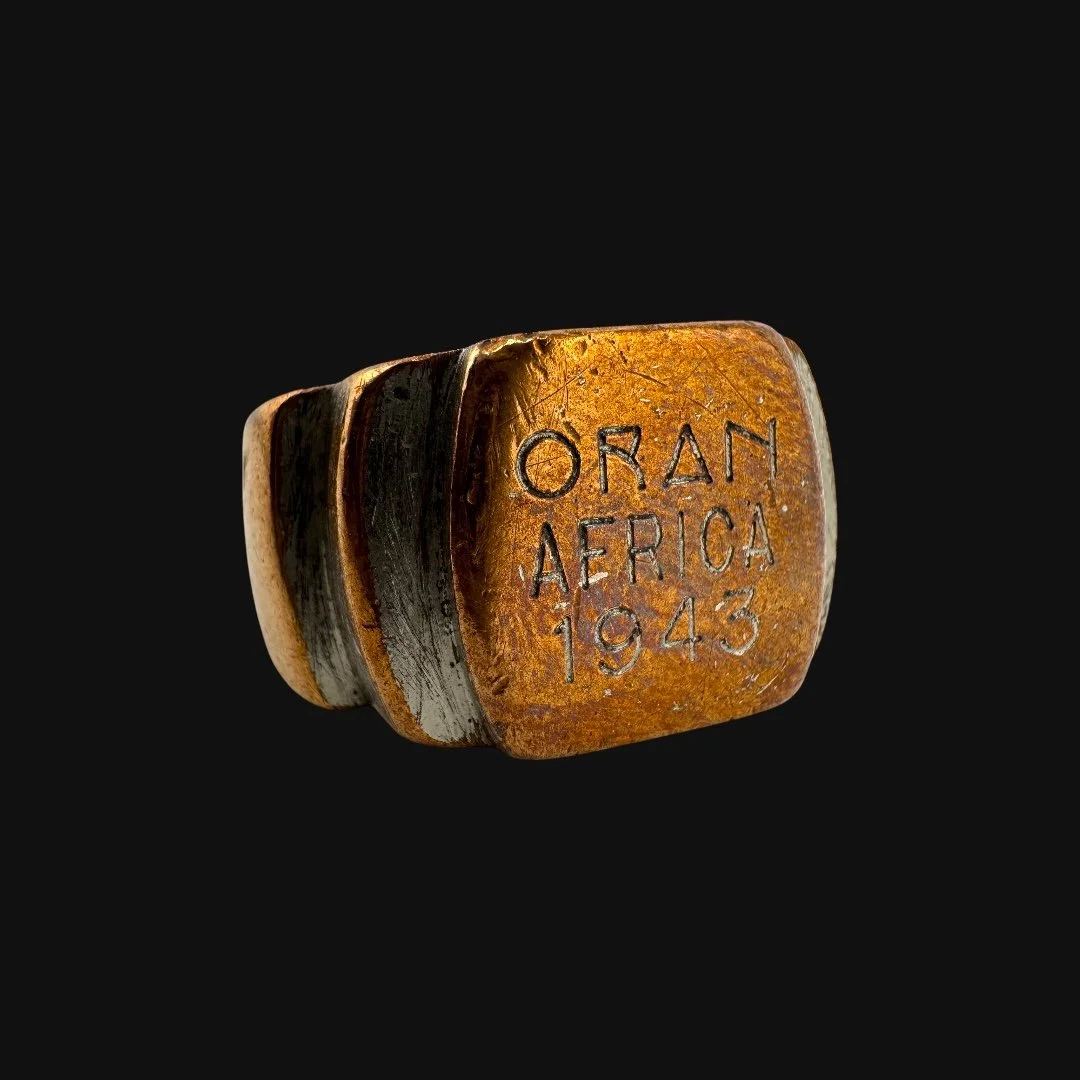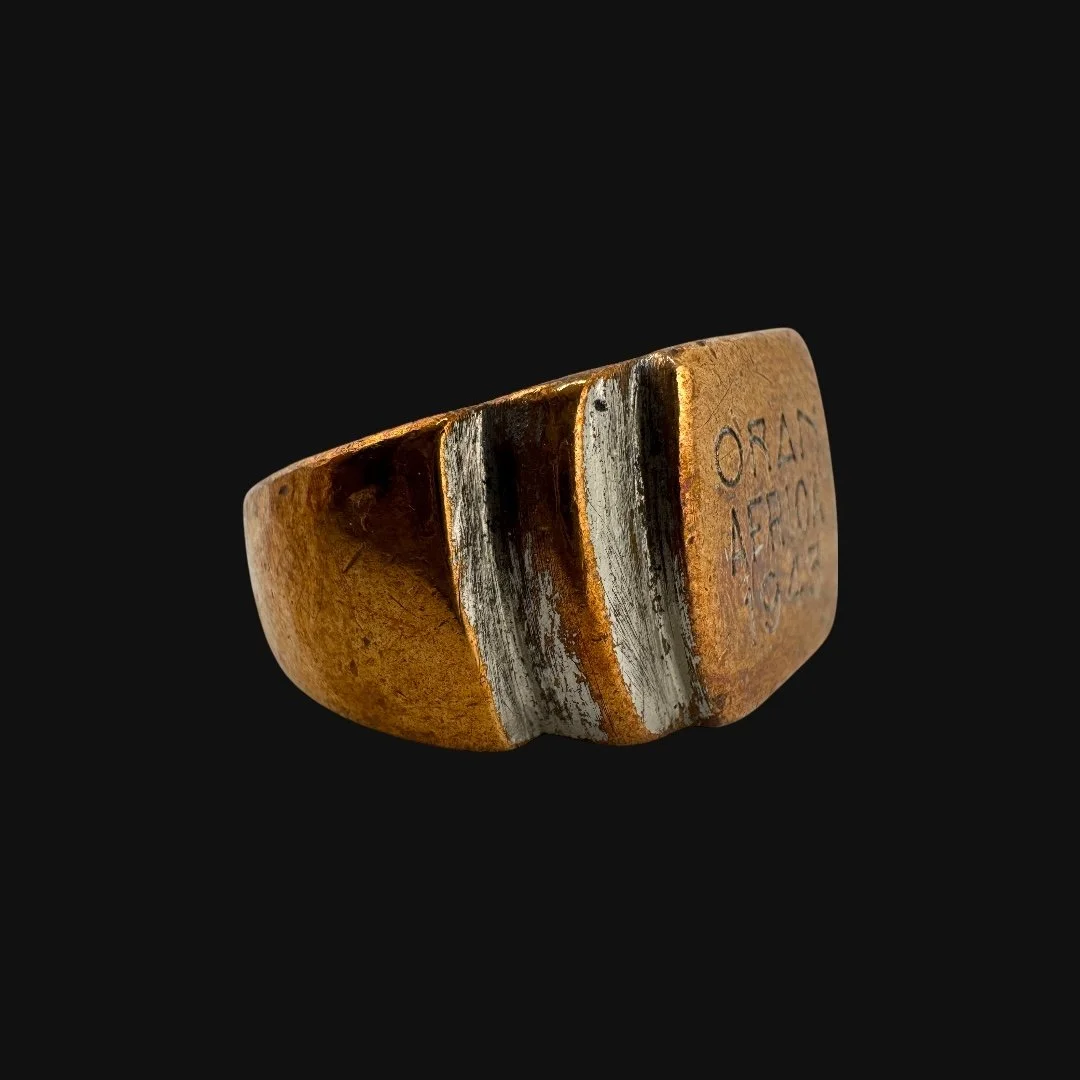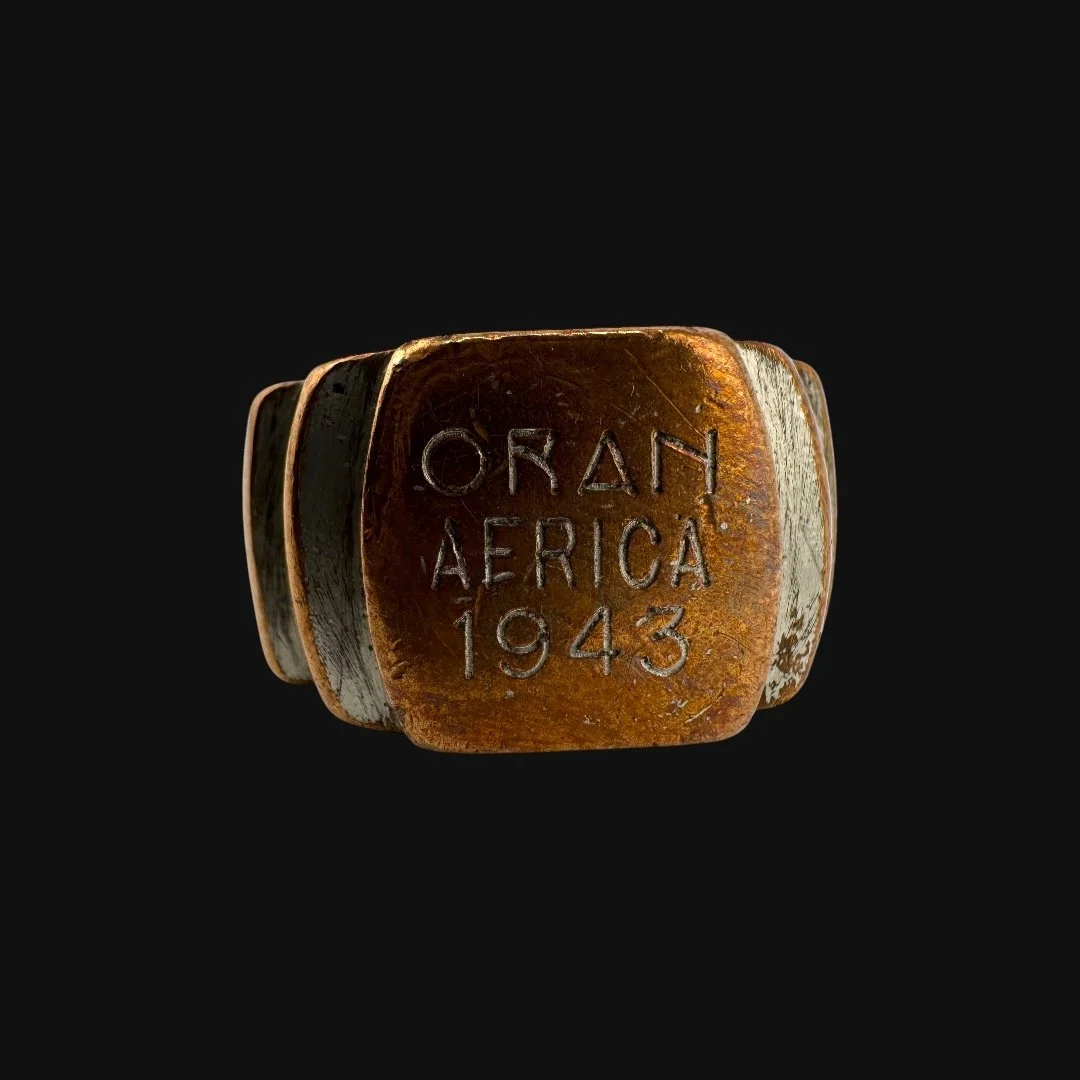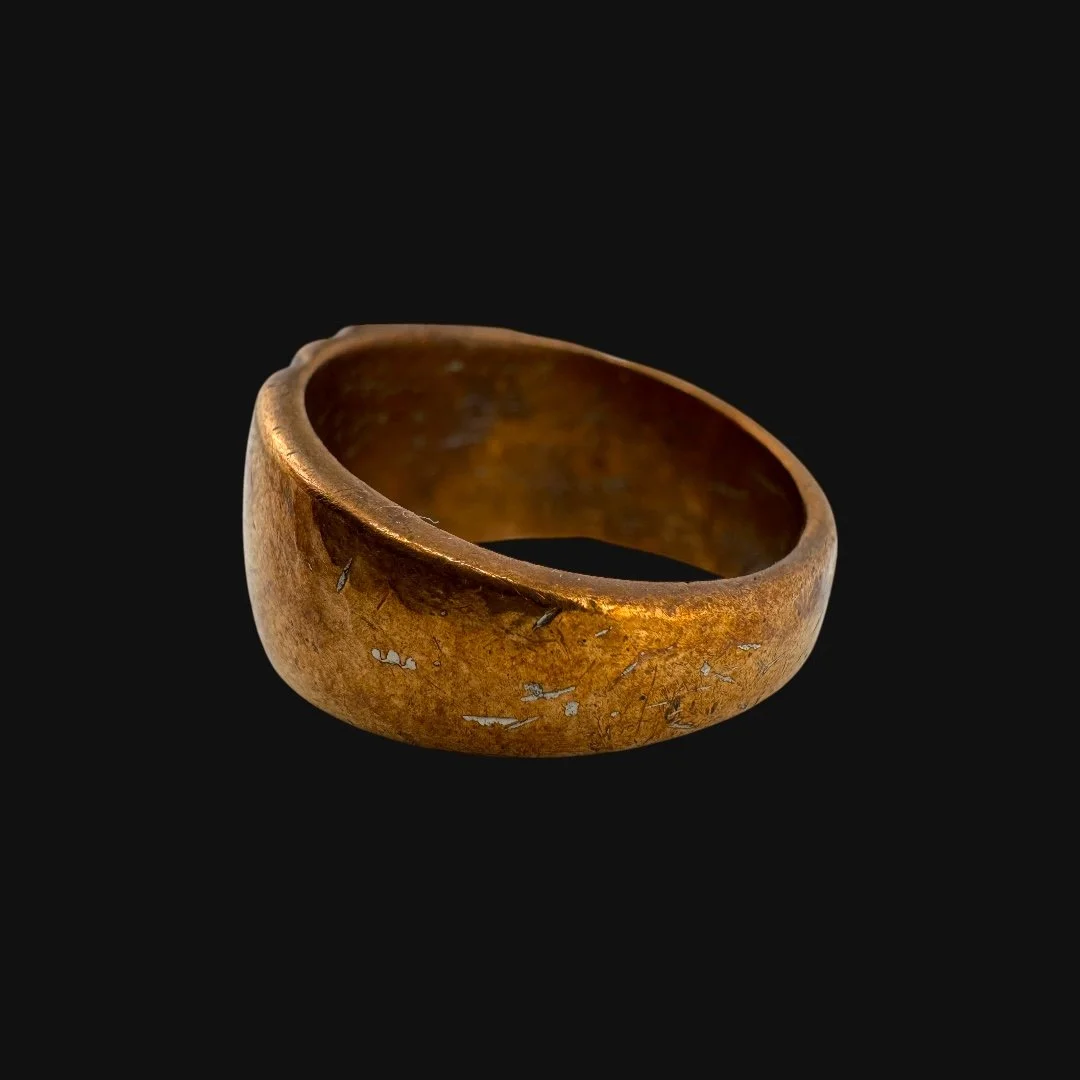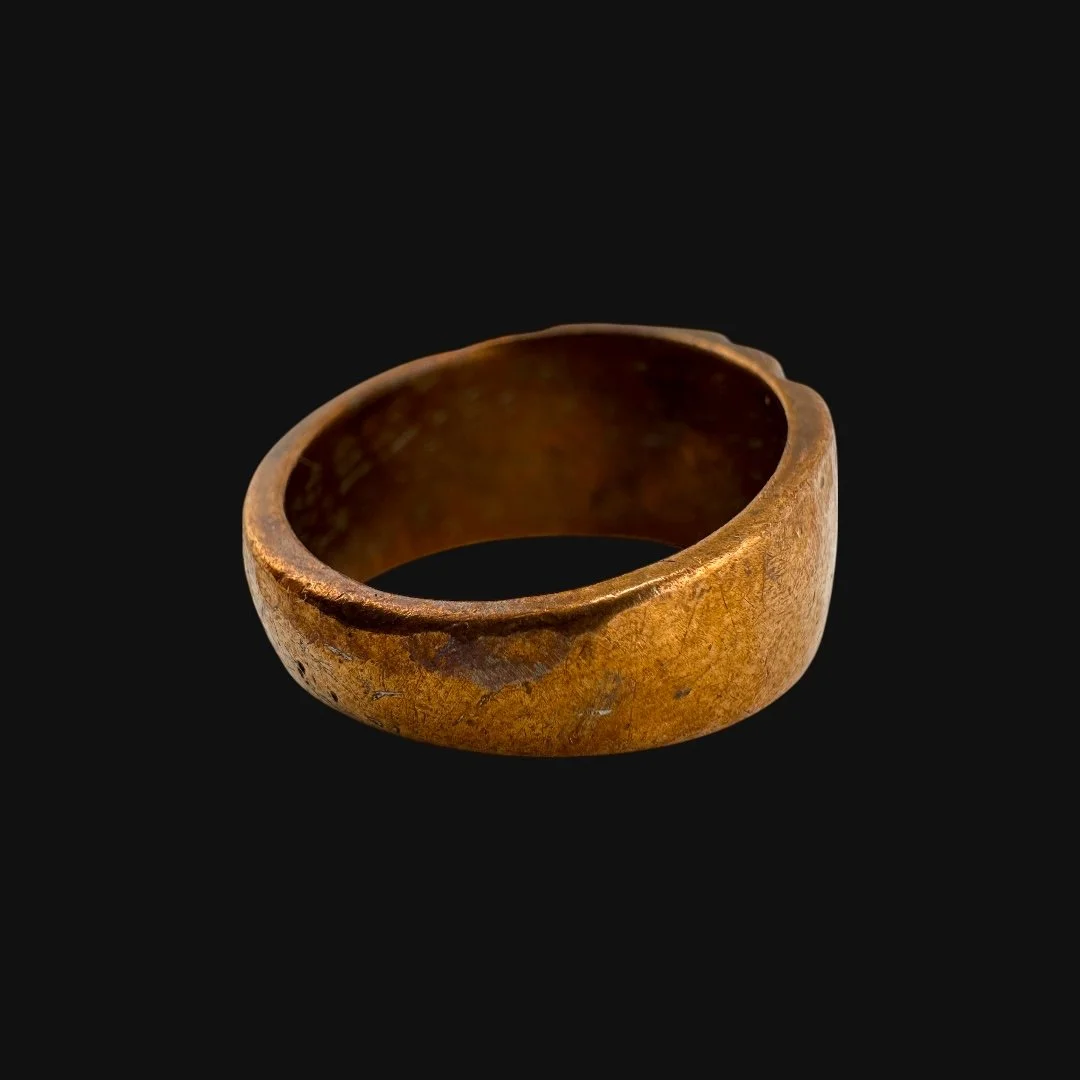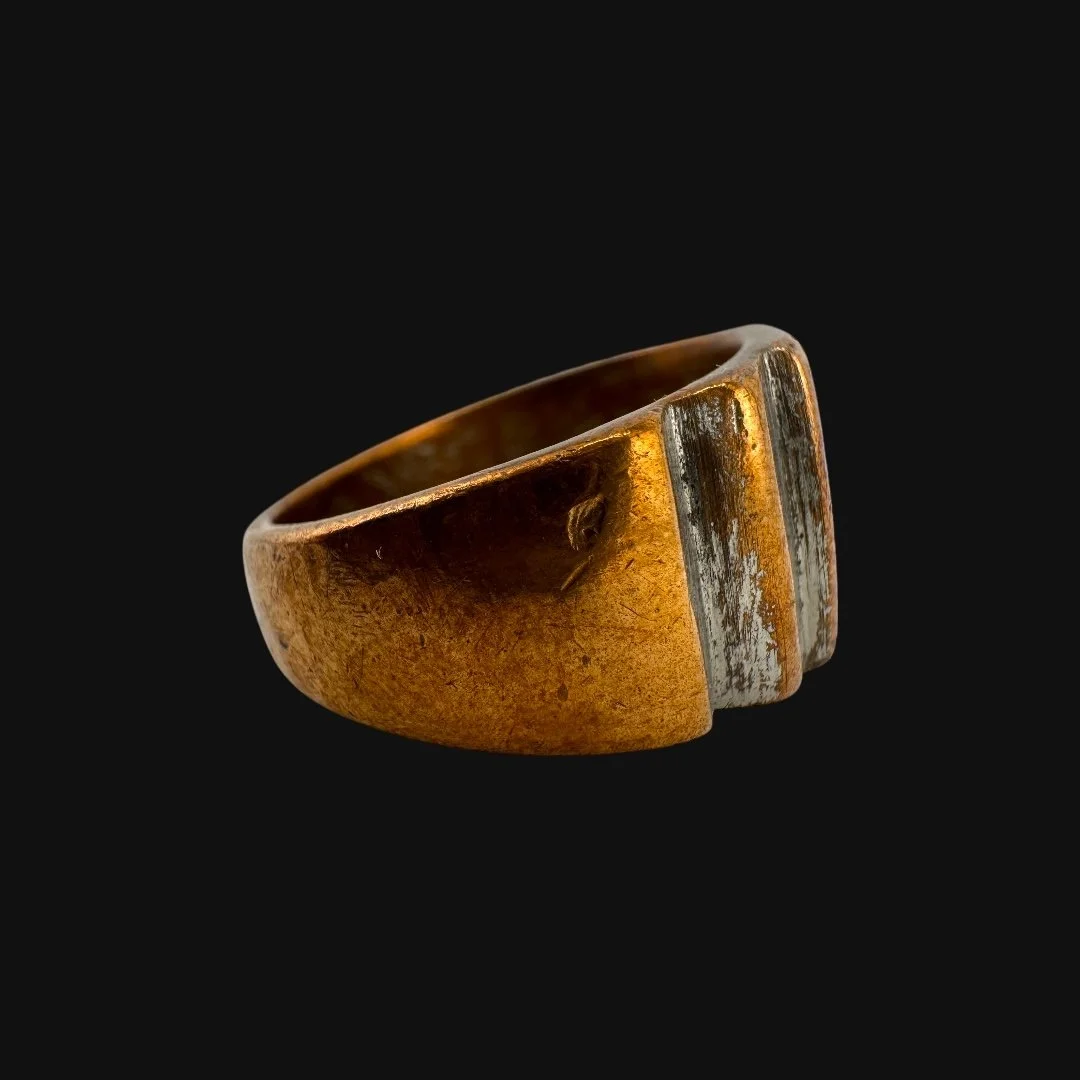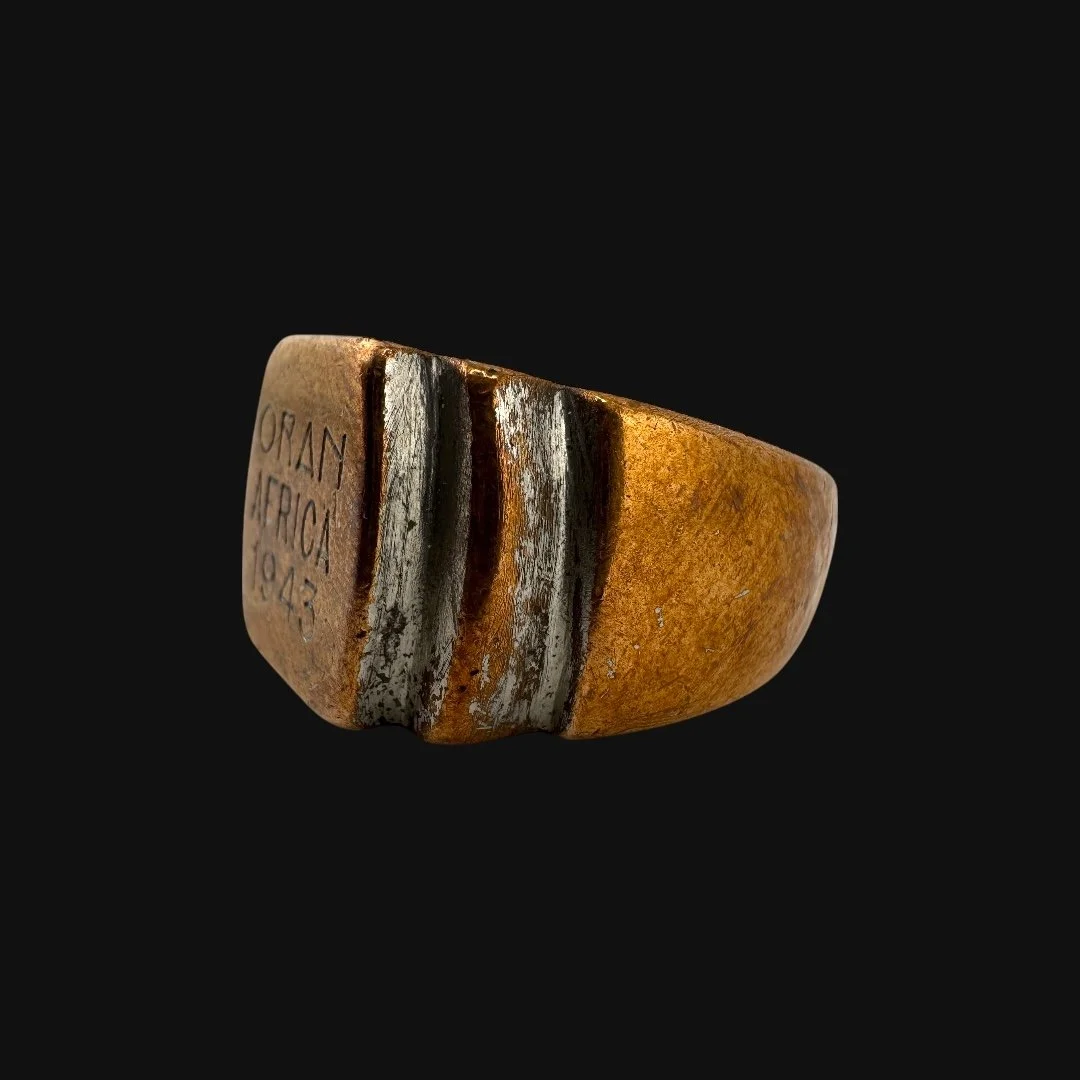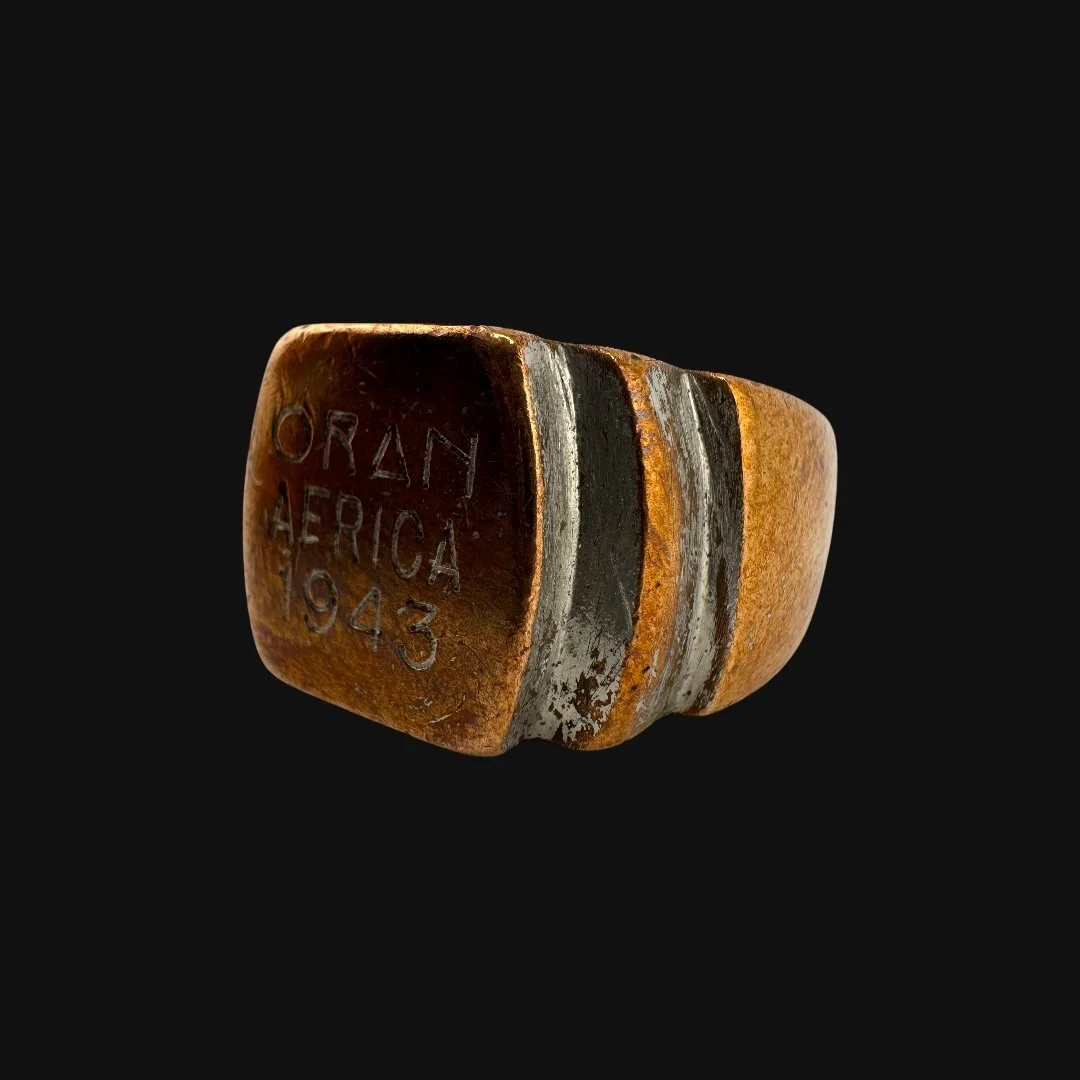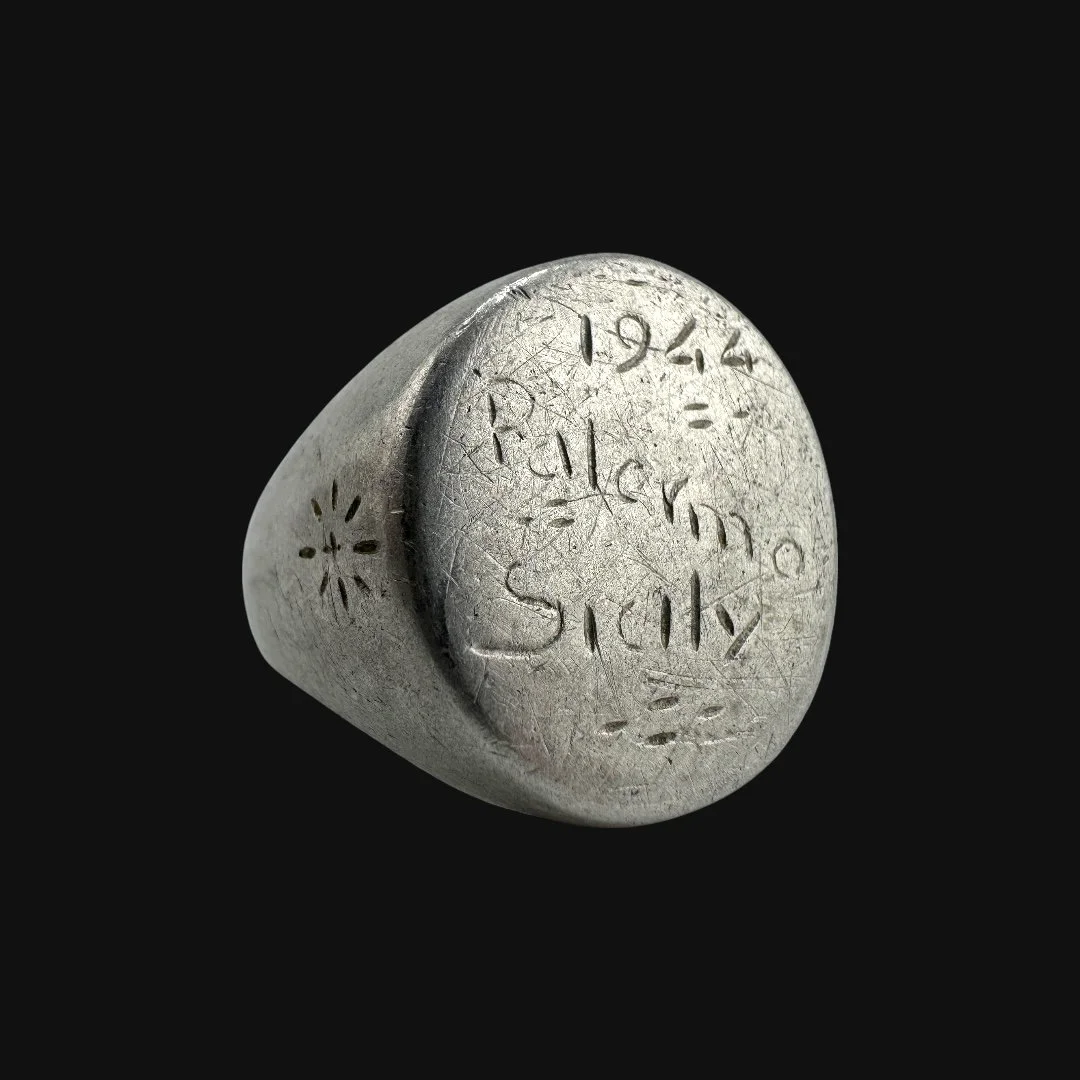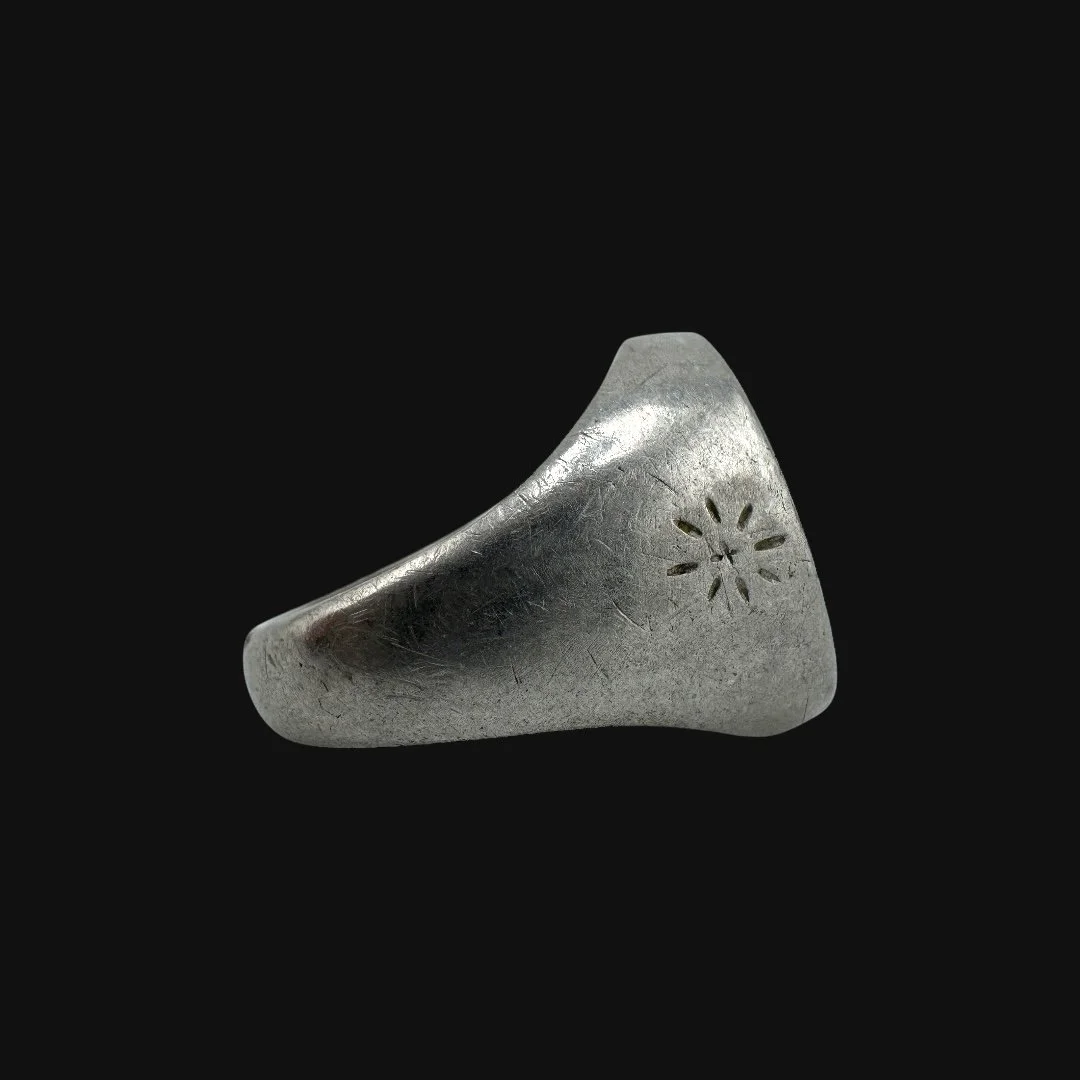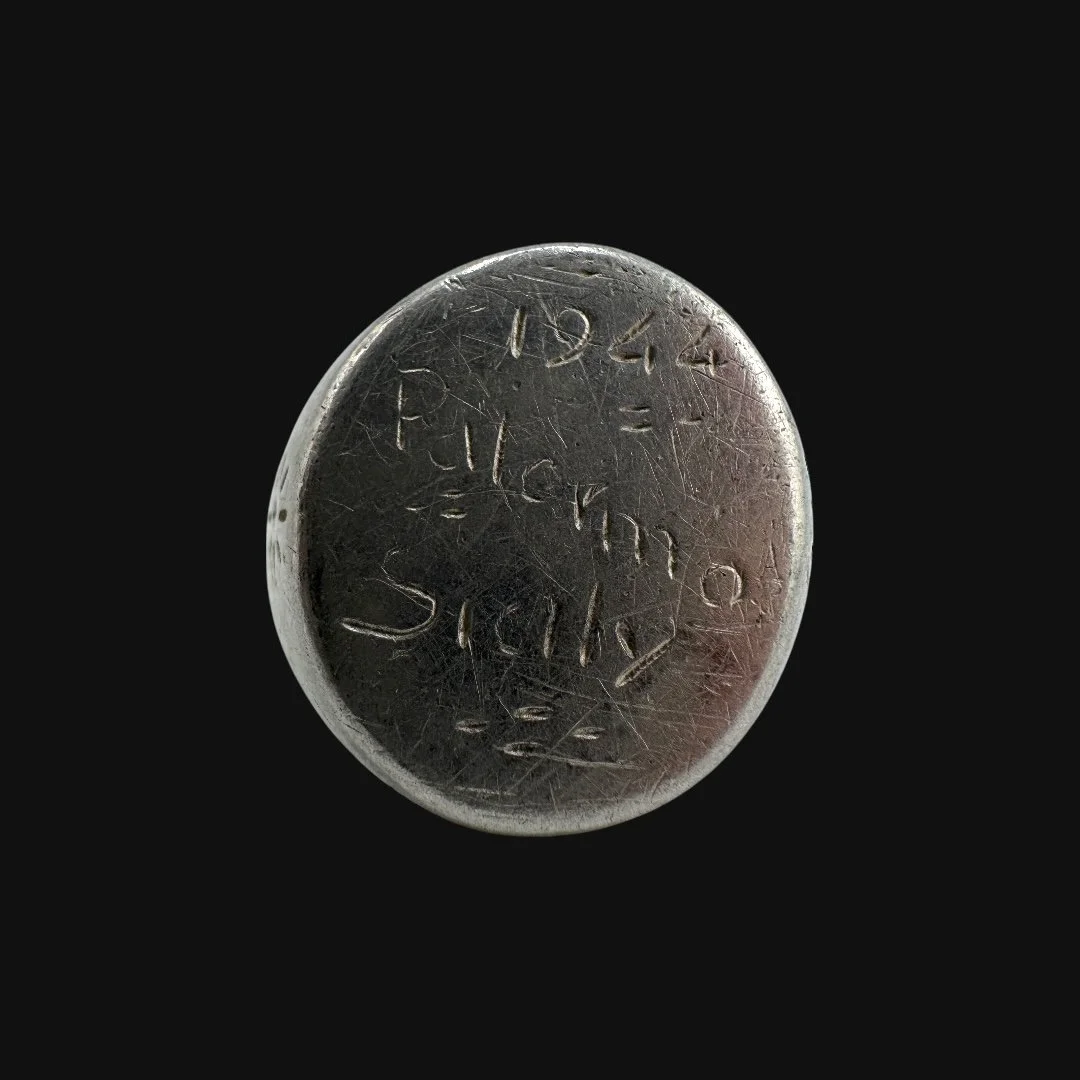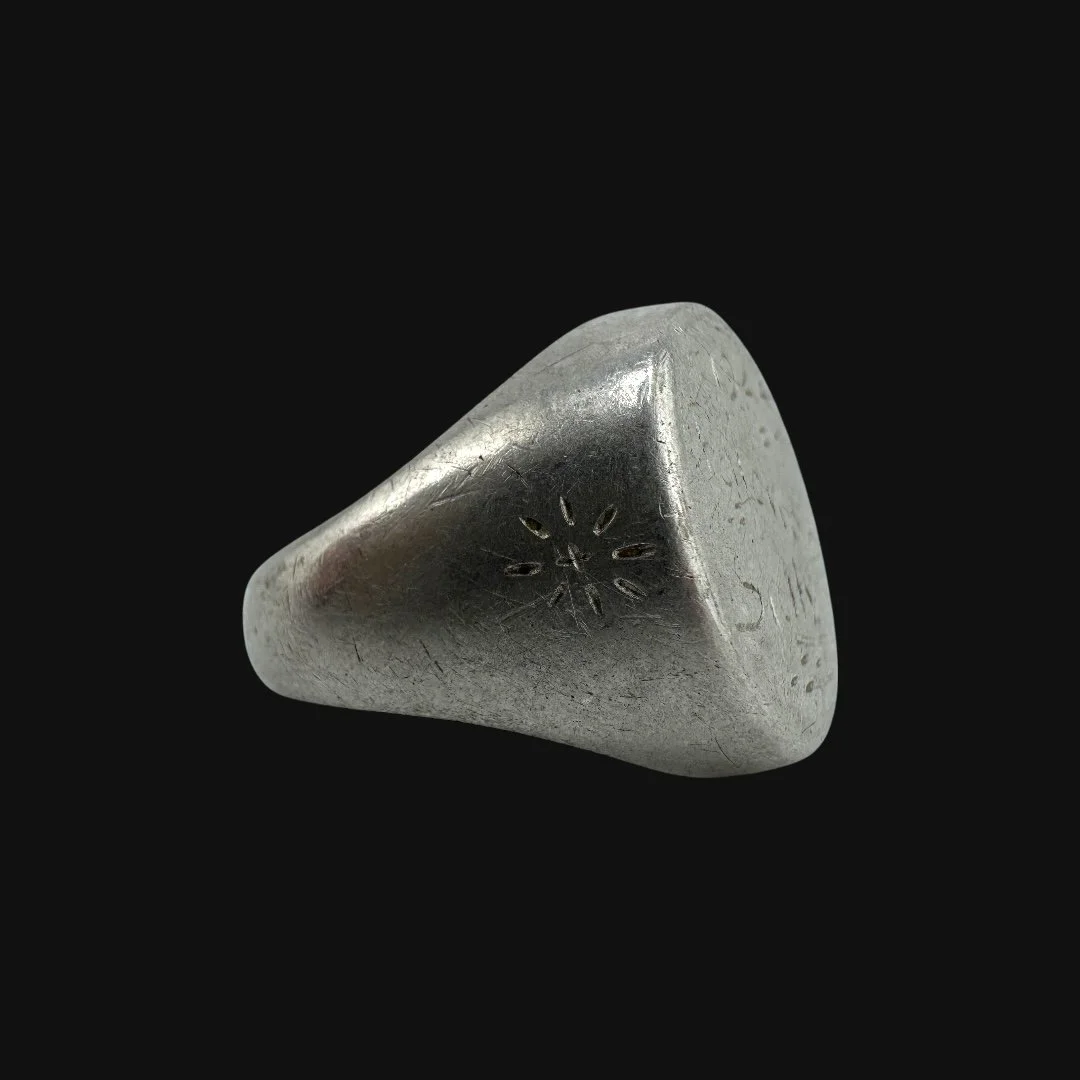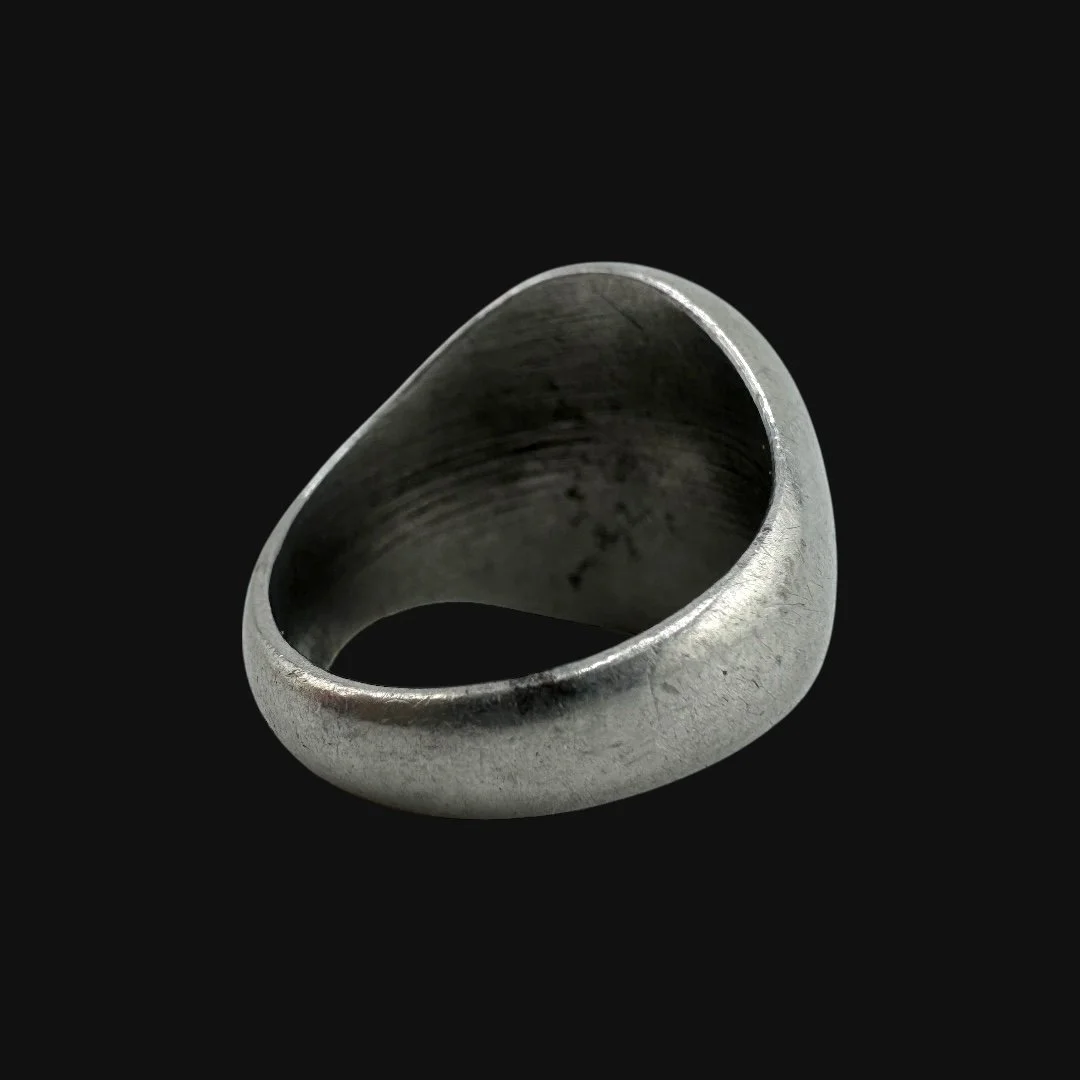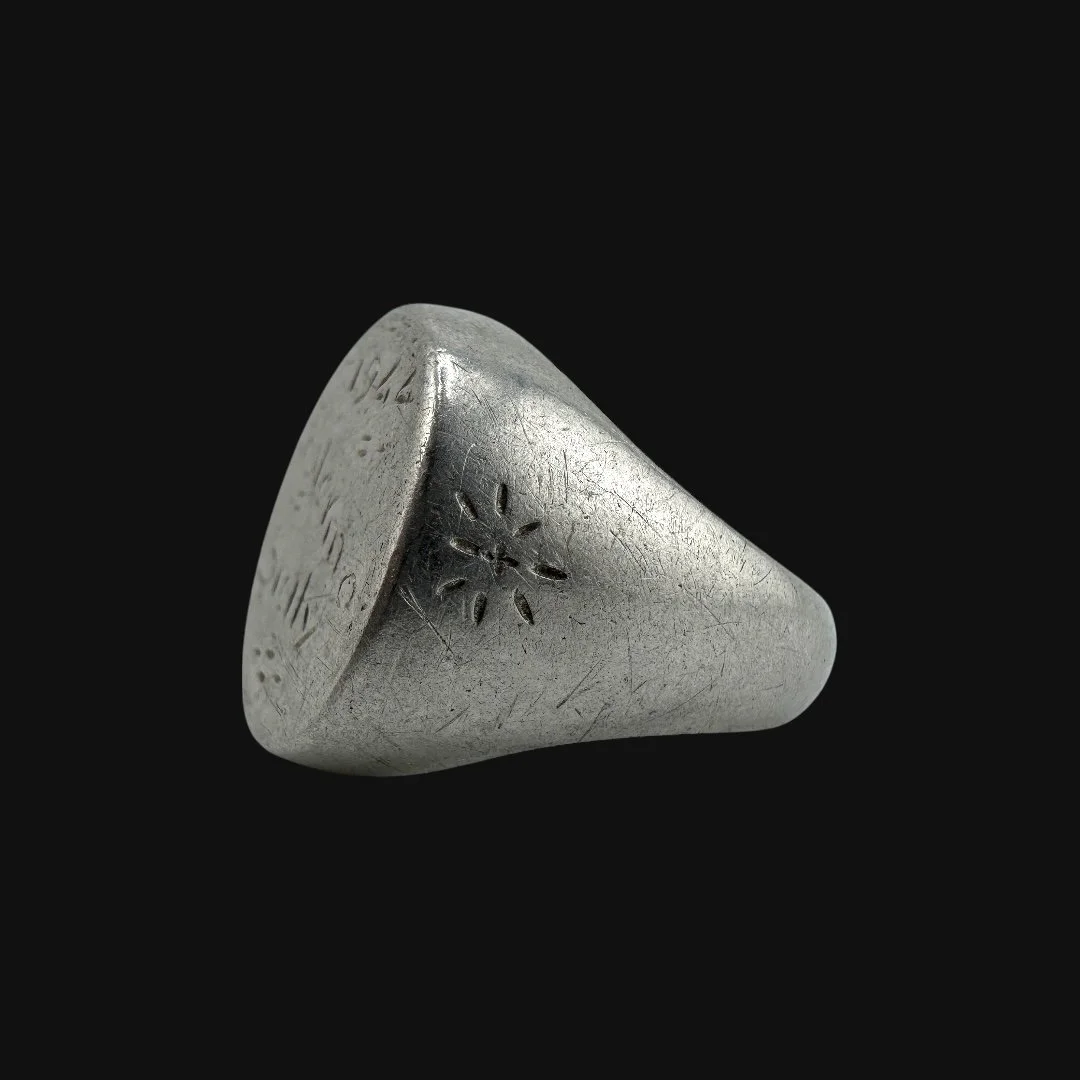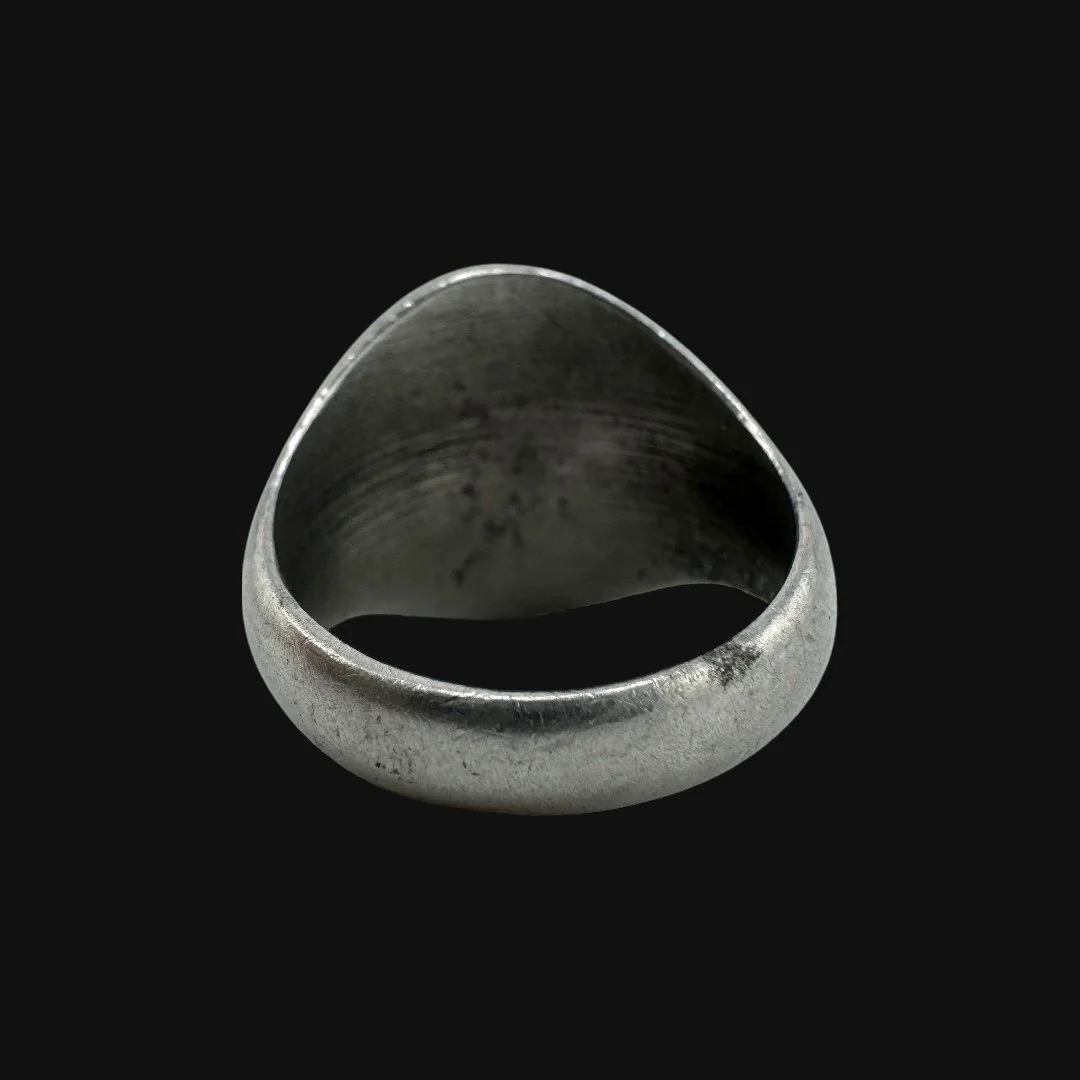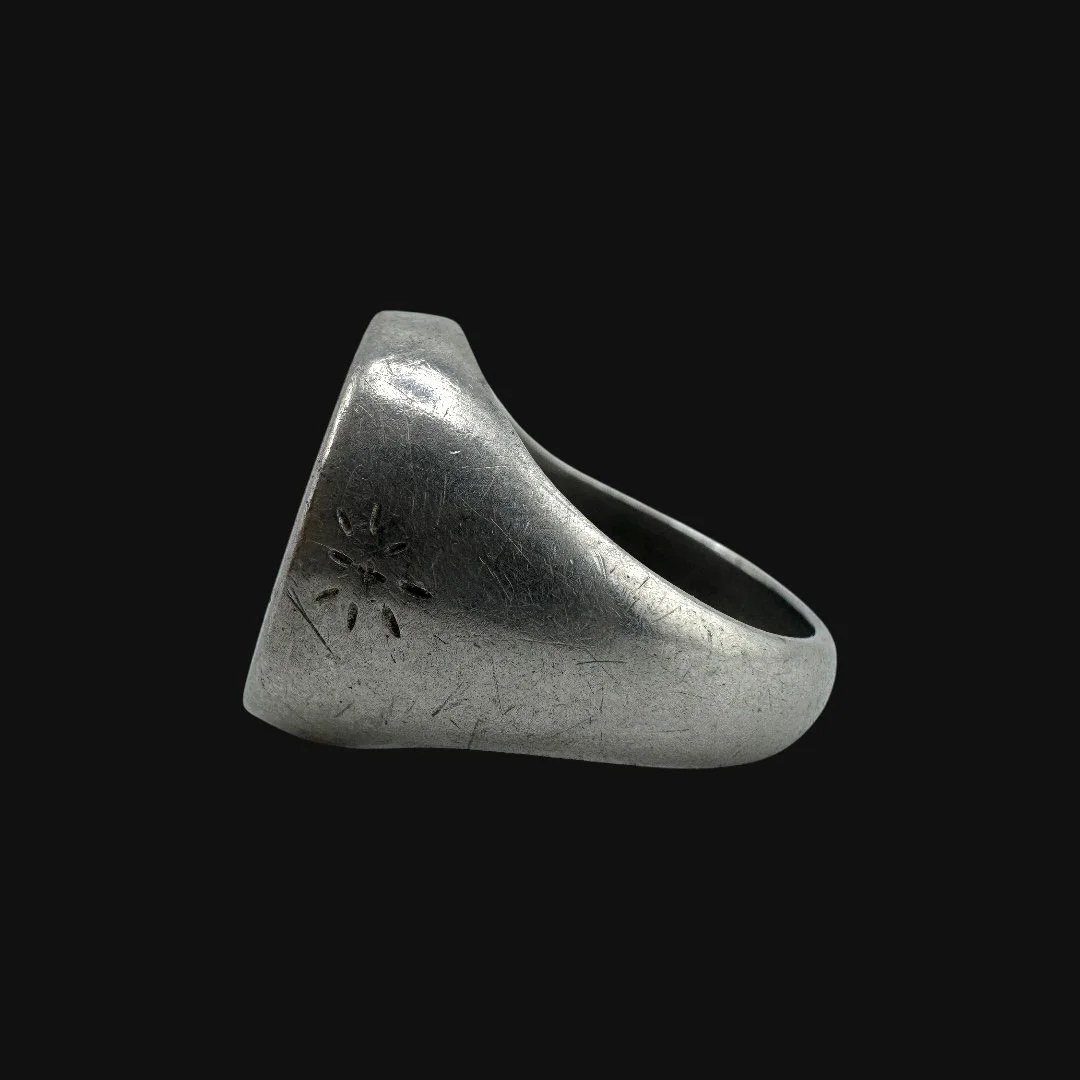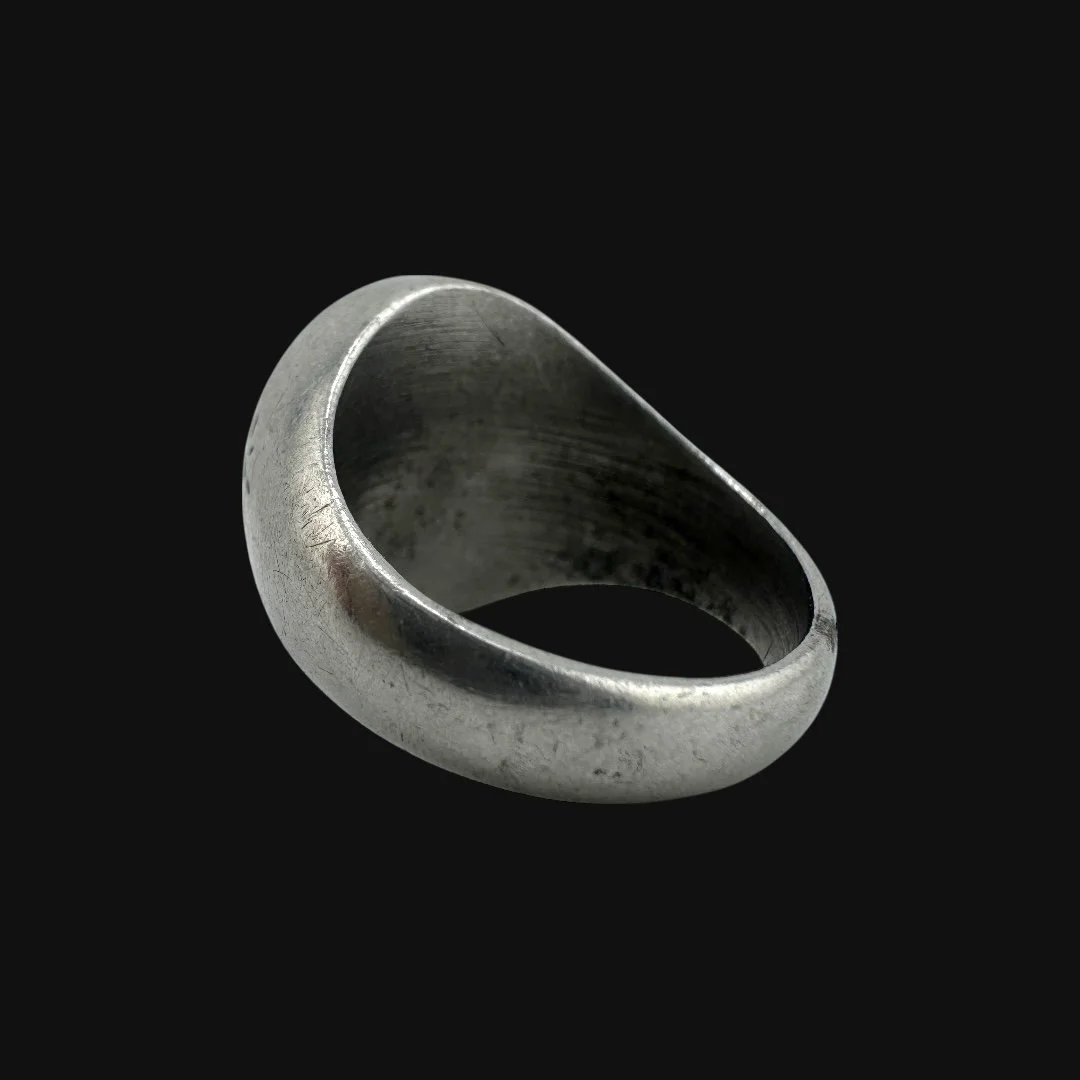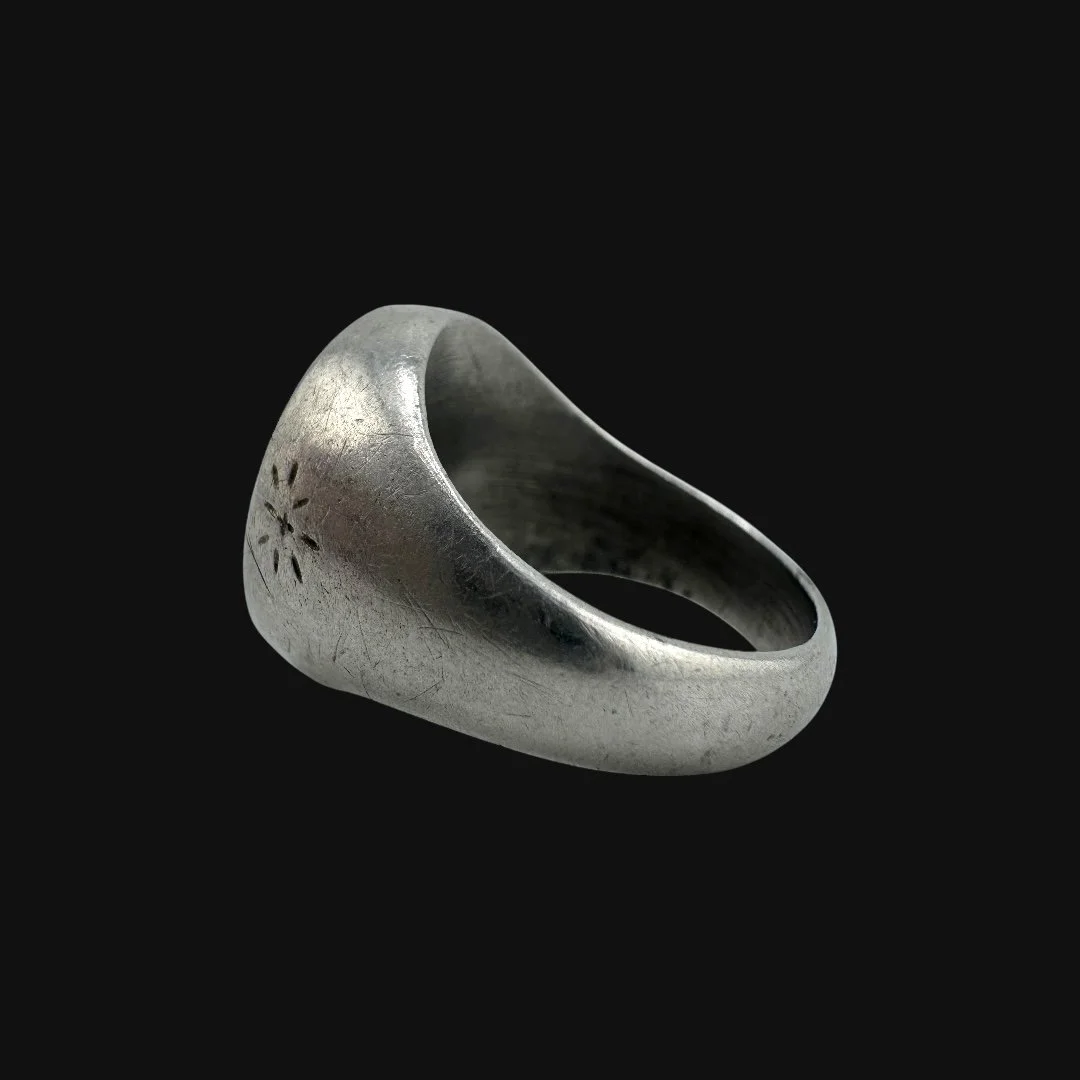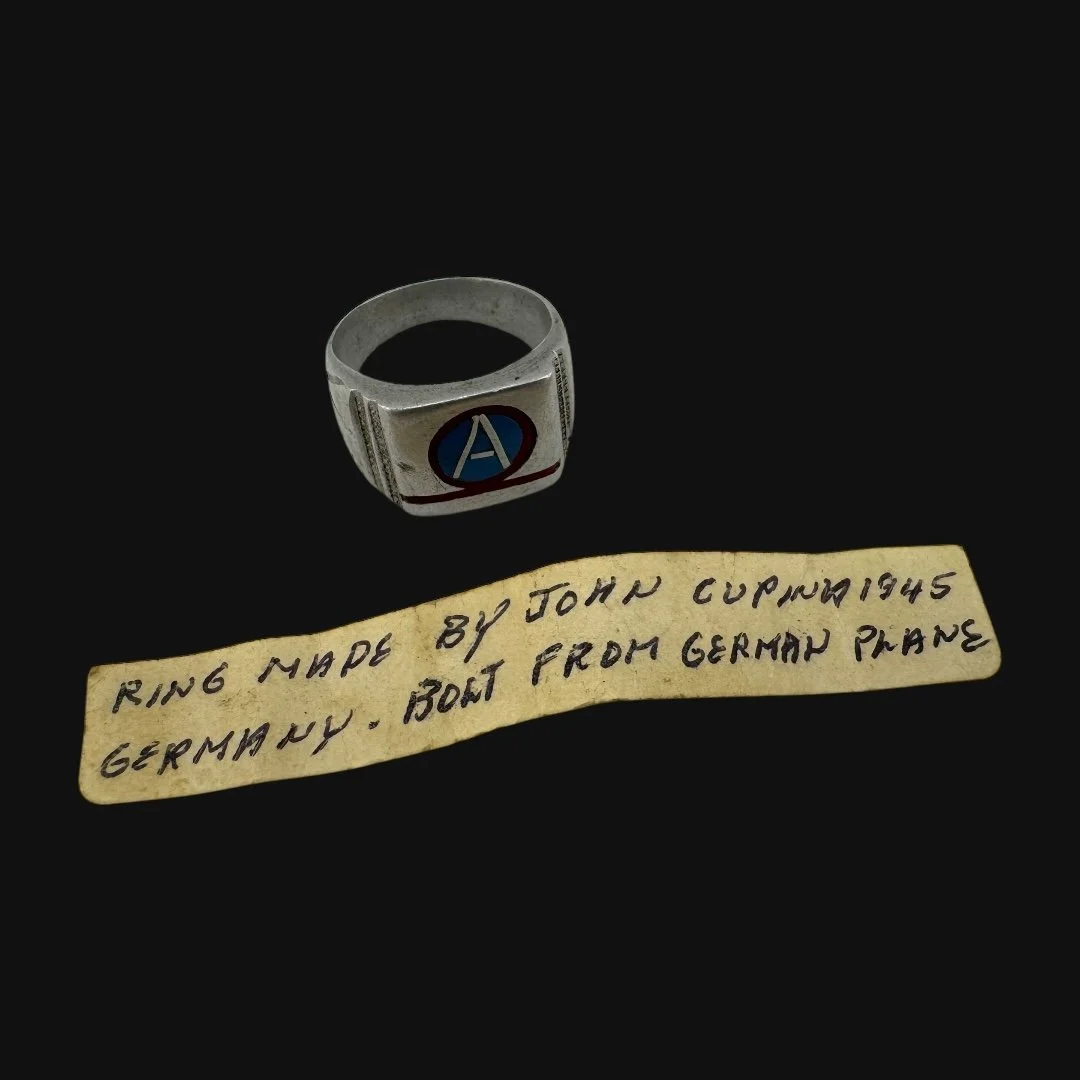 Image 1 of 15
Image 1 of 15

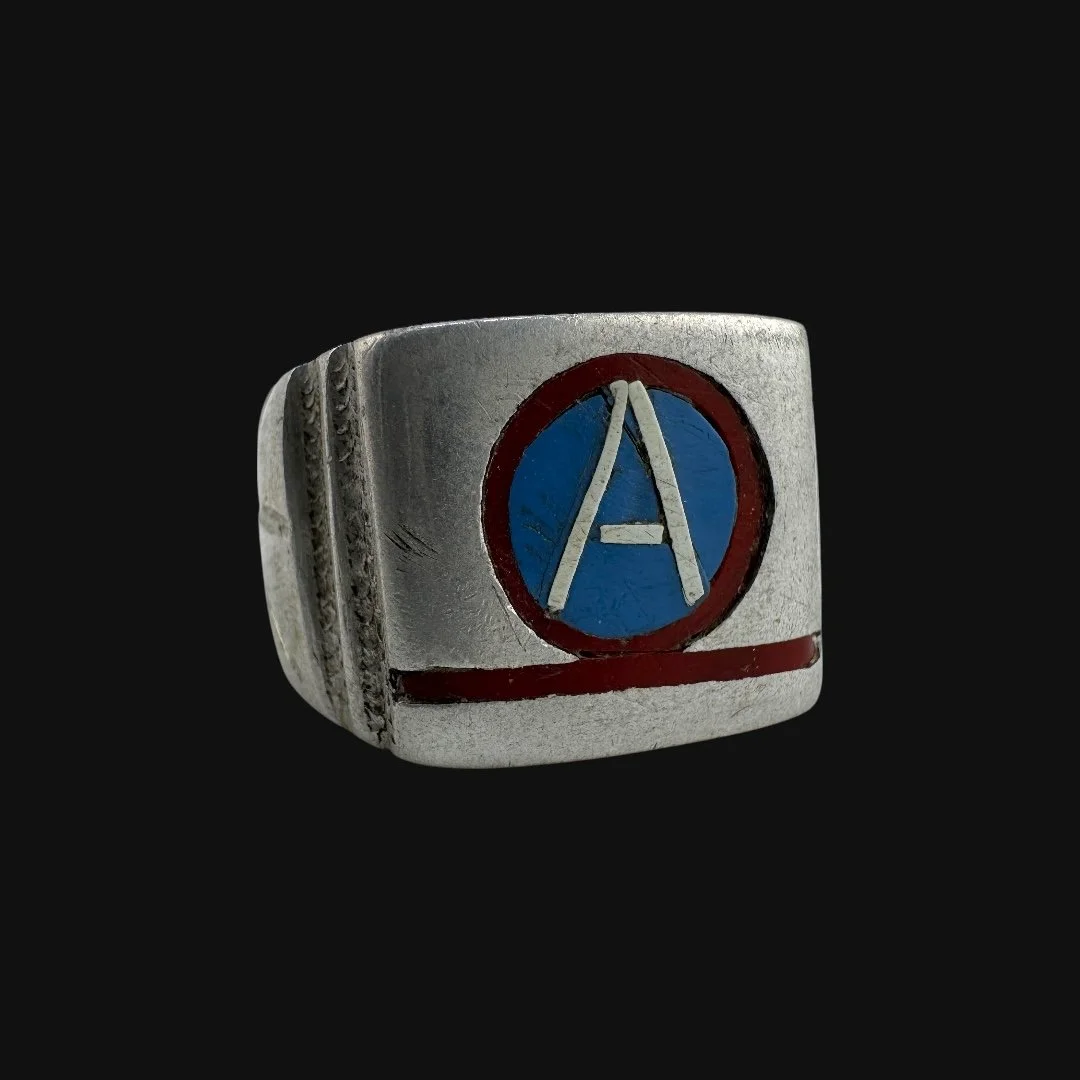 Image 2 of 15
Image 2 of 15

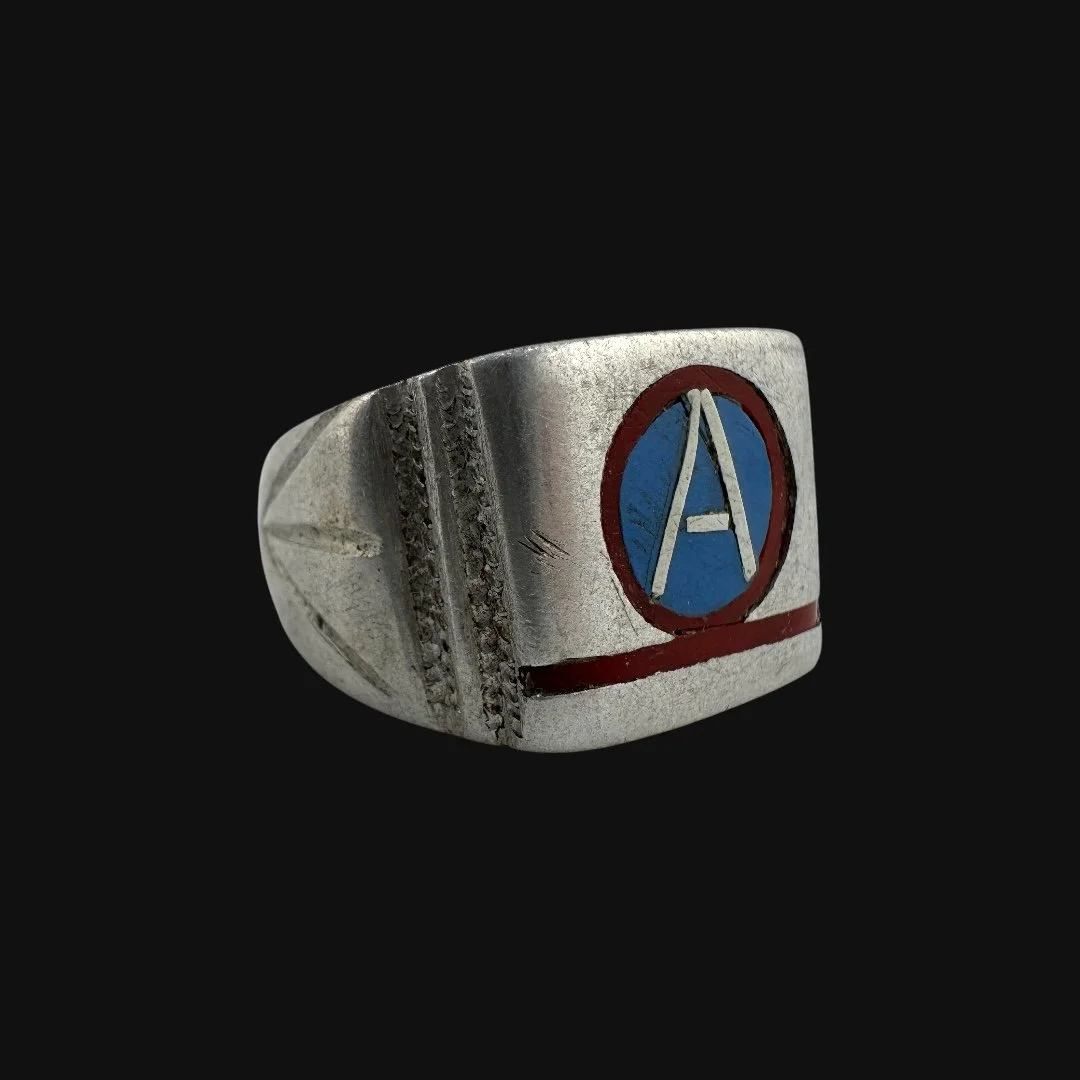 Image 3 of 15
Image 3 of 15

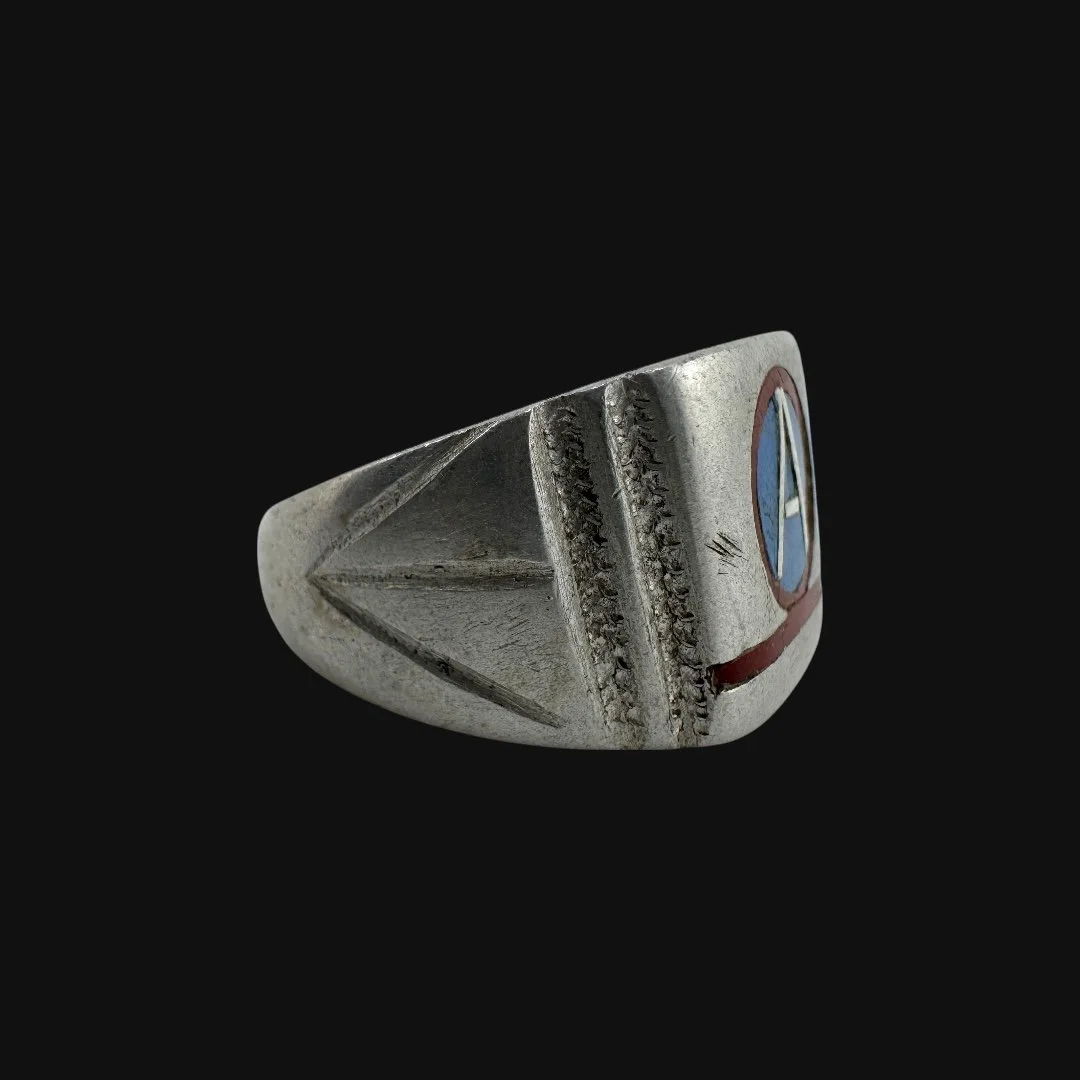 Image 4 of 15
Image 4 of 15

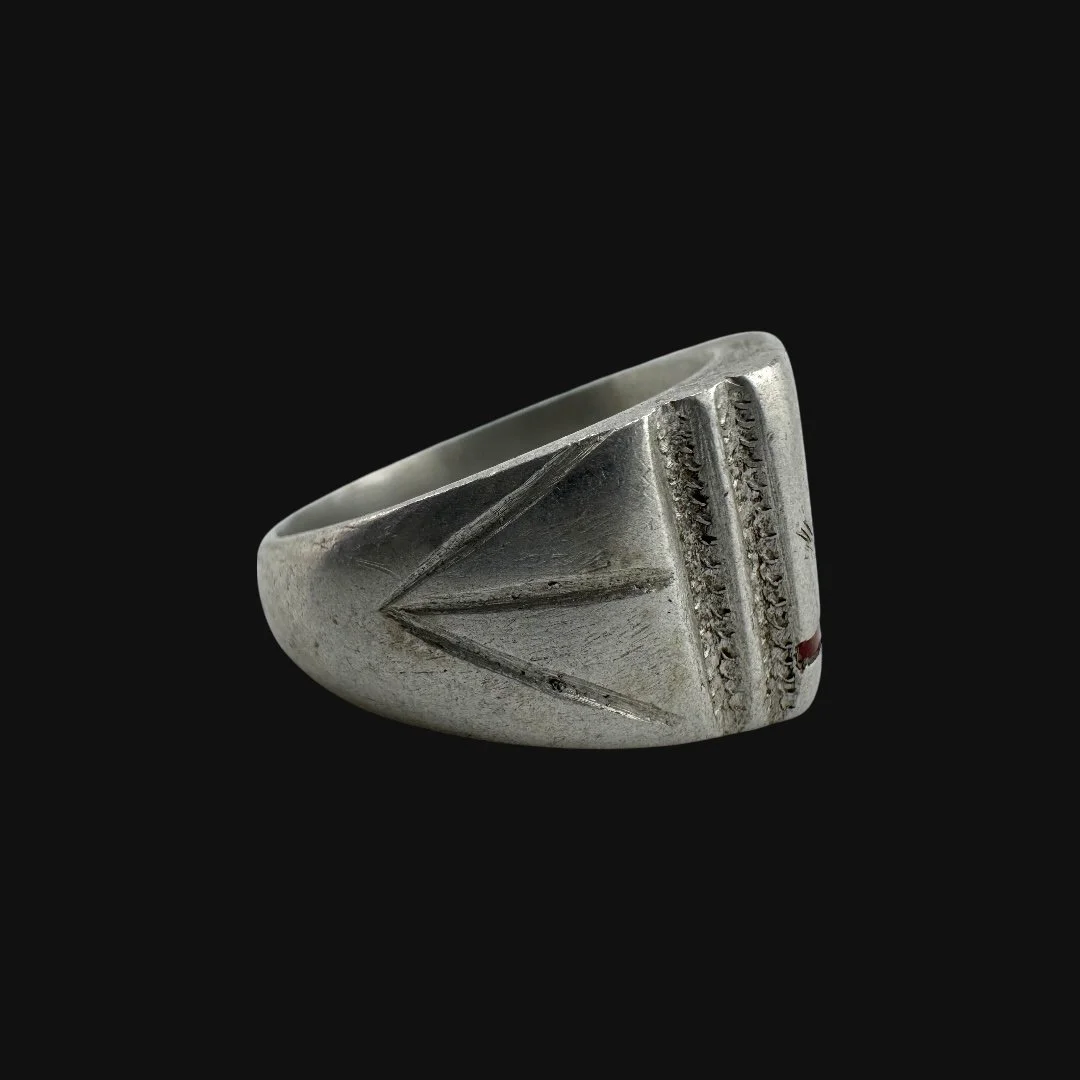 Image 5 of 15
Image 5 of 15

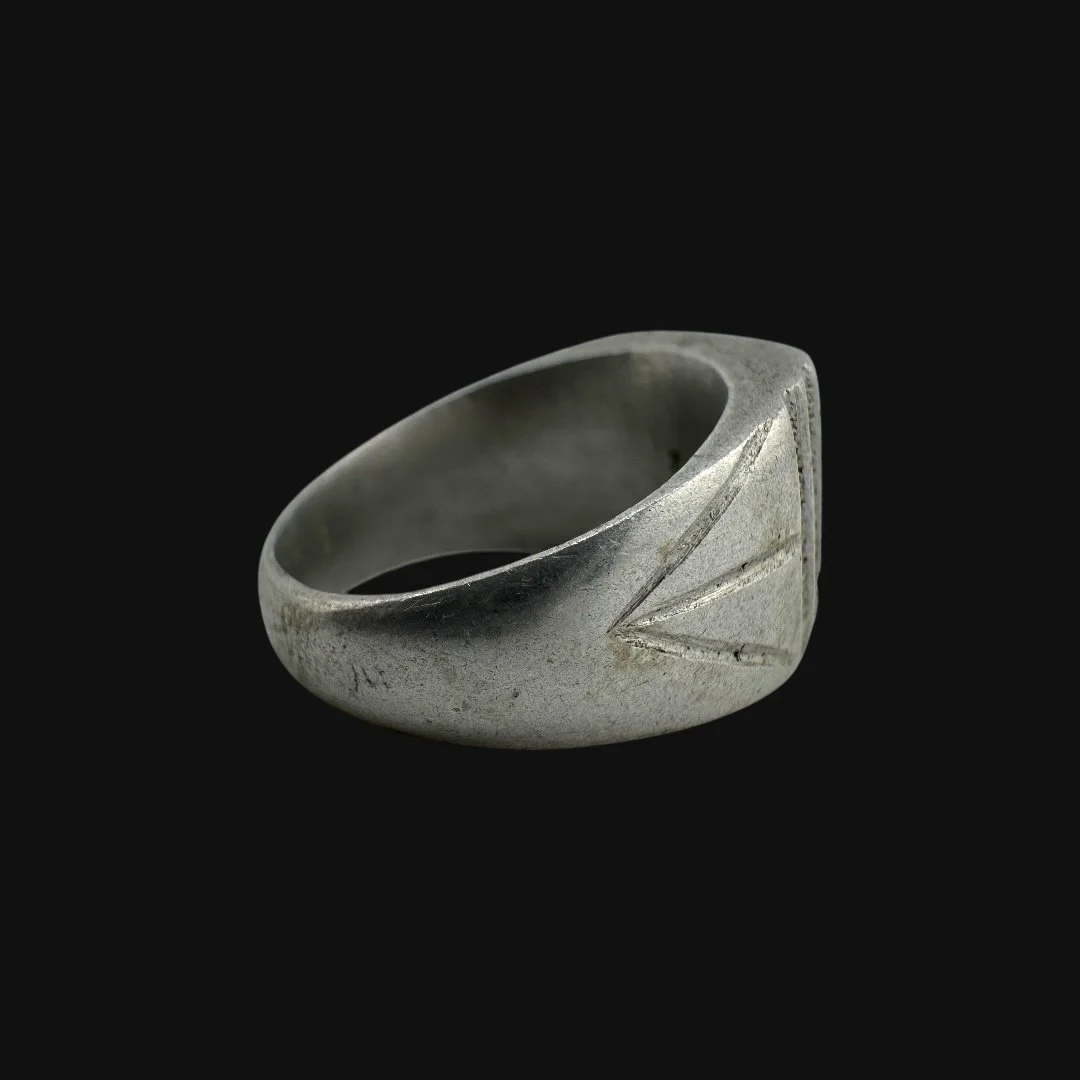 Image 6 of 15
Image 6 of 15

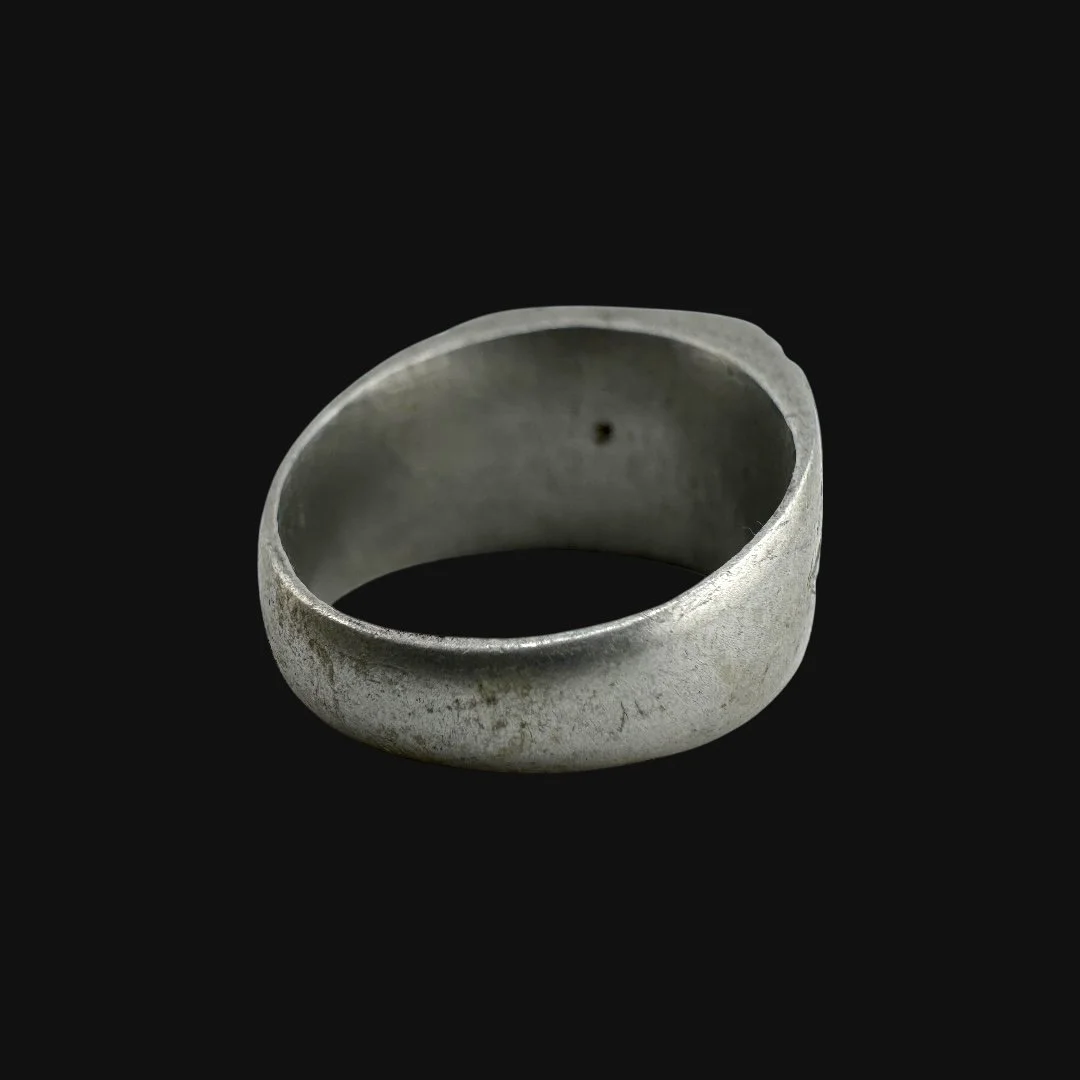 Image 7 of 15
Image 7 of 15

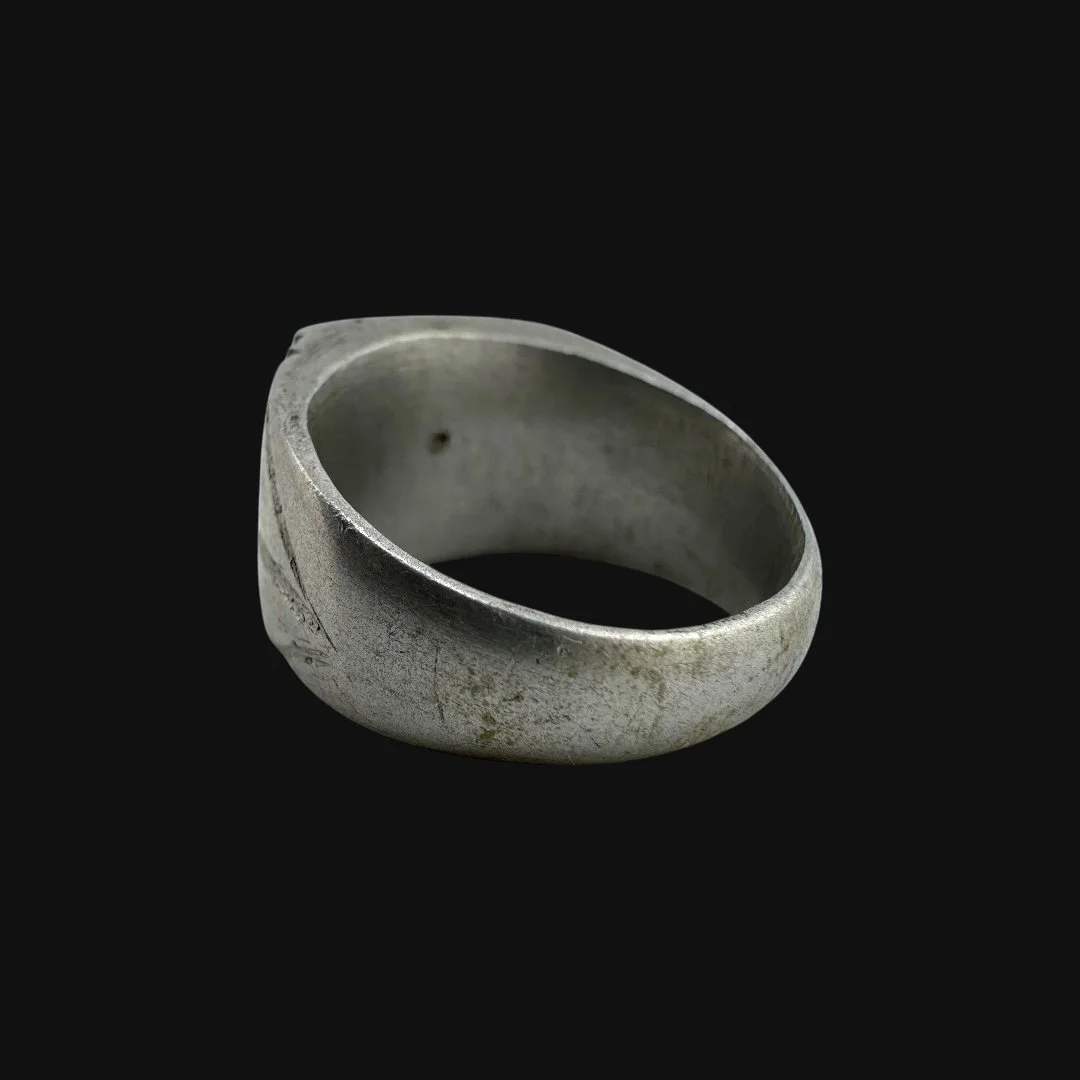 Image 8 of 15
Image 8 of 15

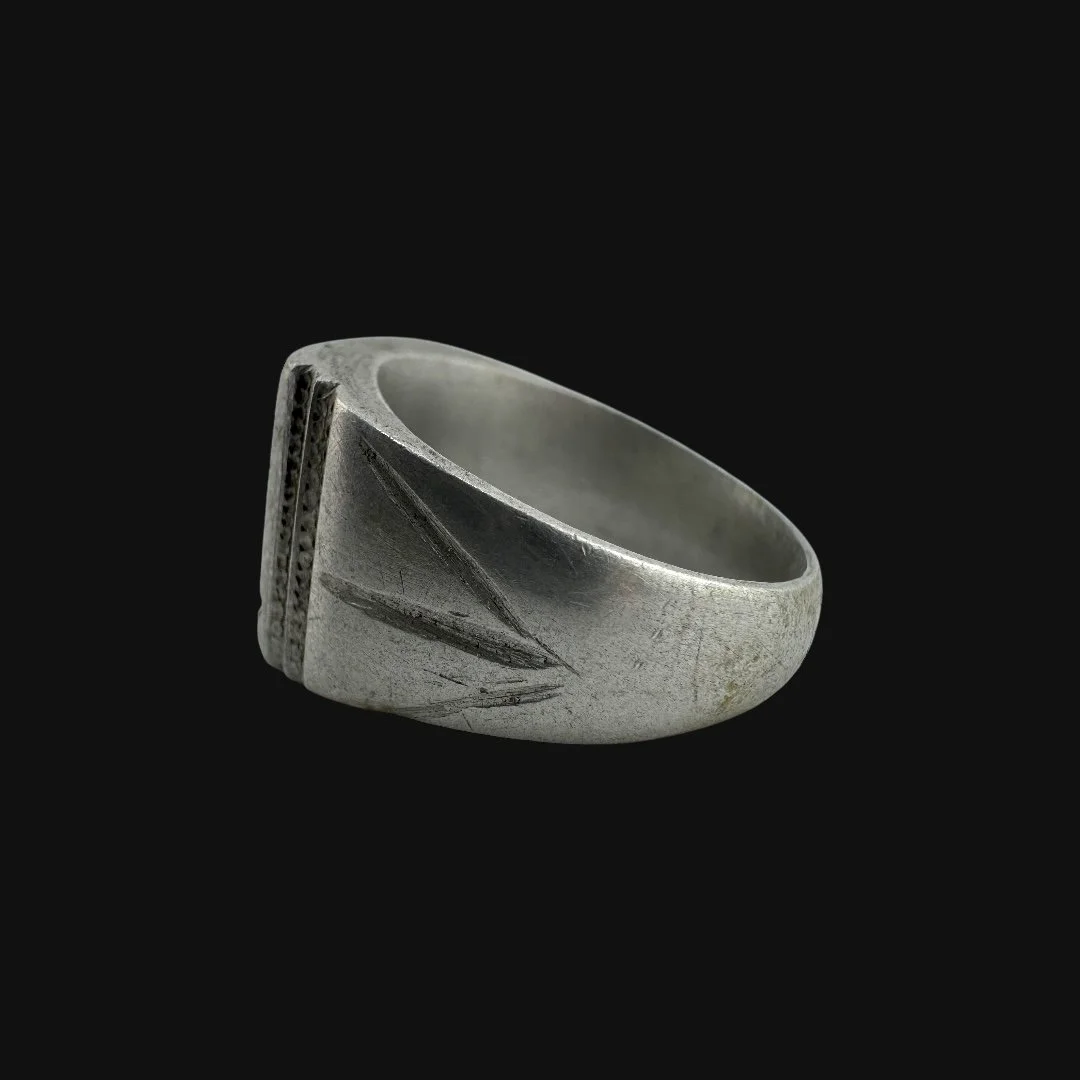 Image 9 of 15
Image 9 of 15

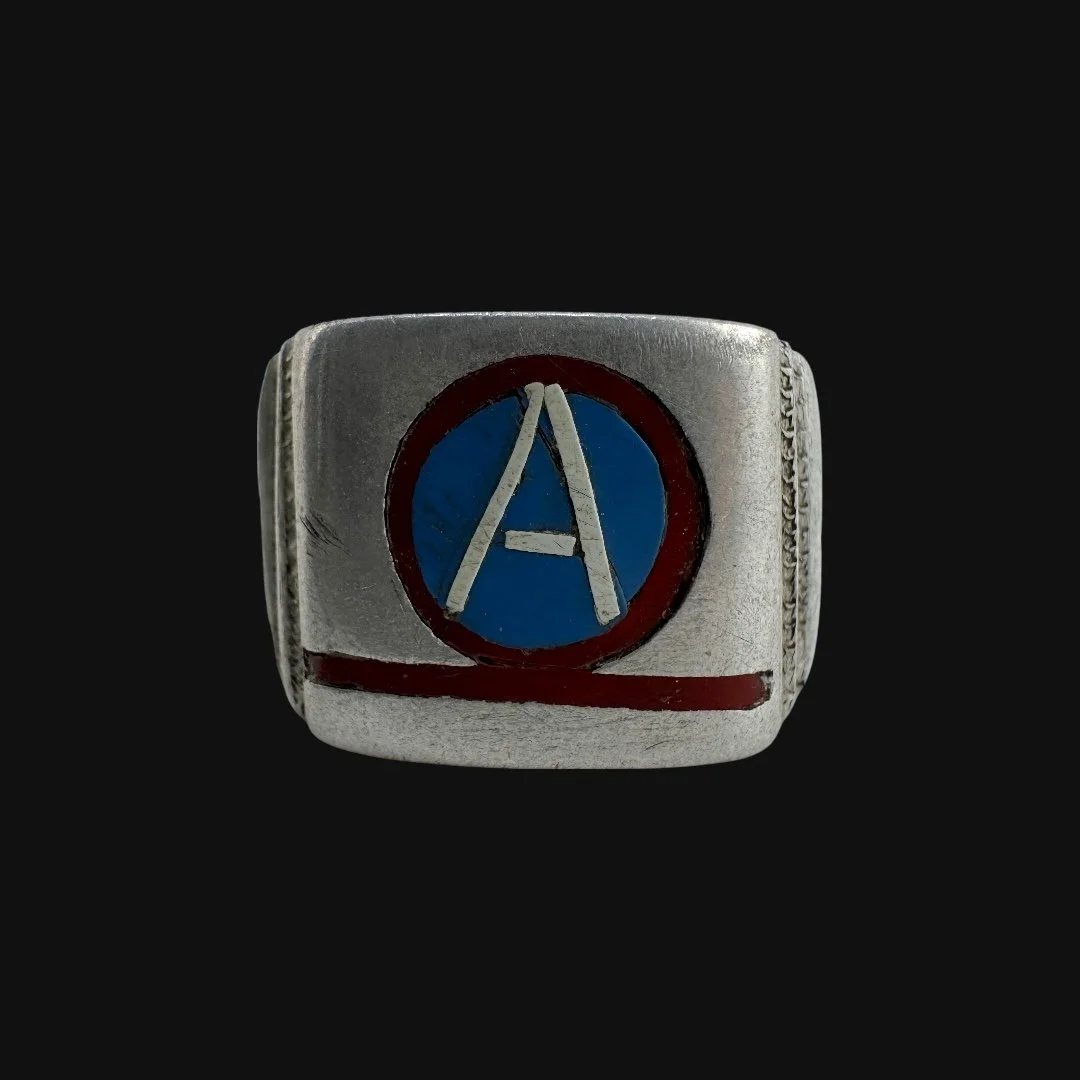 Image 10 of 15
Image 10 of 15

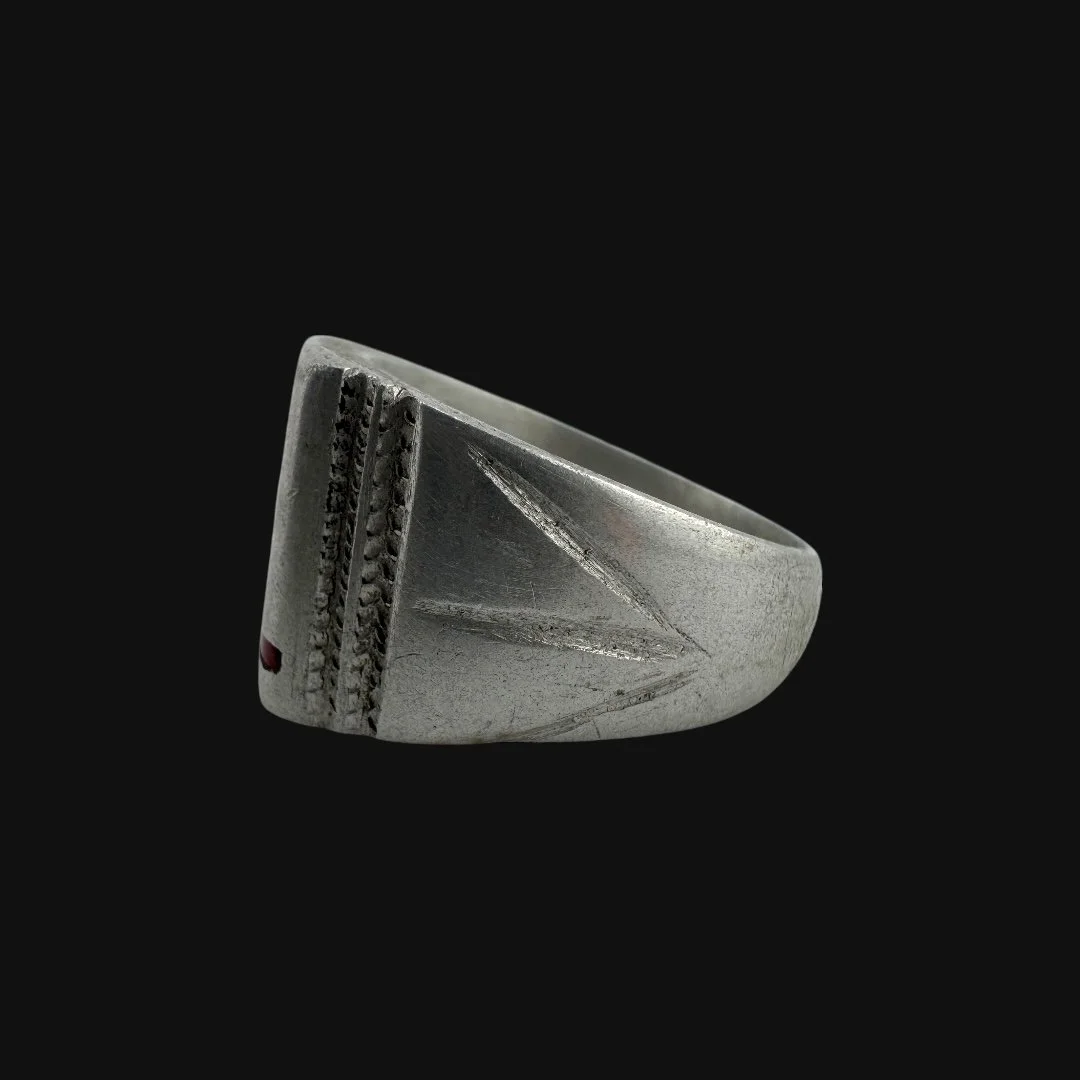 Image 11 of 15
Image 11 of 15

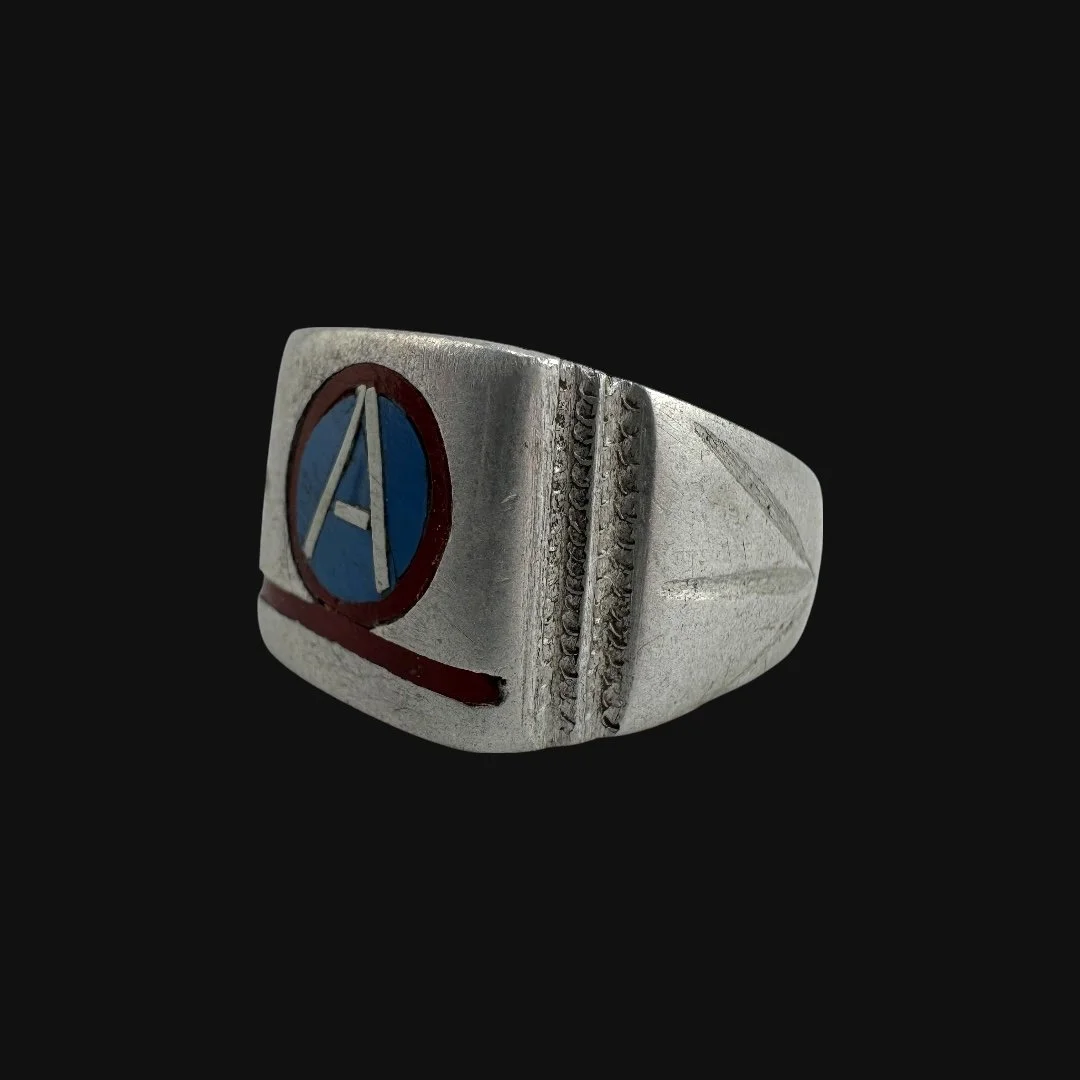 Image 12 of 15
Image 12 of 15

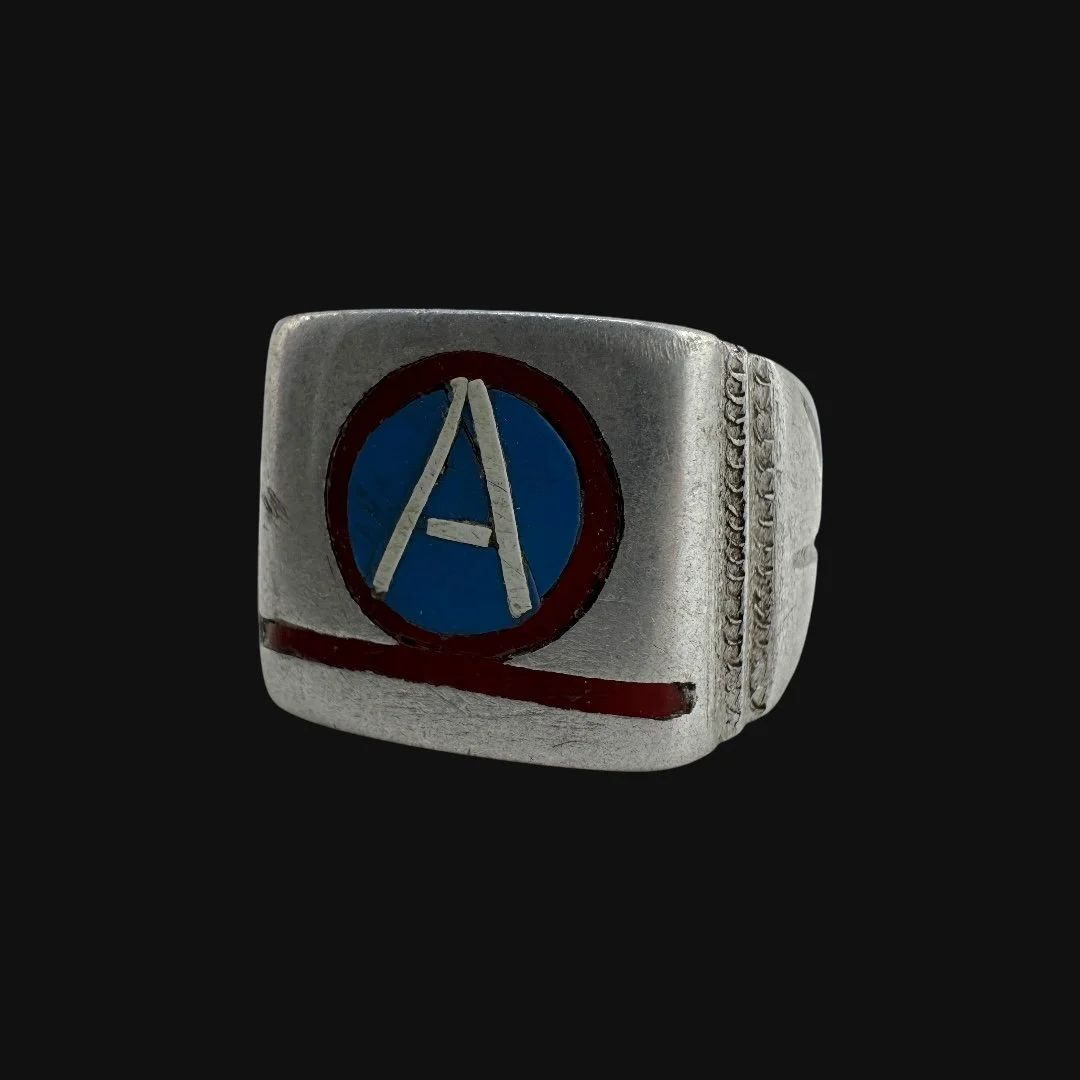 Image 13 of 15
Image 13 of 15

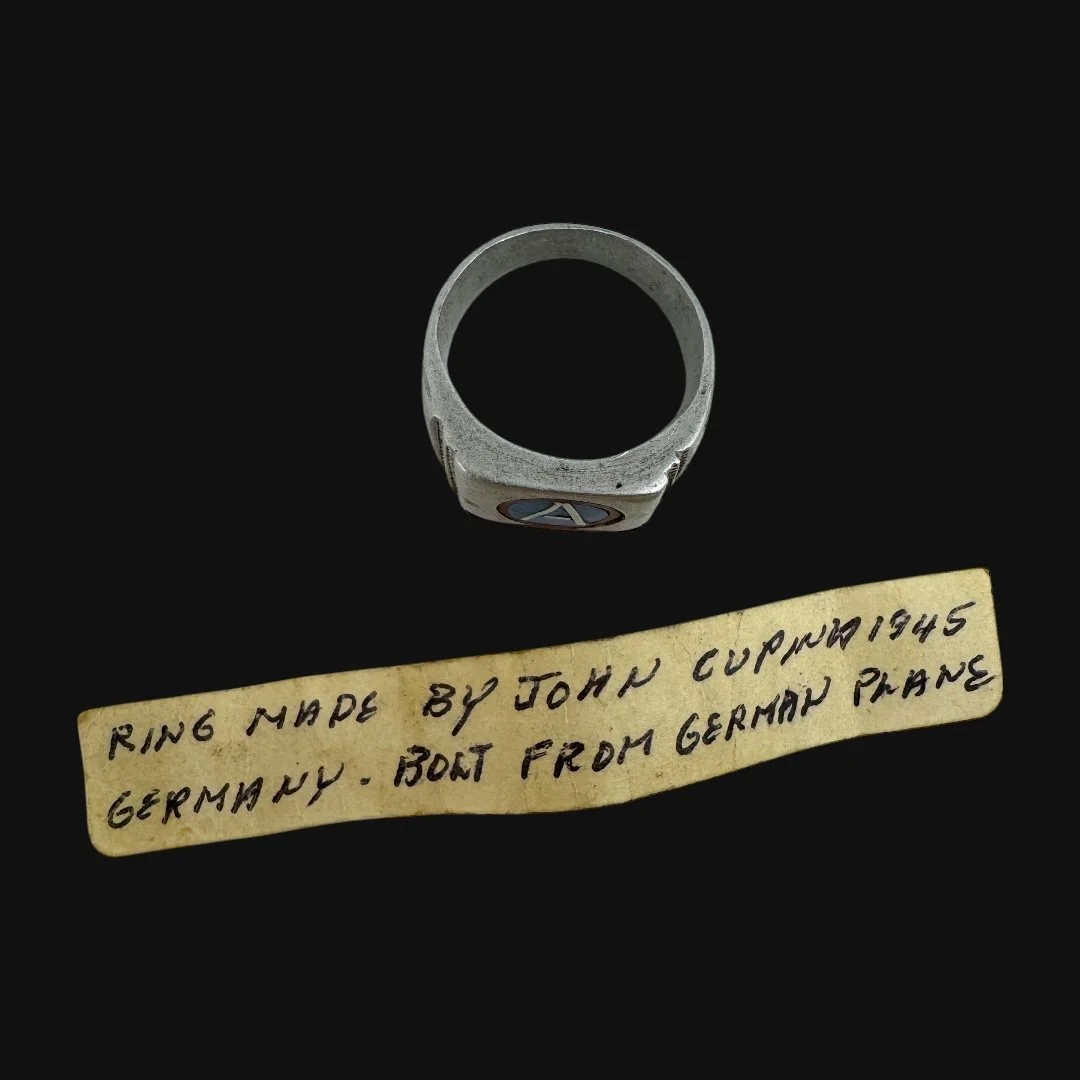 Image 14 of 15
Image 14 of 15

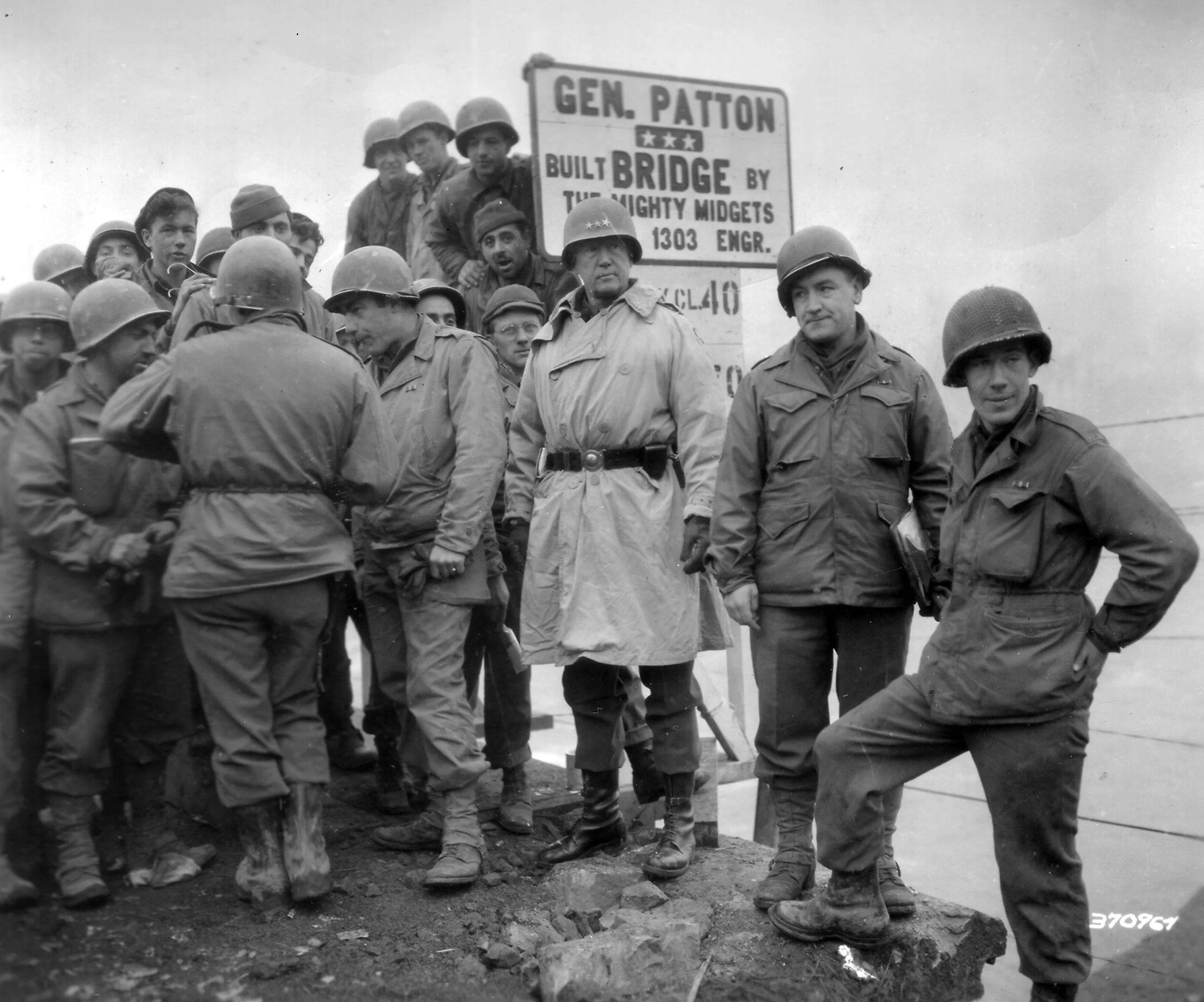 Image 15 of 15
Image 15 of 15
















Original WWII 1945 Patton’s U.S. Third Army “Insignia" Combat Theater Ring – Bolt of a German Aircraft – European Theater (Size 8)
Comes with a hand-signed C.O.A. and a full historical research write-up
From: World War II
Made By: John Cupina (Patton’s U.S. Third Army) in Germany
Dated: 1945
Ring Size: 8 (US)
Material: Bolt of a German Aircraft
Theater: European Theater
Wearable History Collection:
This authentic 1945 WWII-era ring, preserved in its original and unaltered condition, combines exceptional craftsmanship with lasting durability, making it fully suitable for modern wear today. As part of our exclusive World War II “Wearable History Ring Collection,” it offers the rare opportunity to own and wear a genuine piece of World War II. Both a timeless accessory and a tangible link to the past, this truly one-of-a-kind ring stands as a wearable tribute to the courage and sacrifice of a generation.
Historical Significance to the U.S. Third Army During WWII:
The U.S. Third Army, activated under General George S. Patton on August 1, 1944, became one of the most aggressive and effective Allied field armies of World War II. Entering combat after Operation Cobra’s breakout from Normandy, it swept across France with lightning speed, liberating towns, encircling German forces, and capturing key ports in Brittany. This rapid advance was sustained by the Red Ball Express, a massive truck convoy network that delivered vital fuel and ammunition to the front. By early September, the army pushed to the Moselle River, facing its first major stand at the fortified city of Metz. After weeks of bitter fighting, Metz fell, opening the way into the Saar and toward Germany.
In December 1944, the Third Army achieved one of its most celebrated feats during the Battle of the Bulge. Pivoting 90 degrees in just days, Patton’s forces raced over 100 miles in freezing conditions to relieve the encircled 101st Airborne Division at Bastogne, blunting the German offensive. By March 1945, the army seized a bridgehead over the Rhine at Oppenheim, bypassing heavily defended crossings and unleashing a final surge through central Germany. In its drive, the Third Army captured Frankfurt, liberated concentration camps such as Buchenwald, and advanced into Czechoslovakia, linking with Soviet forces in May.
By war’s end, the Third Army had liberated or captured over 80,000 square miles, taken more than 1.2 million prisoners, and destroyed massive enemy formations. Its campaigns, marked by speed, audacity, and relentless pressure, demonstrated masterful coordination between armor, infantry, and logistics. Patton’s Third Army not only helped break the back of the Wehrmacht but also secured its place as one of the most legendary fighting forces in American military history.
The Legacy Within This Ring:
This World War II theater-made ring, crafted in 1945 by a U.S. Third Army soldier while stationed in Germany, was formed from the salvaged aluminum of a downed German aircraft. Its creation reflects the ingenuity and personal pride of soldiers in the aftermath of war, transforming wreckage from a former enemy into a wearable piece of history. Forged in the closing days of the European campaign, the ring carries the essence of victory and remembrance. Each mark and curve speaks to the resourceful spirit of its maker, turning the spoils of battle into a personal emblem of service. More than just a keepsake, it is a preserved fragment of the Third Army’s legendary march across Europe. It embodies the soldier’s journey from the battlefields of France and the relief of Bastogne to the final push into the heart of Germany, serving as a silent testament to courage, perseverance, and the transformation of war’s remnants into symbols of resilience and legacy.
Comes with a hand-signed C.O.A. and a full historical research write-up
From: World War II
Made By: John Cupina (Patton’s U.S. Third Army) in Germany
Dated: 1945
Ring Size: 8 (US)
Material: Bolt of a German Aircraft
Theater: European Theater
Wearable History Collection:
This authentic 1945 WWII-era ring, preserved in its original and unaltered condition, combines exceptional craftsmanship with lasting durability, making it fully suitable for modern wear today. As part of our exclusive World War II “Wearable History Ring Collection,” it offers the rare opportunity to own and wear a genuine piece of World War II. Both a timeless accessory and a tangible link to the past, this truly one-of-a-kind ring stands as a wearable tribute to the courage and sacrifice of a generation.
Historical Significance to the U.S. Third Army During WWII:
The U.S. Third Army, activated under General George S. Patton on August 1, 1944, became one of the most aggressive and effective Allied field armies of World War II. Entering combat after Operation Cobra’s breakout from Normandy, it swept across France with lightning speed, liberating towns, encircling German forces, and capturing key ports in Brittany. This rapid advance was sustained by the Red Ball Express, a massive truck convoy network that delivered vital fuel and ammunition to the front. By early September, the army pushed to the Moselle River, facing its first major stand at the fortified city of Metz. After weeks of bitter fighting, Metz fell, opening the way into the Saar and toward Germany.
In December 1944, the Third Army achieved one of its most celebrated feats during the Battle of the Bulge. Pivoting 90 degrees in just days, Patton’s forces raced over 100 miles in freezing conditions to relieve the encircled 101st Airborne Division at Bastogne, blunting the German offensive. By March 1945, the army seized a bridgehead over the Rhine at Oppenheim, bypassing heavily defended crossings and unleashing a final surge through central Germany. In its drive, the Third Army captured Frankfurt, liberated concentration camps such as Buchenwald, and advanced into Czechoslovakia, linking with Soviet forces in May.
By war’s end, the Third Army had liberated or captured over 80,000 square miles, taken more than 1.2 million prisoners, and destroyed massive enemy formations. Its campaigns, marked by speed, audacity, and relentless pressure, demonstrated masterful coordination between armor, infantry, and logistics. Patton’s Third Army not only helped break the back of the Wehrmacht but also secured its place as one of the most legendary fighting forces in American military history.
The Legacy Within This Ring:
This World War II theater-made ring, crafted in 1945 by a U.S. Third Army soldier while stationed in Germany, was formed from the salvaged aluminum of a downed German aircraft. Its creation reflects the ingenuity and personal pride of soldiers in the aftermath of war, transforming wreckage from a former enemy into a wearable piece of history. Forged in the closing days of the European campaign, the ring carries the essence of victory and remembrance. Each mark and curve speaks to the resourceful spirit of its maker, turning the spoils of battle into a personal emblem of service. More than just a keepsake, it is a preserved fragment of the Third Army’s legendary march across Europe. It embodies the soldier’s journey from the battlefields of France and the relief of Bastogne to the final push into the heart of Germany, serving as a silent testament to courage, perseverance, and the transformation of war’s remnants into symbols of resilience and legacy.
